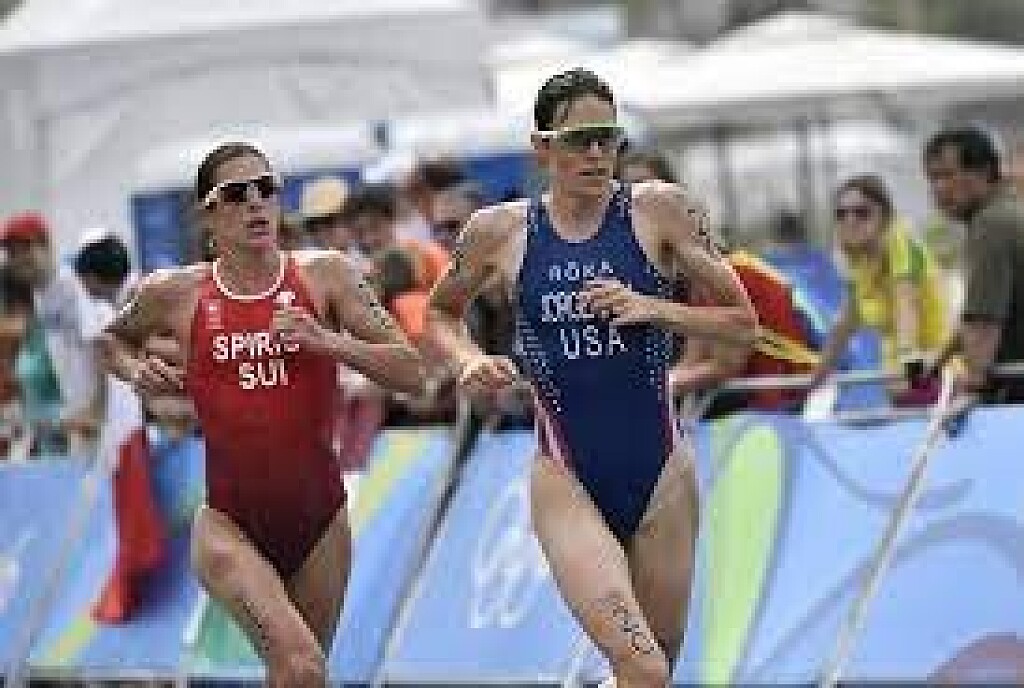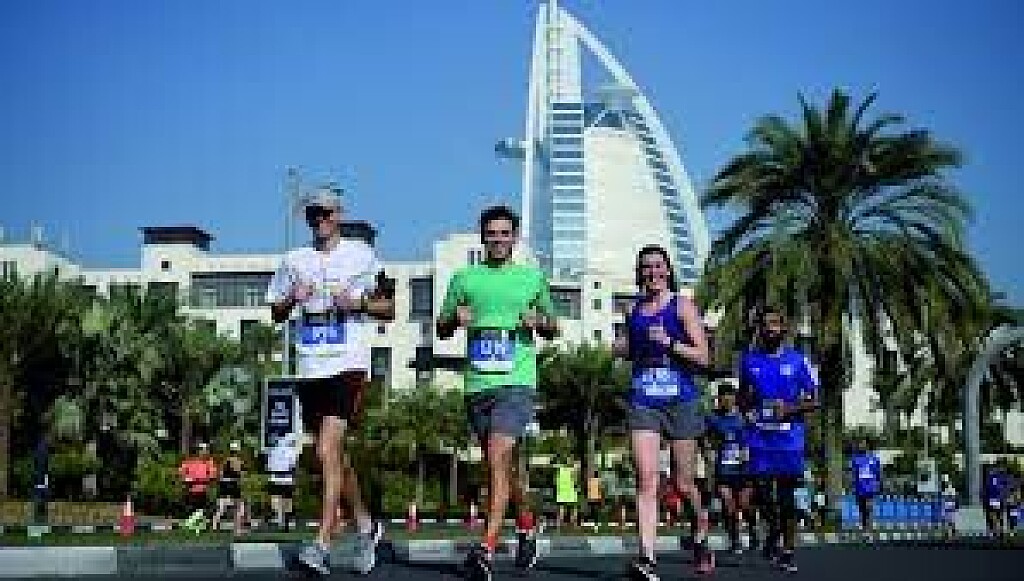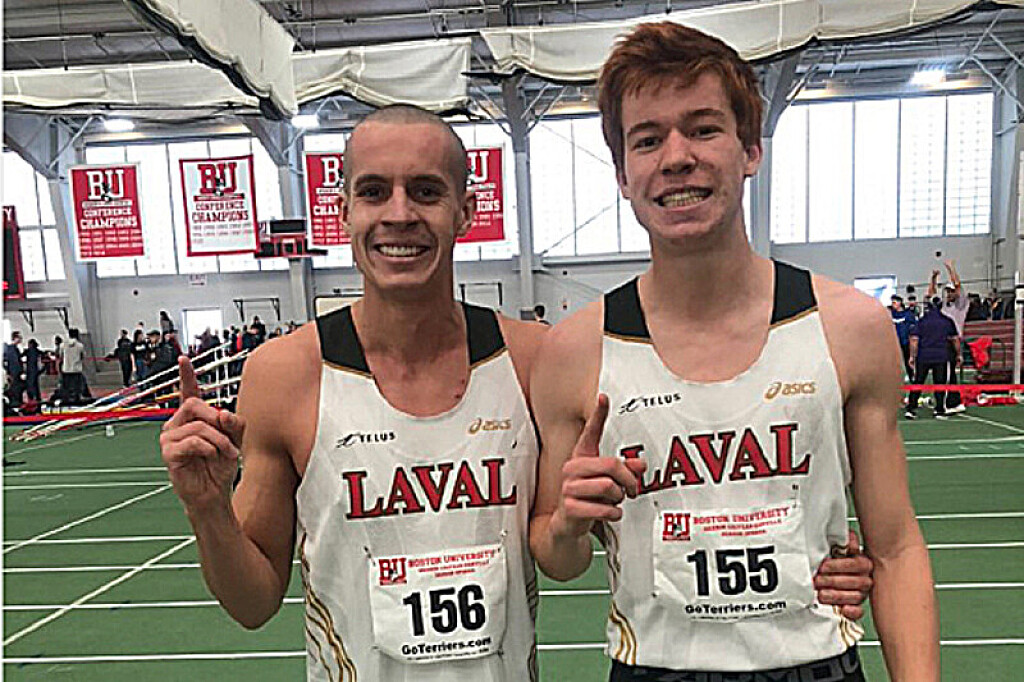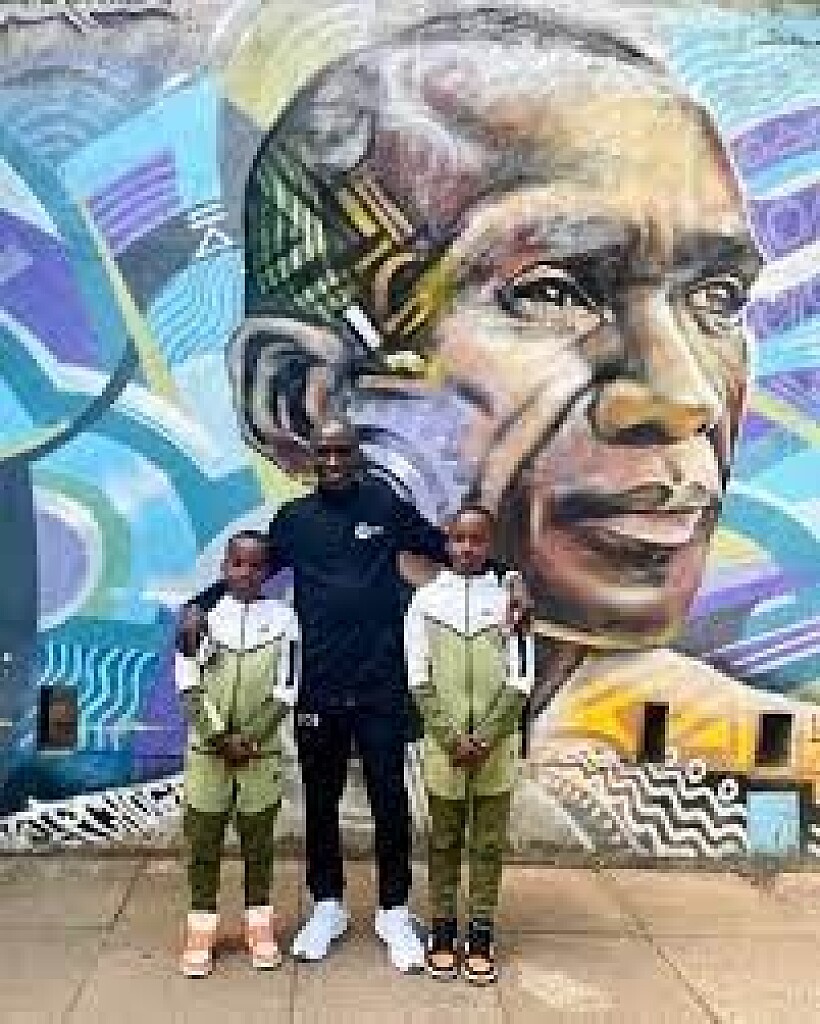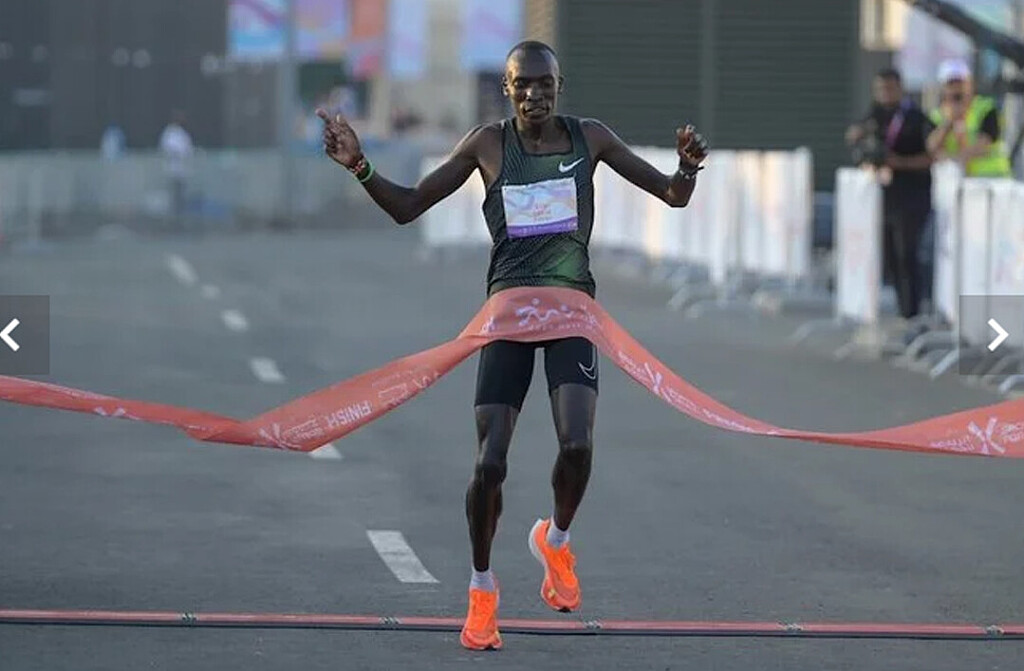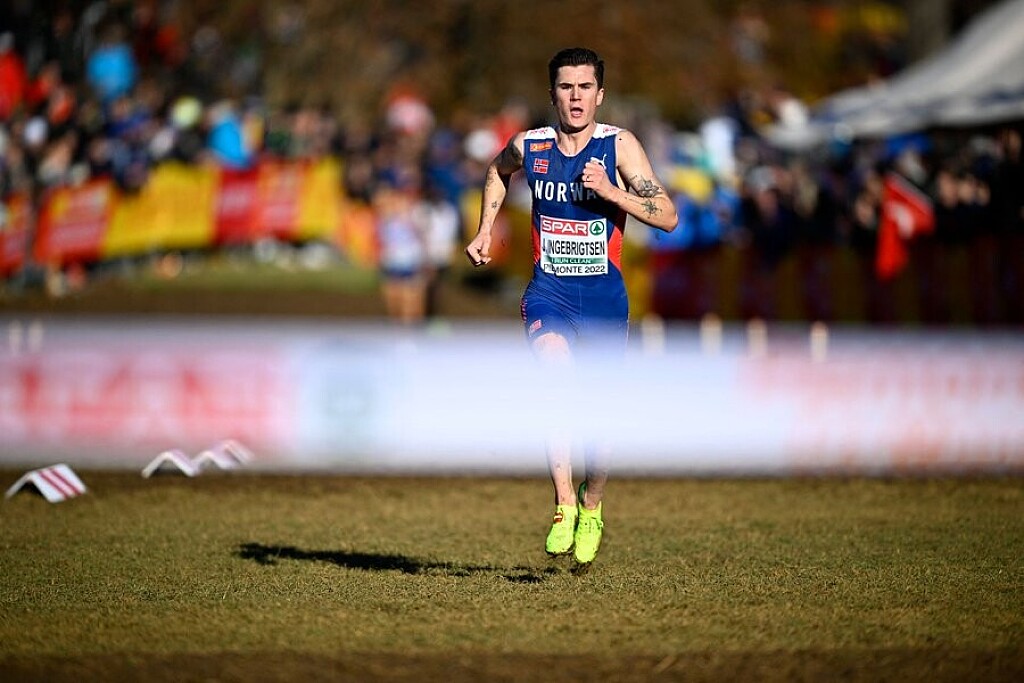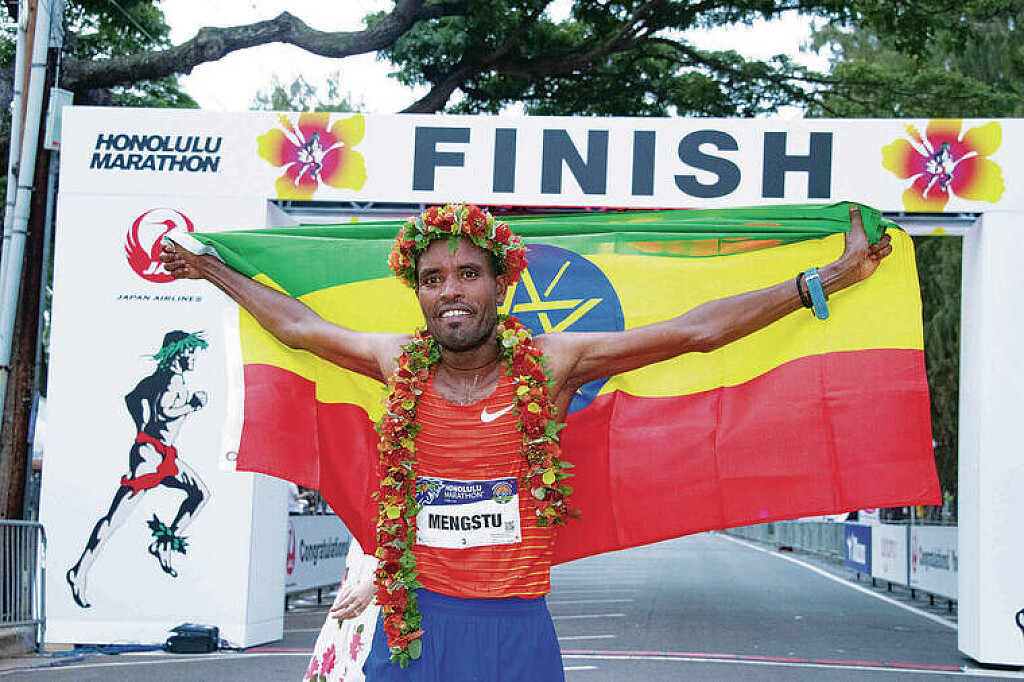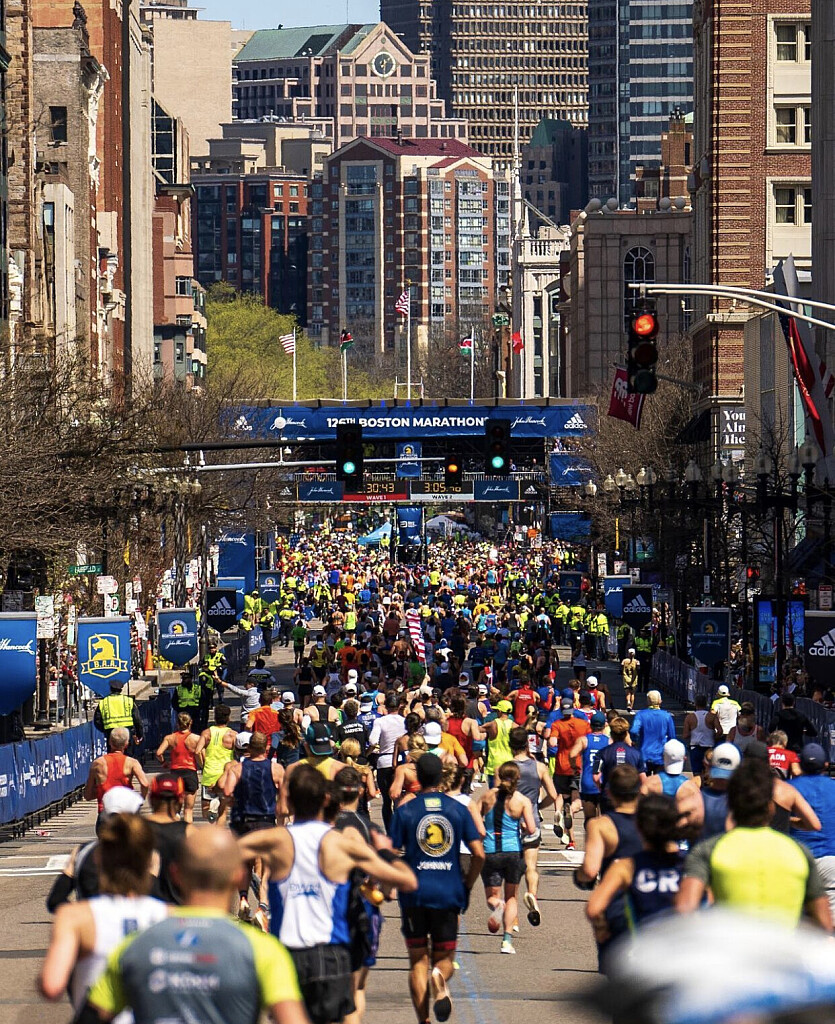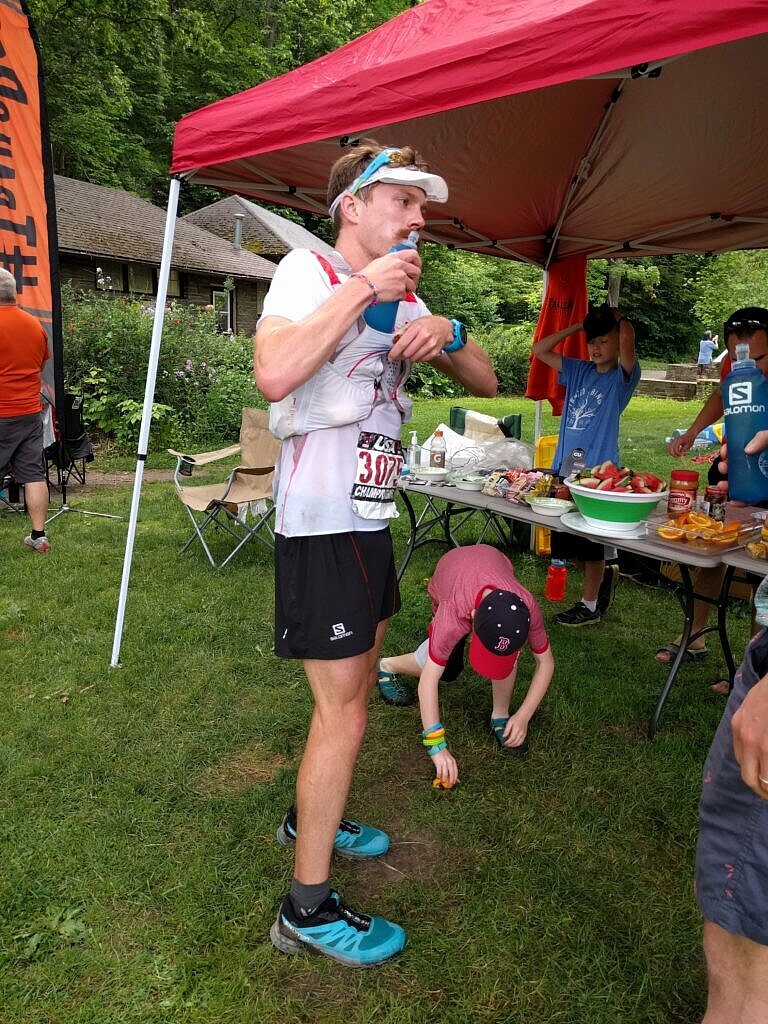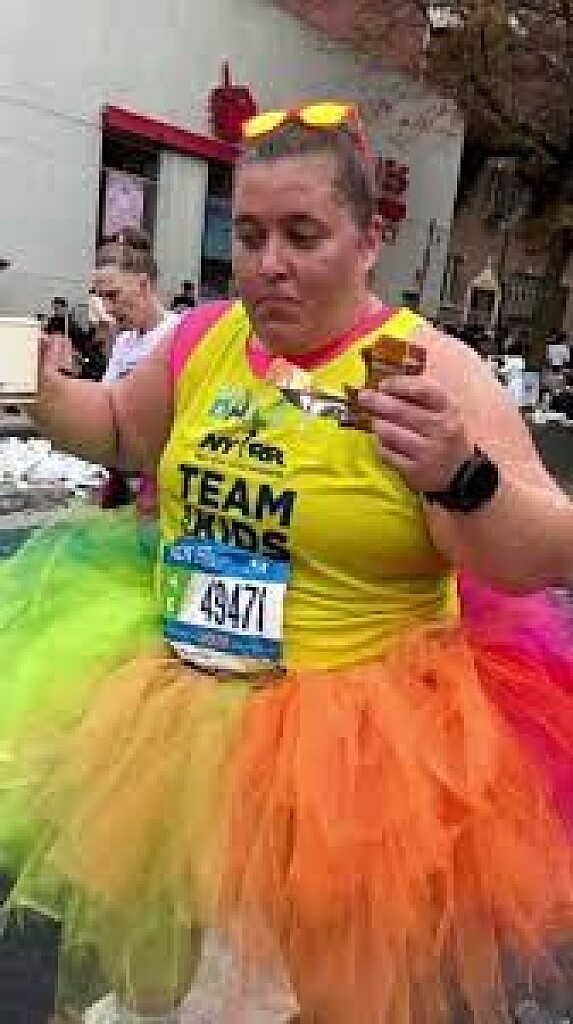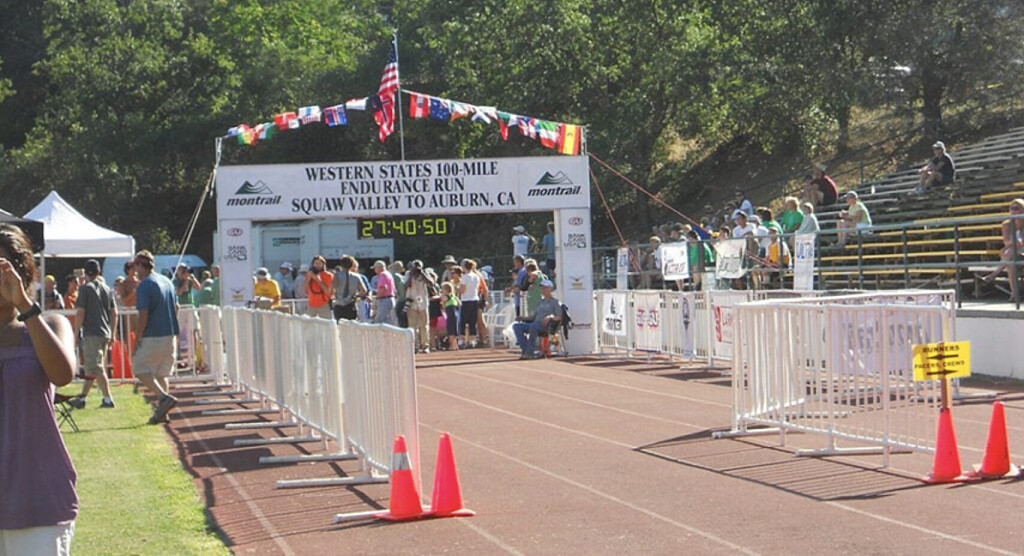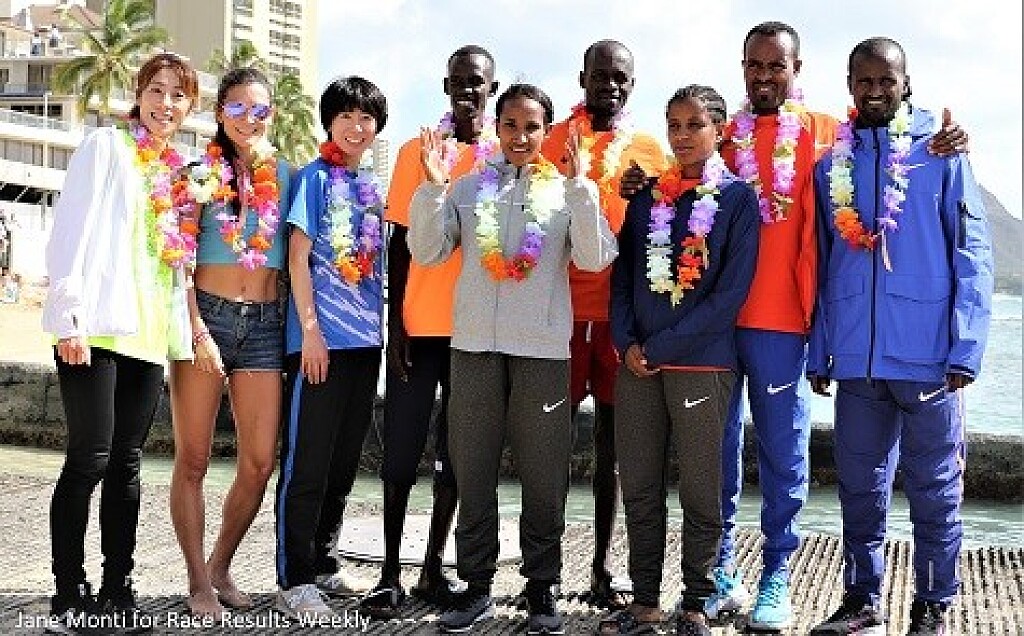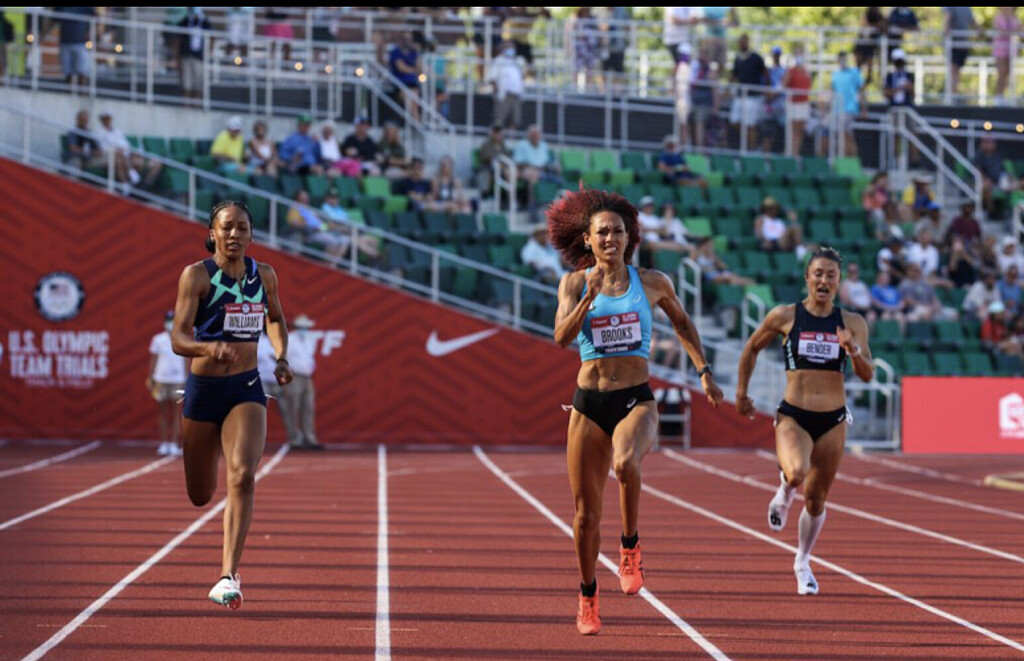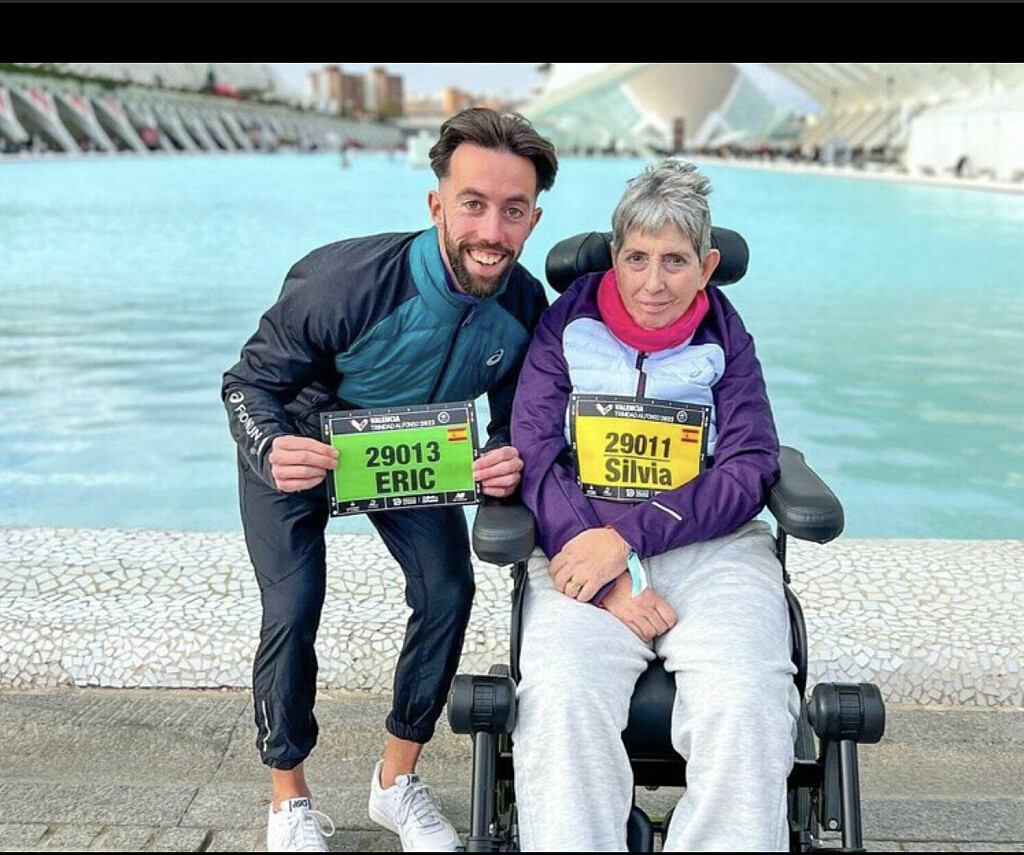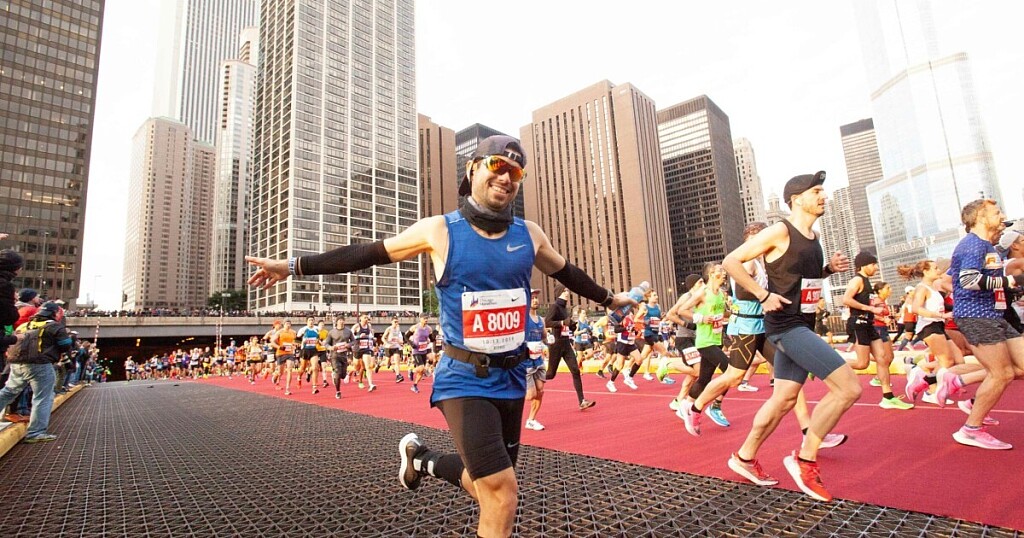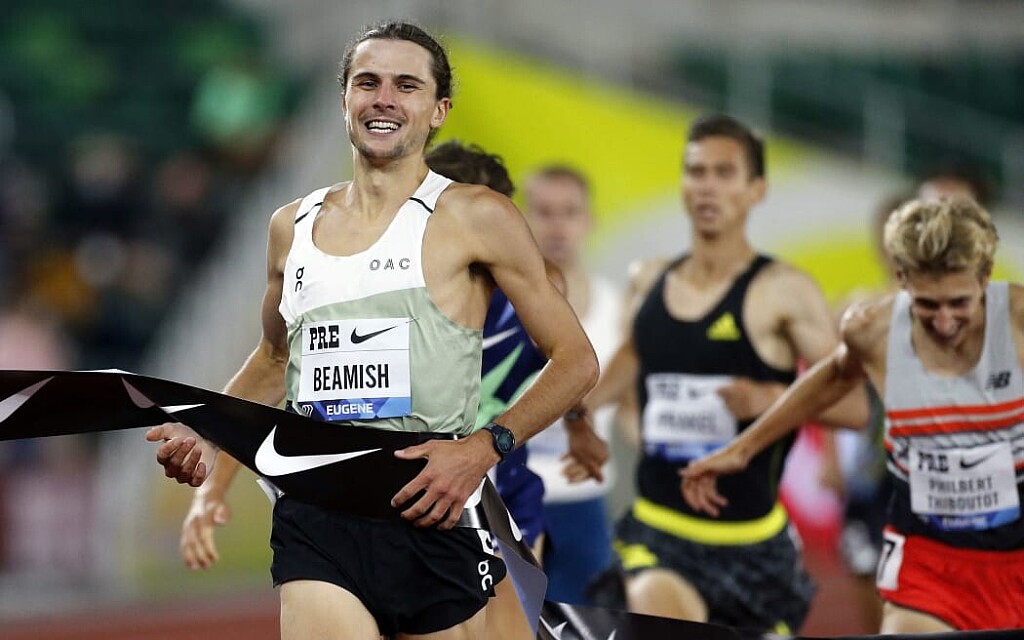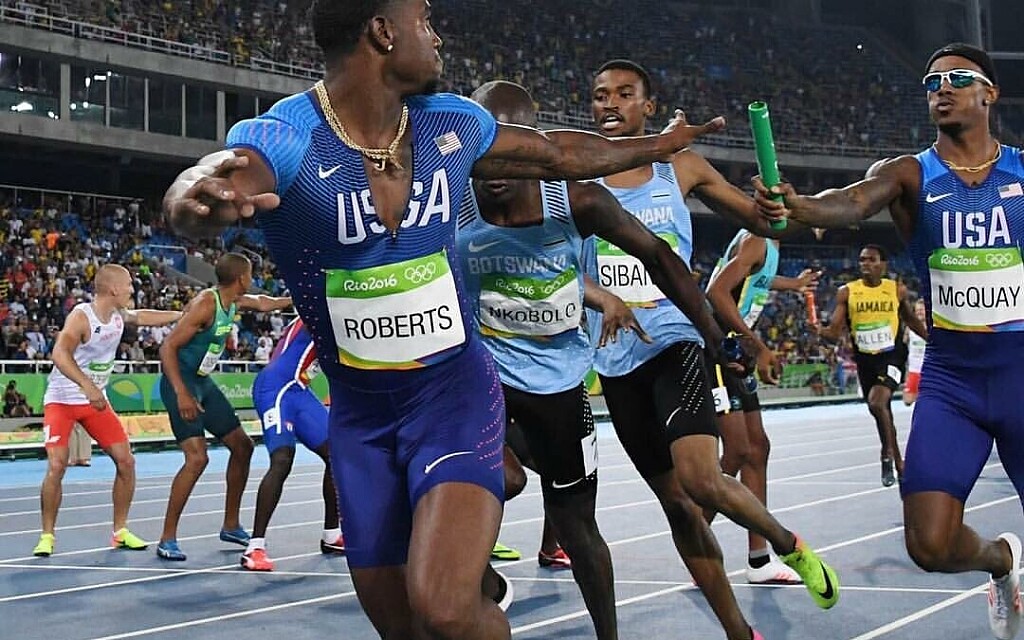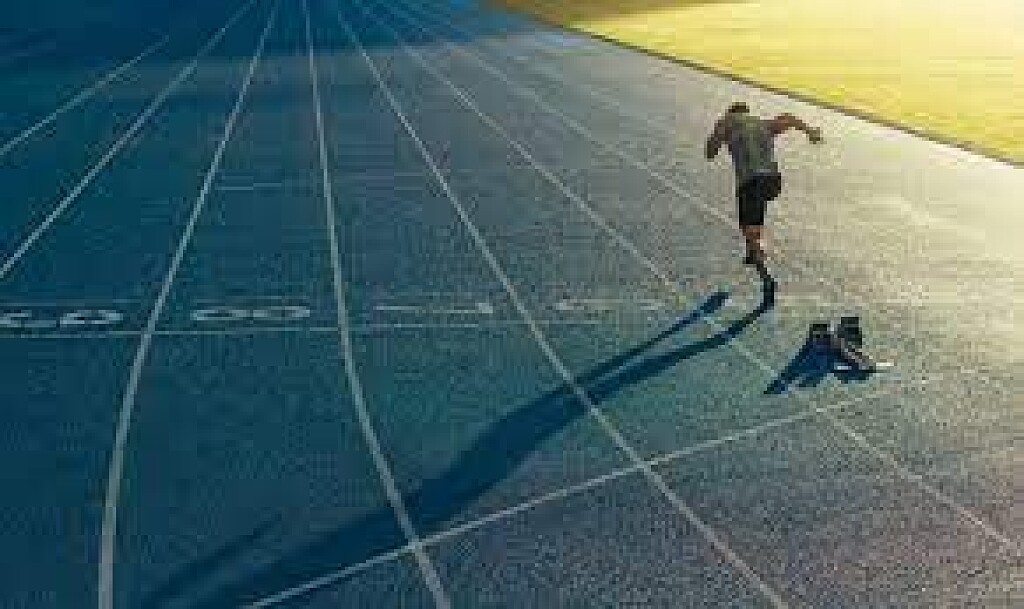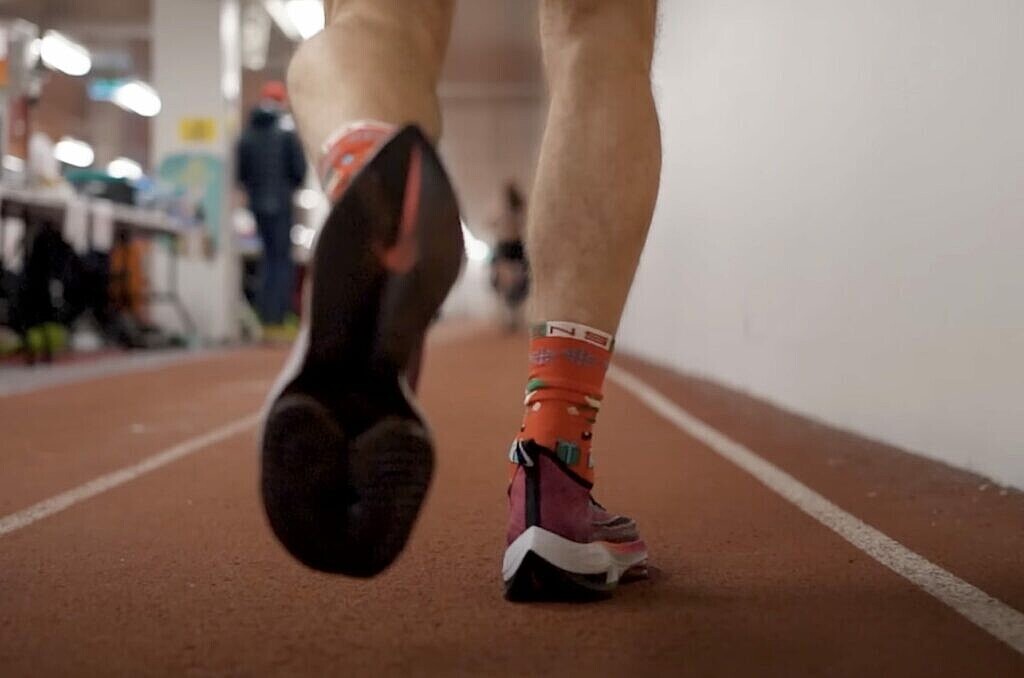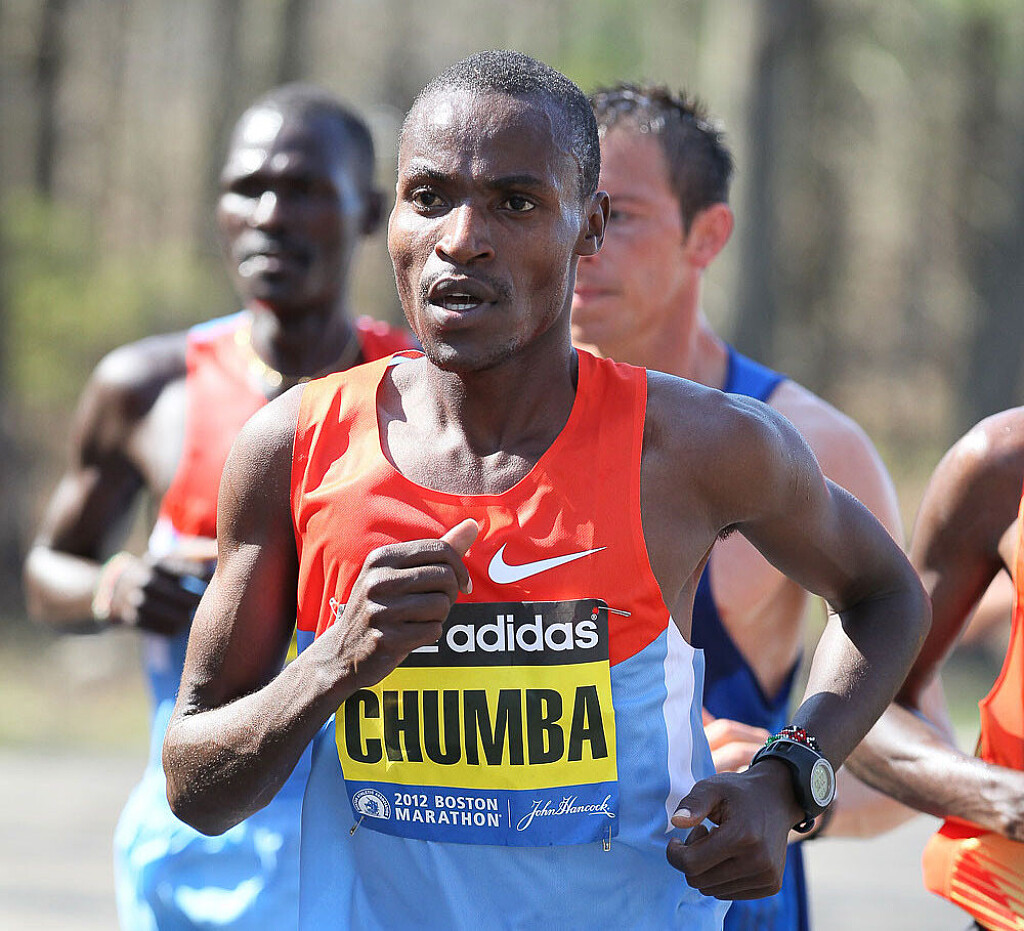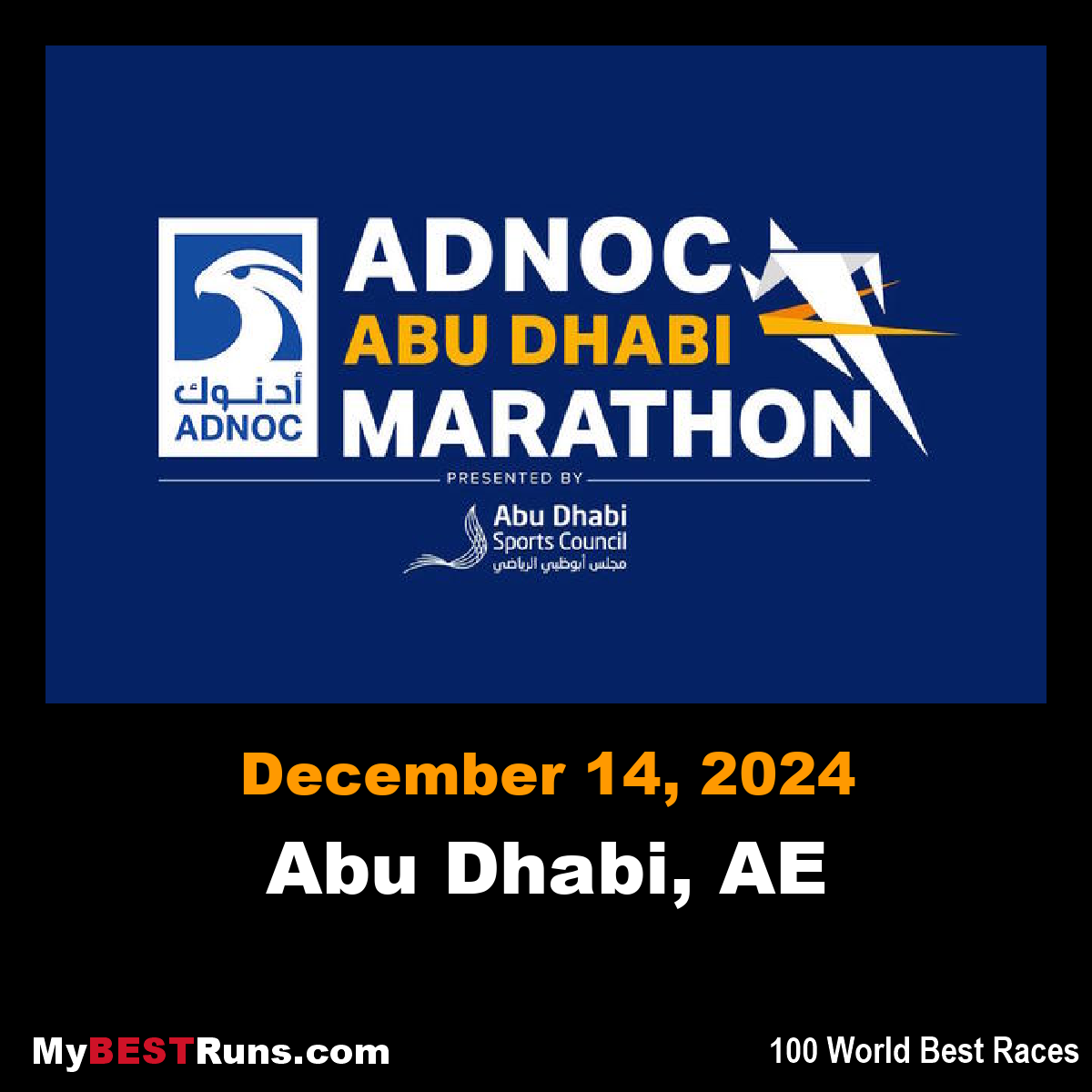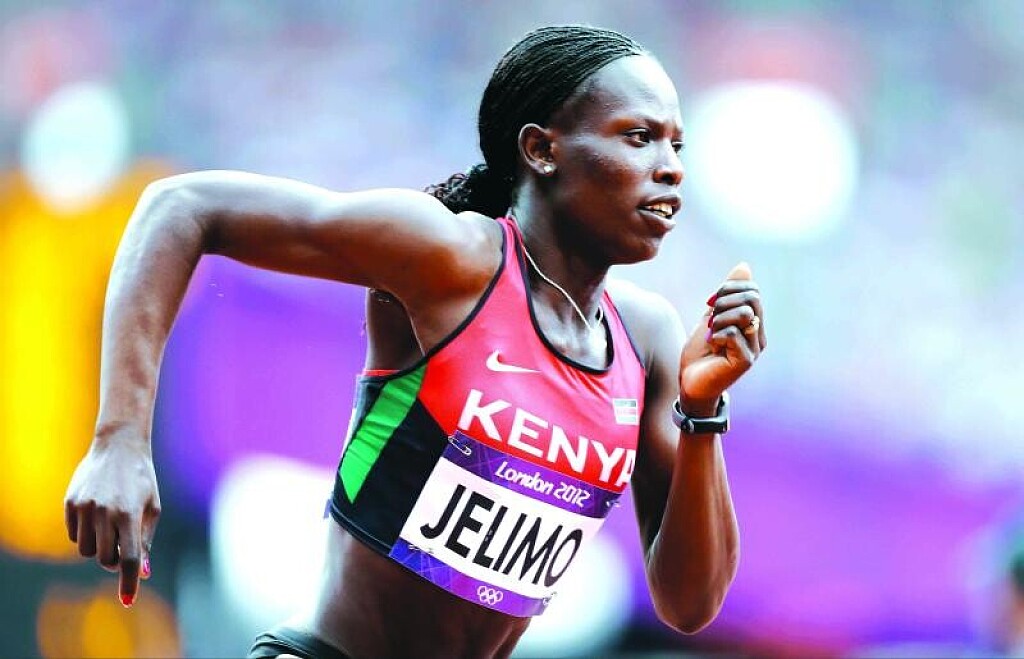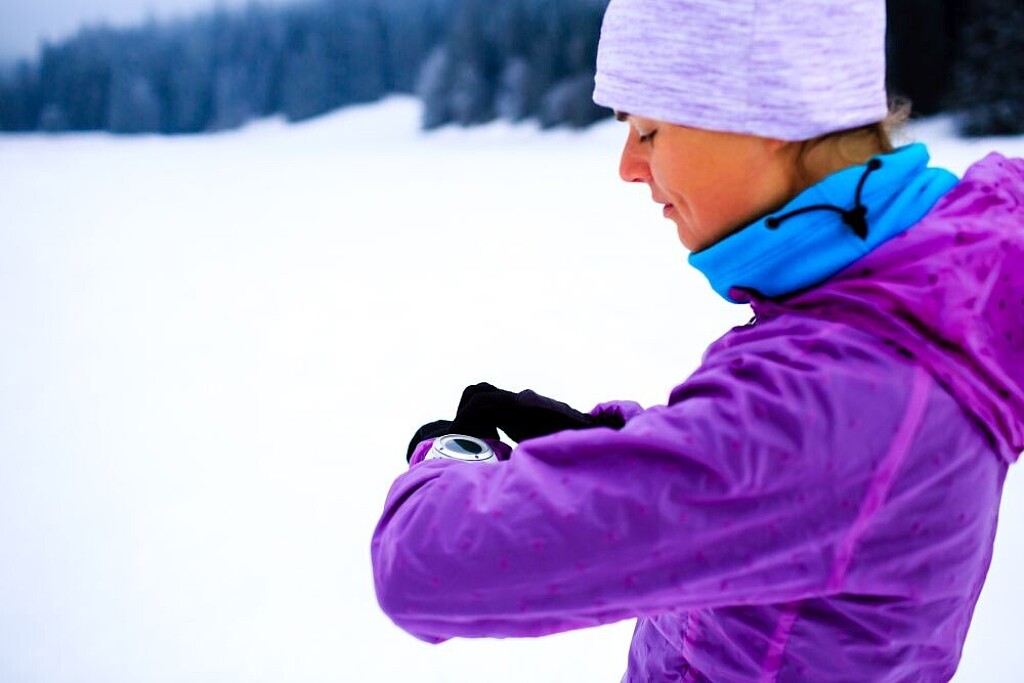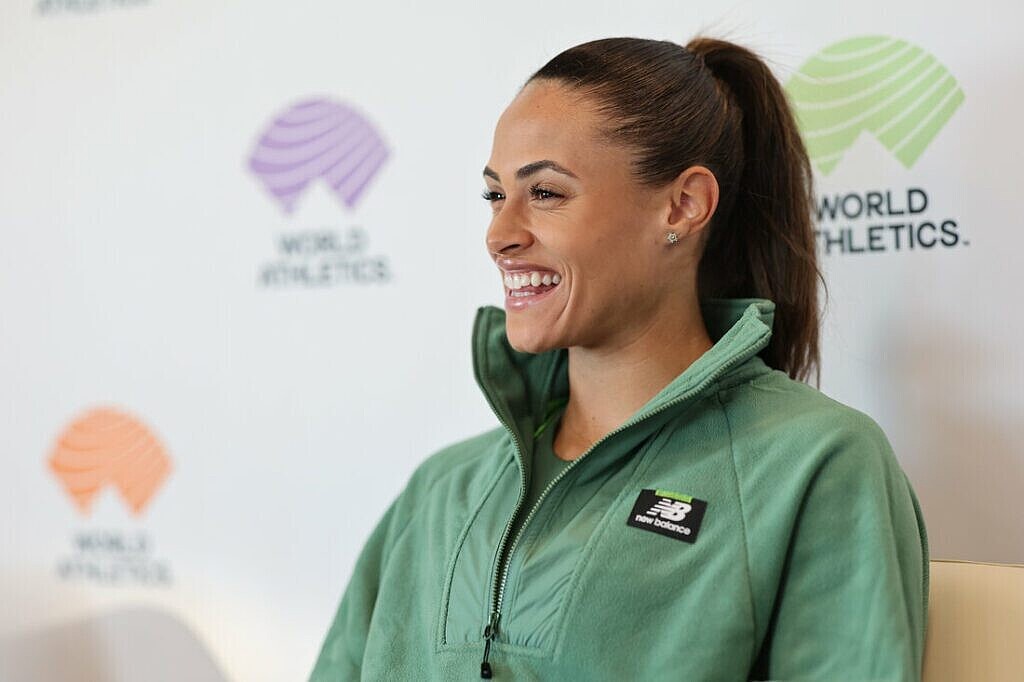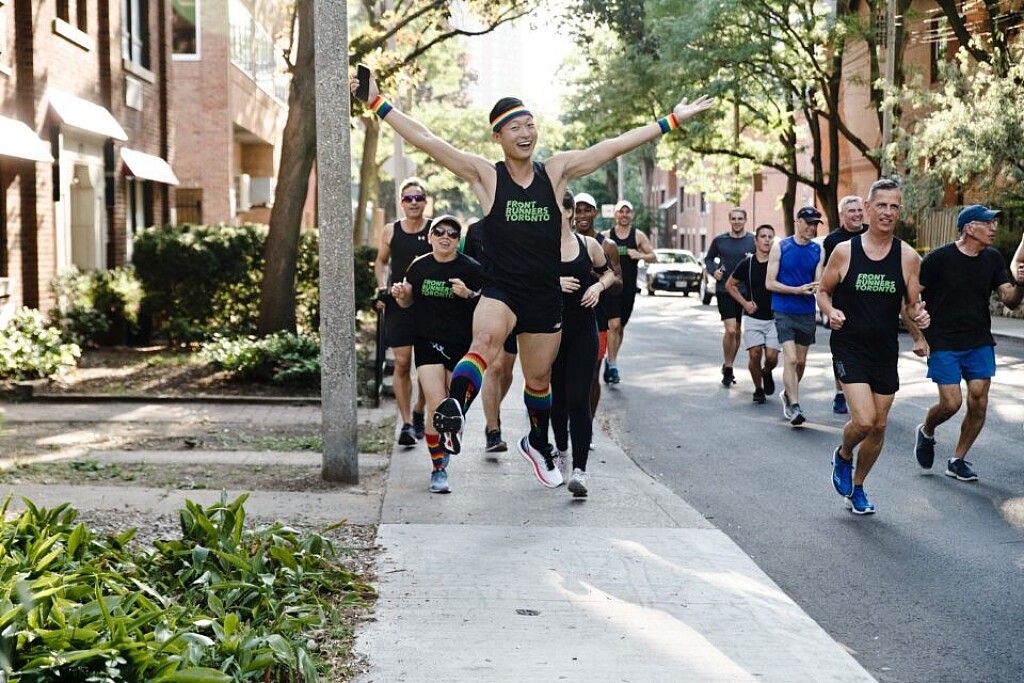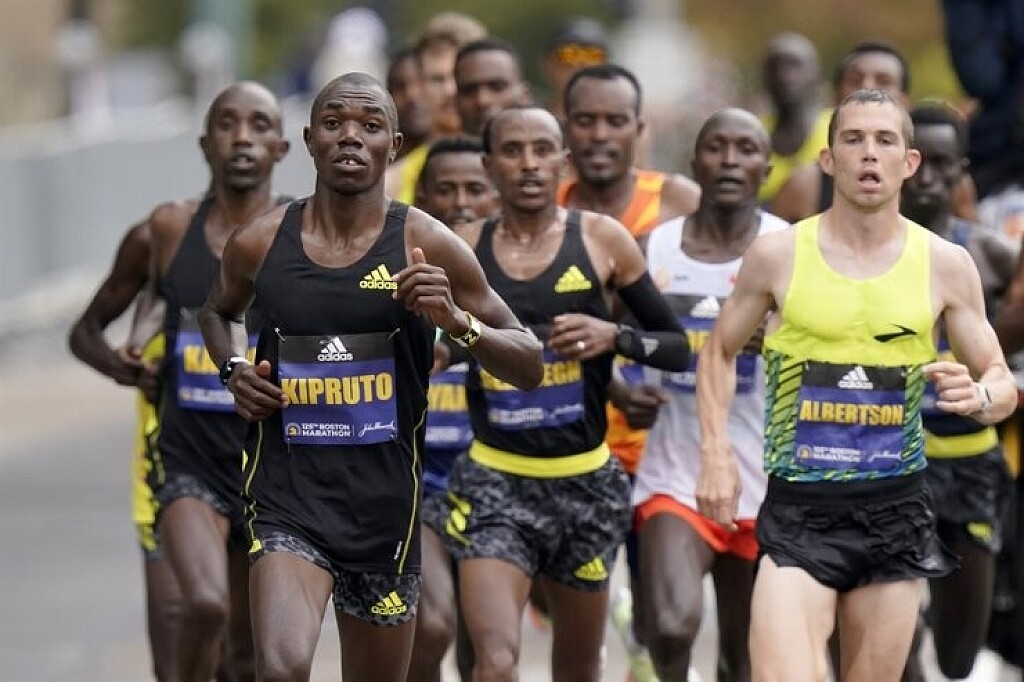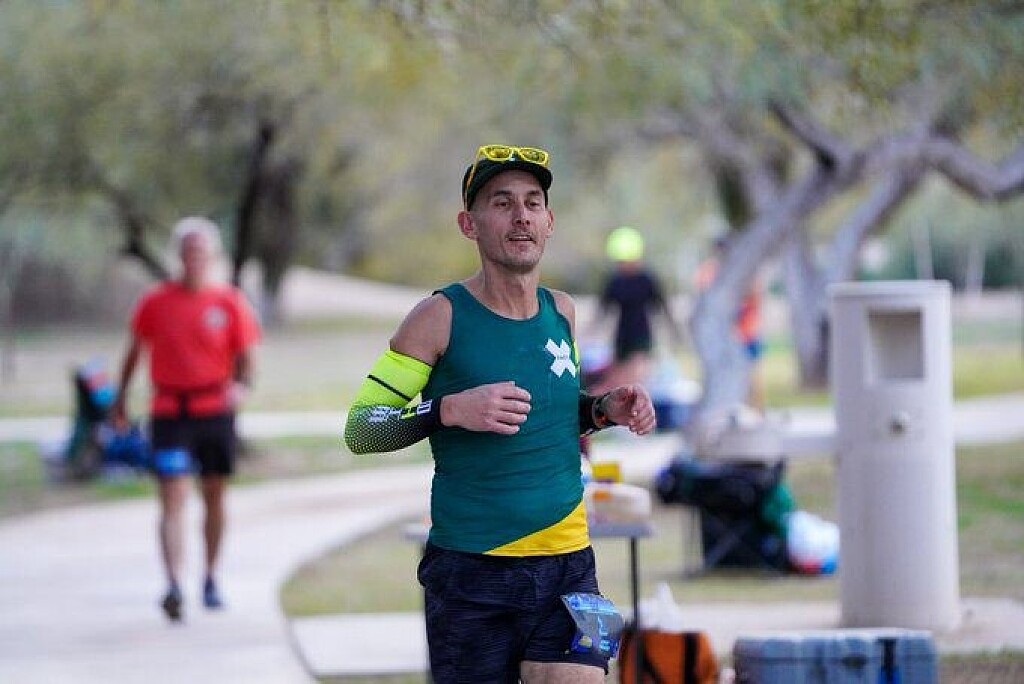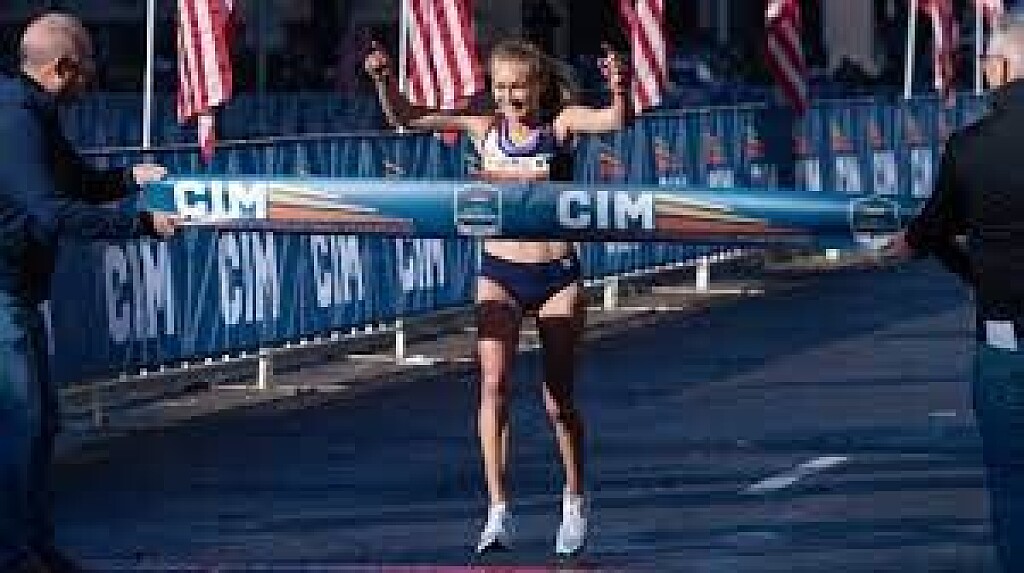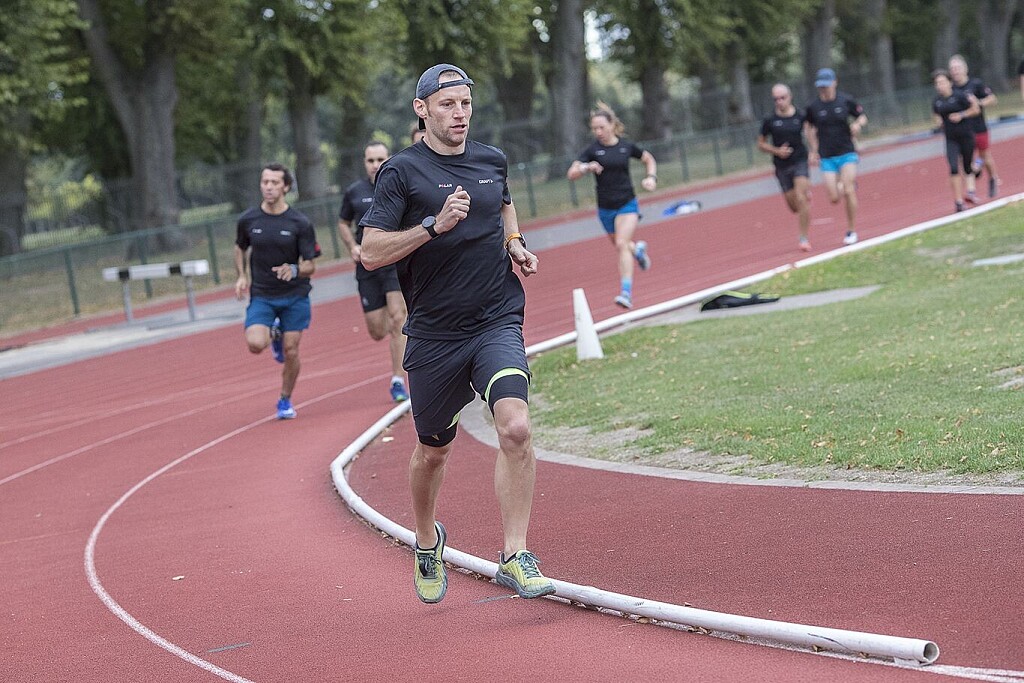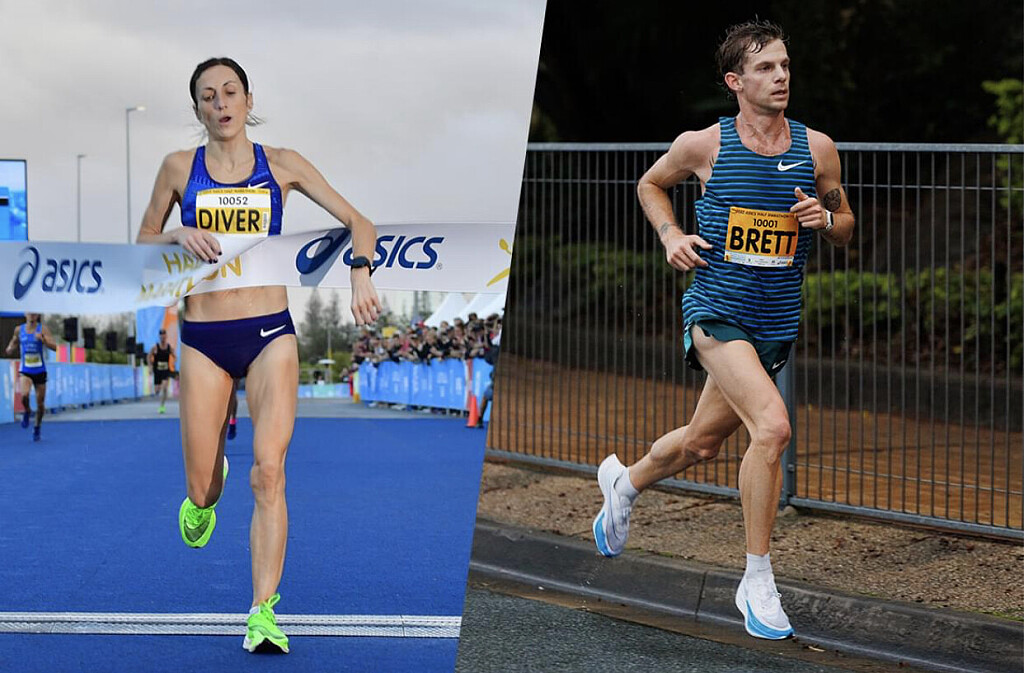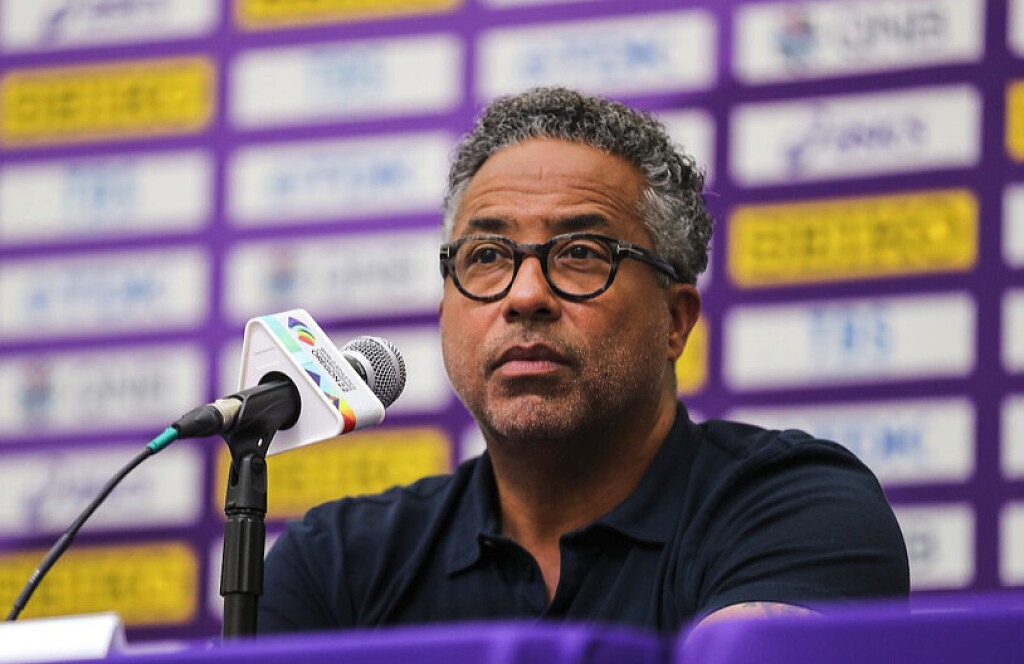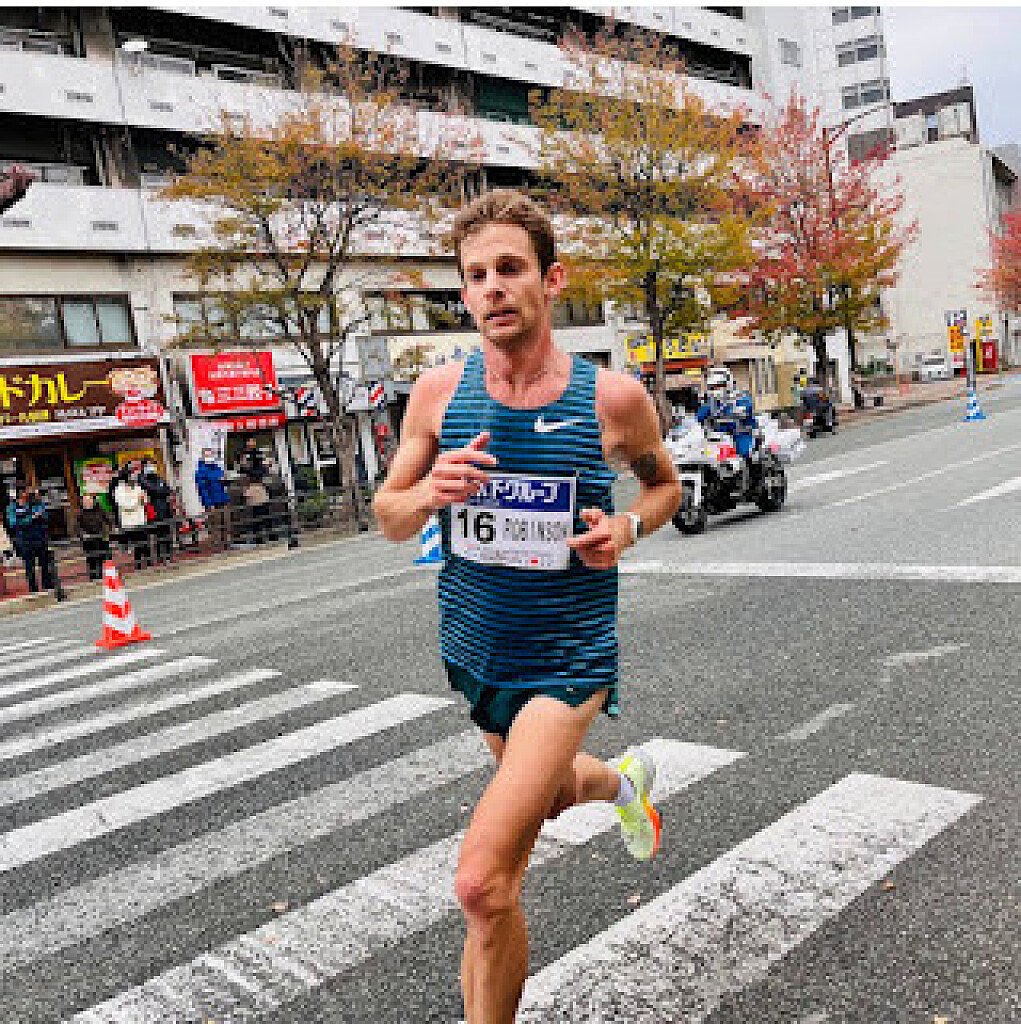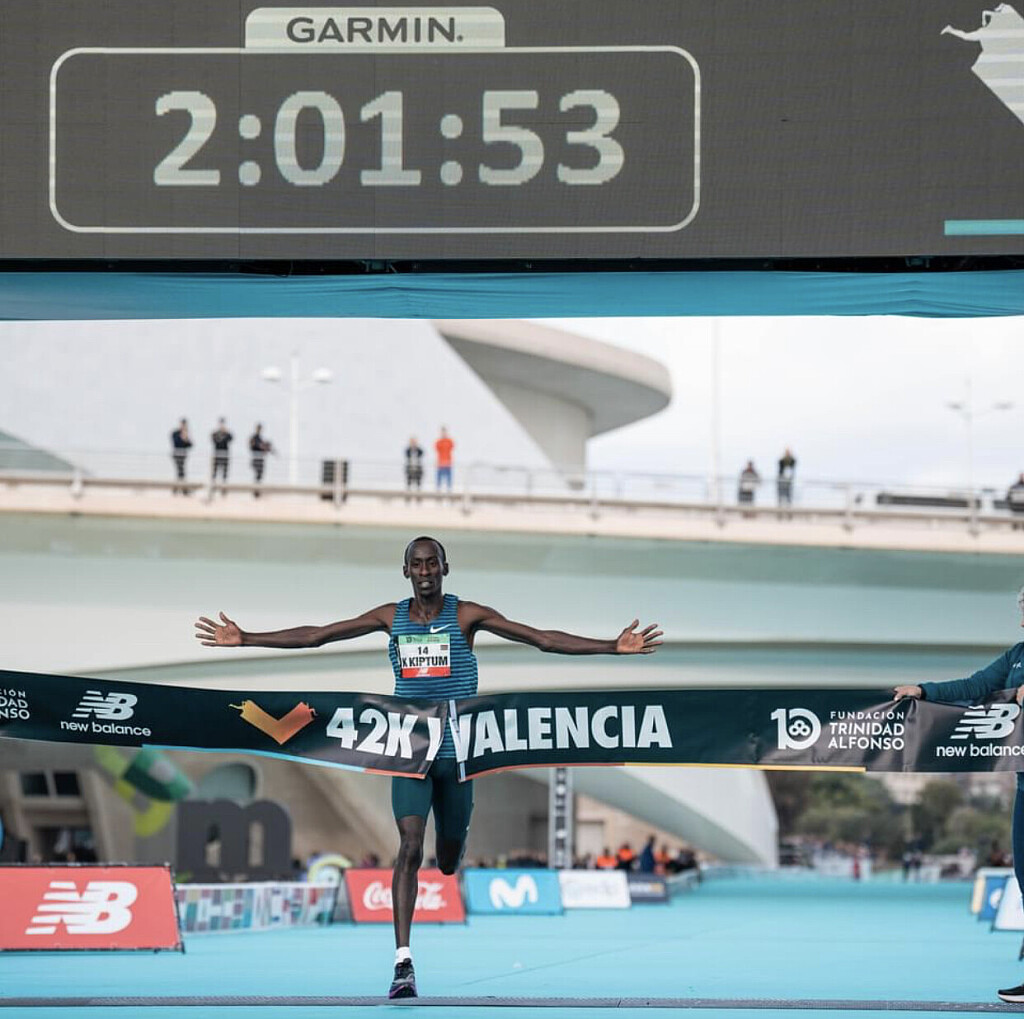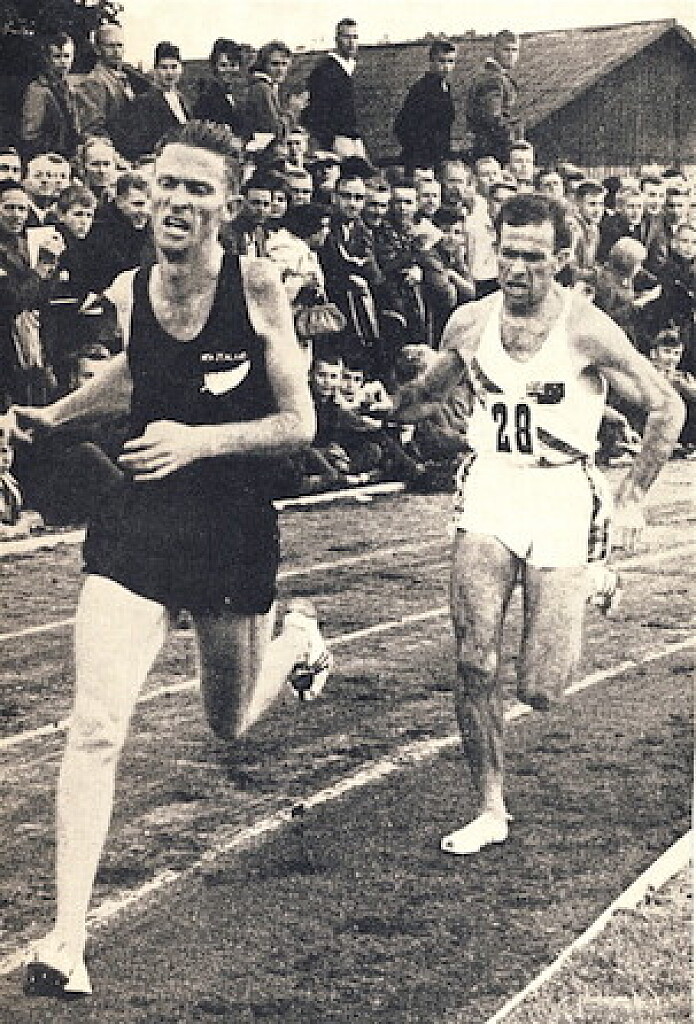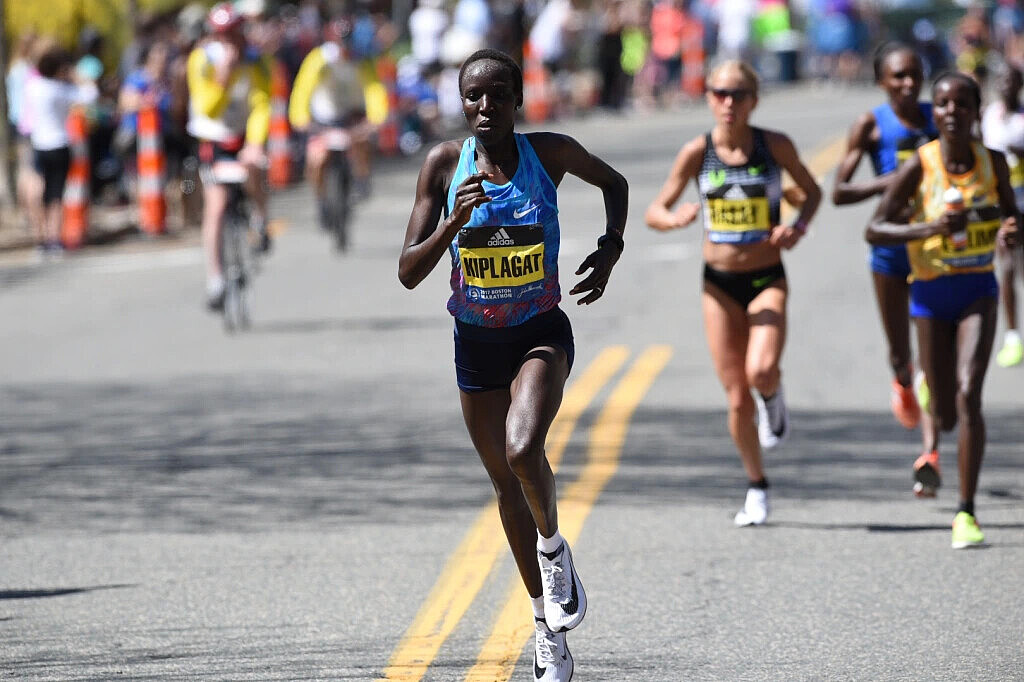Running News Daily
Running News Daily is edited by Bob Anderson in Mountain View, California USA and team in Thika Kenya, La Piedad Mexico, Bend Oregon, Chandler Arizona and Monforte da Beira Portugal. Send your news items to bob@mybestruns.com Advertising opportunities available. Over one million readers and growing. Train the Kenyan Way at KATA Running Retreat Kenya. (Kenyan Athletics Training Academy) in Thika Kenya. Opening in june 2024 KATA Running retreat Portugal. Learn more about Bob Anderson, MBR publisher and KATA director/owner, take a look at A Long Run the movie covering Bob's 50 race challenge.
Index to Daily Posts · Sign Up For Updates · Run The World Feed
Gwen Jorgensen to make shock triathlon comeback ahead of Paris 2024
The 2016 Olympic champion Gwen Jorgensen has announced a surprise return to triathlon – with the Mixed Team Relay at the Paris Olympics in 2024 her primary target.
The American was a legend of the sport, becoming what was then the ITU World Triathlon Champion in both 2014 and 2015 in addition to her Olympic title, the USA’s first ever triathlon gold medal.
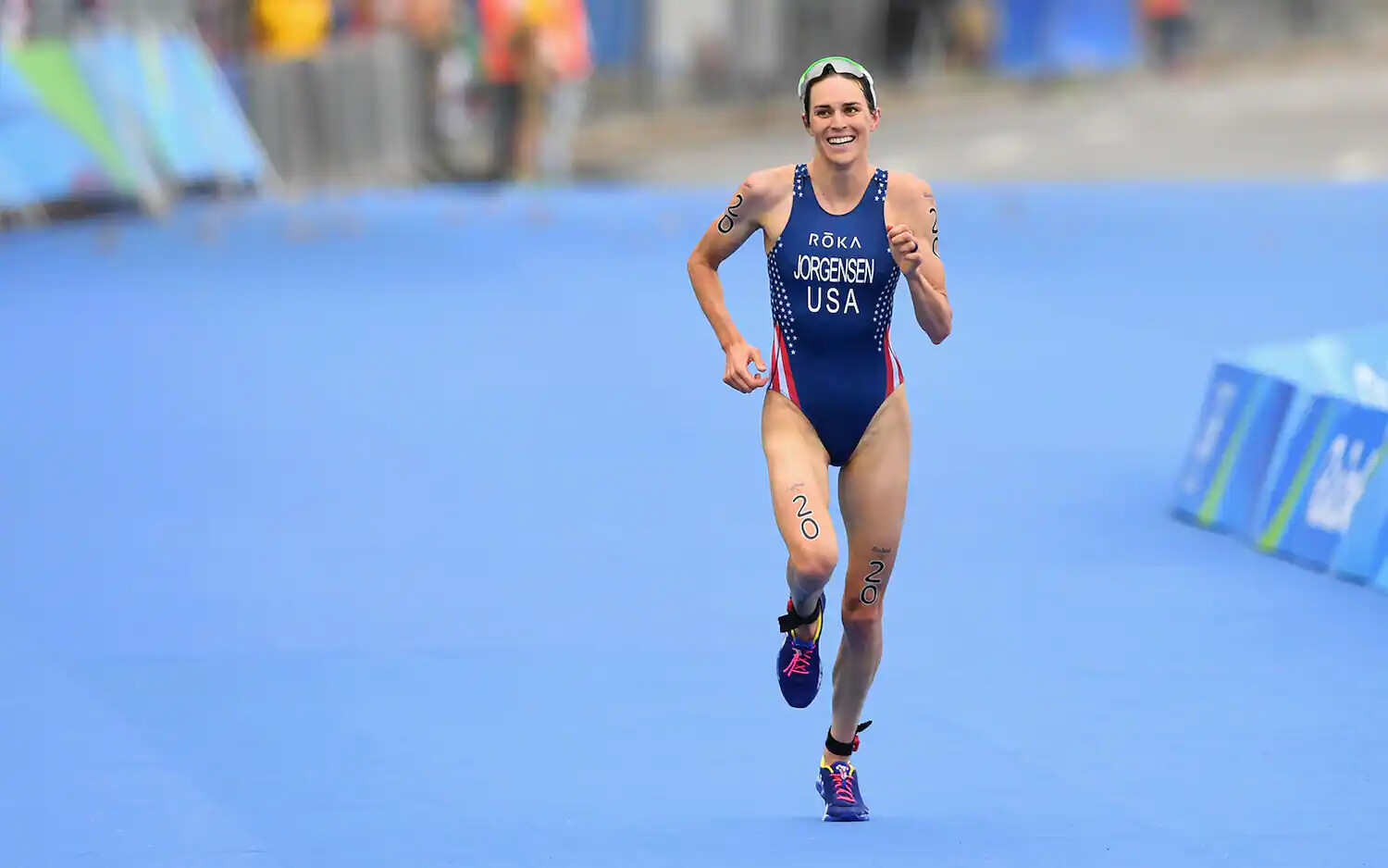
She announced her retirement late in 2017, with her focus then switching to running and trying to win an Olympic Marathon title in Tokyo but injuries hampered that and she recently gave birth to her second child, George, who is a younger brother to five-year-old Stanley.
Inspired – and inspiring
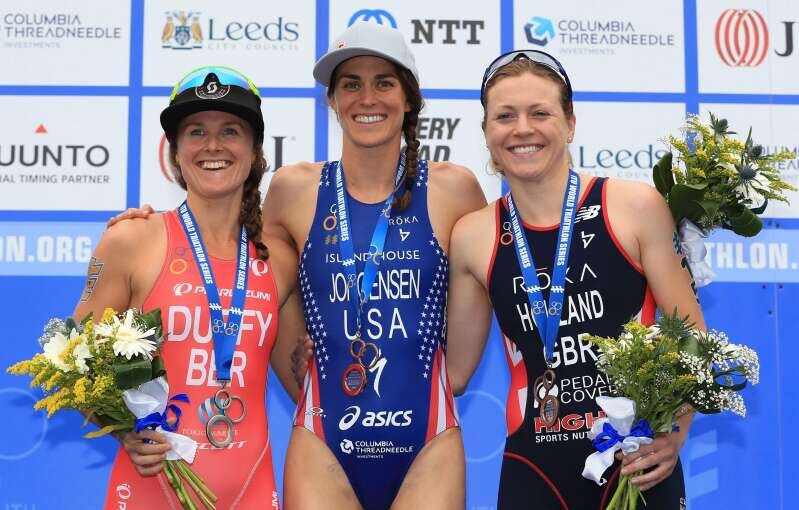
She revealed her shock comeback to swim / bike / run on her social media channels, posting on Instagram: “I am thrilled to announce my return to the blue carpet. I’m collaborating with my team to return to form and look forward to the work ahead as I invest in myself and USA Triathlon.
“I am inspired by the mixed-team relay’s silver medal in Tokyo and aspire to contribute to that team in 2024. I believe team USA can be one step higher in Paris!
“As a mom of two and long-time supporter of USA Triathlon, I strive to set an example that motivates and inspires my family, moms everywhere, and team USA.”
And World Triathlon responded immediately to the news, saying: “We are thrilled to welcome you back on the blue carpet Gwen Jorgensen.”
Going into more detail on a YouTube video, embedded below, she added: “I’m coming back to World Triathlon – what was then ITU – but what I’m really excited about is the Mixed Team Relay, which wasn’t an event at the 2016 Olympics.
“That is what is really motivating me to come back to triathlon. The Olympics are coming up really quick and the timeline is super short.
“There is a qualifying event in August 2023 and for me to even get on that startline is going to be super difficult so I’m probably going to be forced to race earlier than I’d like to but… I just gotta dive in and get started.”
The USA can qualify three women for the Olympics, with the likes of Taylor Knibb and Taylor Spivey two of the leading current contenders – and Jorgensen will have to race the individual to be in contention for the Mixed Team Relay (which features two women and two men).
‘Having kids doesn’t mean your career is over’
She speaks candidly about the practicalities of looking after her two children while fitting in her training and explained that an au pair will help with that process.
“I always thought I couldn’t be a mum and an athlete and it was other women who actually inspired me and let me know that I actually can do both.
“Nicola Spirig was probably the biggest motivator for me. She got silver at the 2016 Olympics having had a child. And then she had two more kids and came back and went to the Tokyo Olympics.
“She was a big motivator showing me that having kids doesn’t mean your career is over.”
There have been other inspiring examples too, highlighted by Chelsea Sodaro winning the IRONMAN World Championship at Kona this year, 18 months after giving birth to her first child.
(12/13/2022) ⚡AMPby Jonathan Turner
3598
2023 Dubai Marathon set for grand return in February
The Dubai Marathon will make a grand comeback after a gap of over 1,000 days when the region’s oldest long-distance running event gets under way on February 12, 2023.
The 22nd Dubai Marathon, one of the fastest distance races in international road racing, is all set to attract elite athletes from around the world for the marathon and the associated races — 10km road race and 4km Fun Run.
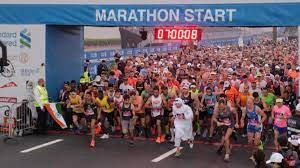
“The feedback from the industry is that competitors are eager to join us on the start line on February 12,” said Peter Connerton, managing director of Pace Events, organisers and promoters of the Dubai Marathon. “The world has changed considerably since we last staged the event in the weeks before the global pandemic but the appetite for running and fitness remains healthy."
“Race registrations continue to remain at pre-pandemic level and runners who wish to challenge themselves in one of our three races can still secure a place in the category of their choice by registering through the official website."
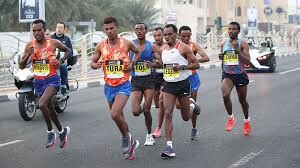
The event will be staged on a Sunday for the first time in history following the change in the UAE working week. The Dubai Marathon and its accompanying races will start and finish around the Burj Al Arab and Madinat Jumeirah.
"It’s been a very challenging time for the sports events industry, so we’re excited to work closely with the appropriate Dubai Government departments to stage another memorable race," added Connerton.
“In addition, we’ve been in discussions with a number of major name brands and potential partners as to how we can further develop the event for the benefit of the city and our participants. We hope to be able to announce some exciting new partnerships for the race in the days to come. These are busy times with less than ten weeks to go to the big day on February 12.”
Those interested in participating in the race can do so by registering on dubaimarathon.org.
The Dubai Marathon was set for a December return. However, logistical challenges posed by the Fifa World Cup saw the organisers decide to hold the event early next year.
The race was last held in January 2020 where Ethiopians dominated the field once again.
Worknesh Degefa clinched the women’s title with a time of 2:19.37, while in the men’s section Olika Adugna Bikila emerged victorious with a time of 2:06.15.
(12/13/2022) ⚡AMPDubai Marathon
In its relatively brief history (the race was first held in 2000), the Dubai Marathon has become one of the fastest, most respected and the most lucrative marathon in the world in terms of prize money. Each year thousands of runners take to the roads in this beautiful city in the United Arab Emirates (UAE) for this extraordinary race starting...
more...If you're keen to try more plant-based meals, use these tips to keep protein intake high
Supporting an active lifestyle with plant-based nutrition is an increasingly hot topic, as more elite and regular runners have started to make a shift. Whatever your reasons for adding more plant-based meals into your diet, getting adequate protein to fuel your running is key to staying healthy, building strength and recovering well. We have some tips from the experts on how to keep your protein levels up if you are cutting down on meat.
If you’re curious about plant-based eating, registered dieticians Matt Ruscigno and Enette Larson-Meyer, coauthors of Plant-Based Sports Nutrition, suggest making a gradual transition, giving yourself time to find new ways to meet your nutrient needs without meat.
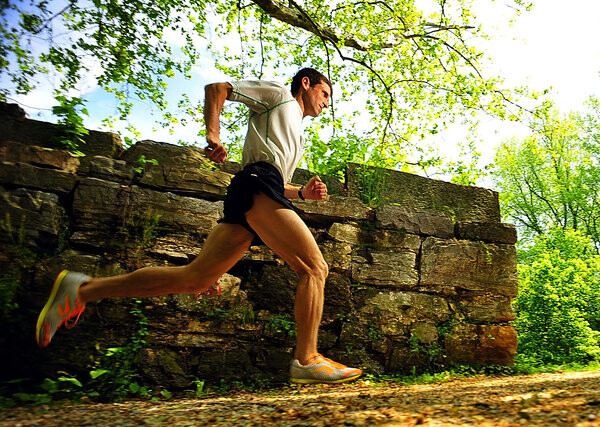
Proteins are formed on building blocks called amino acids, and they are essential to keeping your immune system functioning, bones and tendons strong, healthy skin, hair and nails, and more. Exercise demands support from protein, and some research suggests athletes may require at least twice the recommended daily amount.
Learn about protein-rich plant-based foods (and eat them)
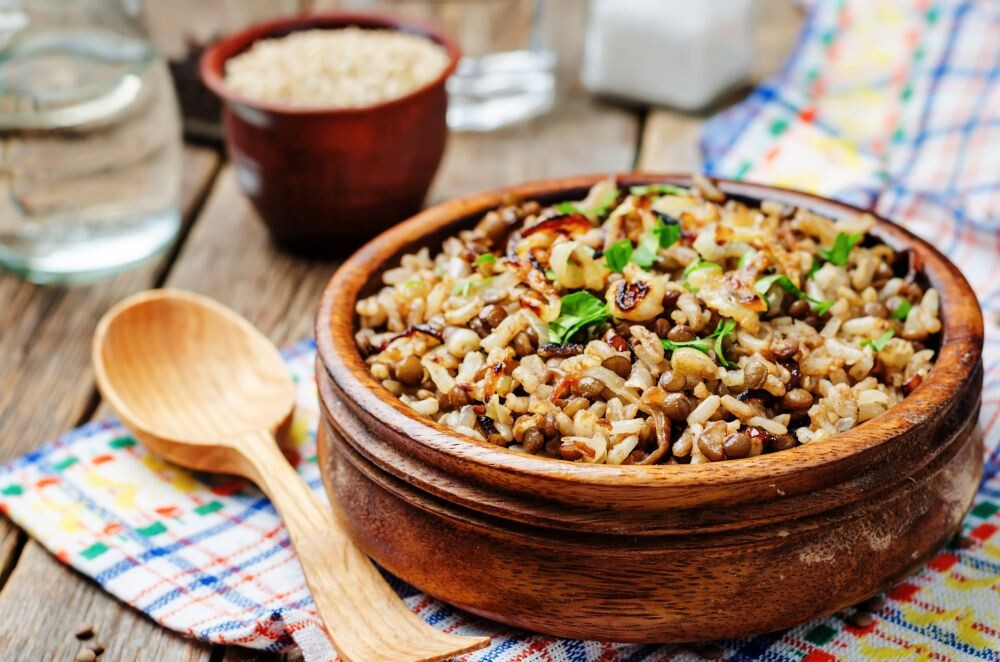
Good sources of plant-based protein include beans and lentils, tofu and other soy products, nuts and seeds and whole grains like quinoa and oats. Start adding more of these foods to your meals to boost your protein intake. Make sure that each meal and snack you eat that is plant-based contains some form of protein.
Don’t be afraid of protein supplements
While you want to avoid extra sugar and unnecessary additives, plant-based protein powders and other supplements can be a convenient and easy way to increase your protein intake. Look for products that are made from high-quality sources of plant-based protein, such as pea or rice protein. Adding protein powder to yogurt, a smoothie, or even into your baking can be a simple way to make sure you’re optimizing protein intake.
Mix and match protein sources
Try combining different plant-based protein sources in your meals to get a complete range of essential amino acids. Pair legumes with whole grains or nuts with seeds to create a more balanced protein profile. By doing this you’ll ensure that you are getting all the nutrients you need to support both your training and recovery.
(12/13/2022) ⚡AMPby Running Magazine
Quebec’s Olivier Desmeules breaks 37-year-old Canadian record
As the indoor track and field season kicks off for many collegiate athletes, Olivier Desmeules of Quebec City started his season with a bang on Saturday at the Penn State Intrasquad Meet, shattering the men’s U23 Canadian 600m record.
Desmeules clocked a record-breaking 1:16.63 (solo) to break Brian Thompson’s previous U23 600m record of 1:17.06 from the 1985 Canadian Indoor Championships in Sherbrooke, Que.

The 22-year-old is an up-and-coming middle-distance runner at Penn State University, specializing in the 800m. Desmeules won bronze in the 800m at the 2022 Canadian Track and Field Championships in June, behind world 800m medalist Marco Arop and Canadian 800m record holder Brandon McBride.
The 600m is a rare middle-distance running event that is only commonly run in the NCAA Big Ten Conference during the indoor track and field season.
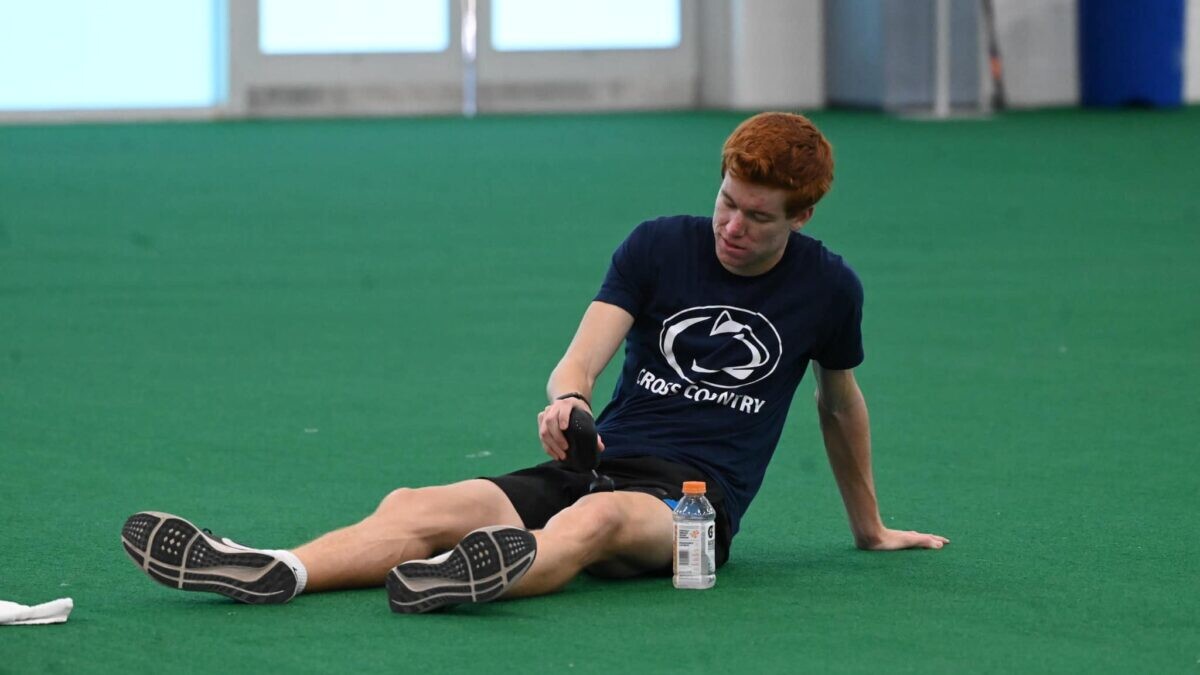
The head coach of Penn State’s Track and Field program, John Gondak, said Desmeules’ time was a top-five 600m result in school history, joining elite company Isaiah Harris and former world relay champion Casimir Loxsom.
Desmeules ran one season with Laval Rouge et Or in 2020-2021 before transferring to Penn State University in 2021. The Penn State track and field program is known for producing some of the best middle-distance runners in the NCAA.
(12/13/2022) ⚡AMPby Marley Dickinson
Kenyan graffiti artist Bankslave creates a mural for the GOAT in downtown Nairobi
The marathon world record holder, Eliud Kipchoge, was on hand with his kids for the unveiling of a mural in the Kenyan capital of Nairobi in his honor.
Kipchoge posted the mural on his social media with his two sons, Griffin and Jordon. The mural was created by renowned Kenyan graffiti artist Bankslave, who is well known in Nairobi as a voice of social change and expressionism.
The mural is located on Nairobi’s Kenyatta Avenue, which is the main road that enters the city’s central park (Nairobi National Park). In the past, Bankslave has also created murals of Barack Obama and Muhammed Ali. This isn’t the first time Bankslave has sketched the Kenyan marathon star—he made a mural of him and Ethiopia’s Haile Gebrselassie inside a coffee shop in 2021.
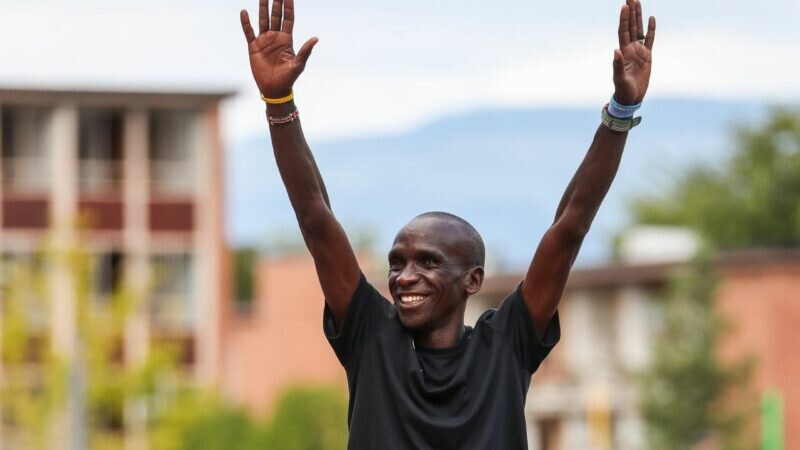
The 38-year-old marathoner is a two-time Olympic champion with 10 Abbott World Marathon Major victories to his resume. Kipchoge has won four of the six majors and is set to compete at the Boston Marathon for the first time in April 2023 before setting his sight on the 2024 Olympic Marathon in Paris.
The bottom of the mural reads 1:59:40, representing Kipchoge’s mind-boggling sub-two-hour time at the INEOS-1:59 event in 2019, where he became the first man to (unofficially) break the two-hour barrier. The top of the mural has his famous inspirational quote, “No Human is Limited.”

An NFT (non-fungible token) of the Kipchoge mural is up for sale on the blockchain website OpenSea and has been listed for three Ethereum coins (approximately $5,100).
(12/12/2022) ⚡AMPby Running Magazine
Kenya’s Erick Kiplagat Sang took the top honors at the Jeddah Half Marathon
The 22 year-old led a 1-2 Kenyan podium finish as he cut the tape with a new personal best of 59:48 and was followed by his compatriot Samuel Nyamae who came in second also with a personal best of 1:00.50.
“I have been part of many marathons that have happened around the world and I am happy to be the winner today in the Jeddah Half Marathon,” said Sang
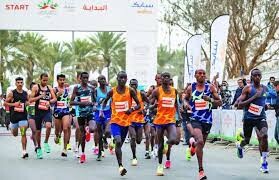
He added: “I am extremely happy with my performance and plan to participate in more marathons in the future.”
Ethiopia’s Kinde Atanaw closed the podium three finishes also with a personal best of 1:00.04.
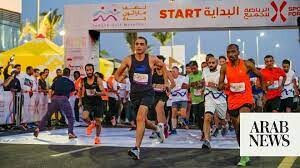
Double World 5,000m champion Muktar Idris and the 37 year-old, Samir Jouaher, finished in fourth and fifth place in a time of 1:01.27 and 1:02.10 respectively.
LEADING RESULTS MEN
Erick Kiplagat (KEN) 59:50
2.Samuel Nyamae (KEN) 1:00.50
3.Kinde Atanaw (ETH) 1:01.04
4.Muktar Edris (ETH) 1:01.27
5.Samir Jouaher (MOR) 1:02.10
(12/12/2022) ⚡AMPby John Vaselyne
Jeddah Half Marathon
The Saudi Sports for All Federation is staging the Jeddah Half-Marathon in December. Supported by the Ministry of Sports, Quality of Life Program, and the Saudi Arabian Athletic Federation, and The Saudi Athletic Federation, the Saudi Sports for All Federation (SFA) is set to host the Jeddah Half Marathon 2022 in the heart of Jeddah promenade and Corniche area. The...
more...Norway’s Jakob Ingebrigtsen crowned again at European XC champs
Norwegian distance champ Jakob Ingebrigtsen hunted down his second senior crown at the 2022 European Cross Country Championships on Sunday, at La Mandria Park in Turin, Italy. Ingebrigtsen won the senior men’s race (9.572 km) in 29 minutes, 33 seconds. On the women’s side, Karoline Grøvdal, also of Norway, took the win in the senior women’s race (7.662 km) in 26 minutes, 25 seconds.
Men’s race
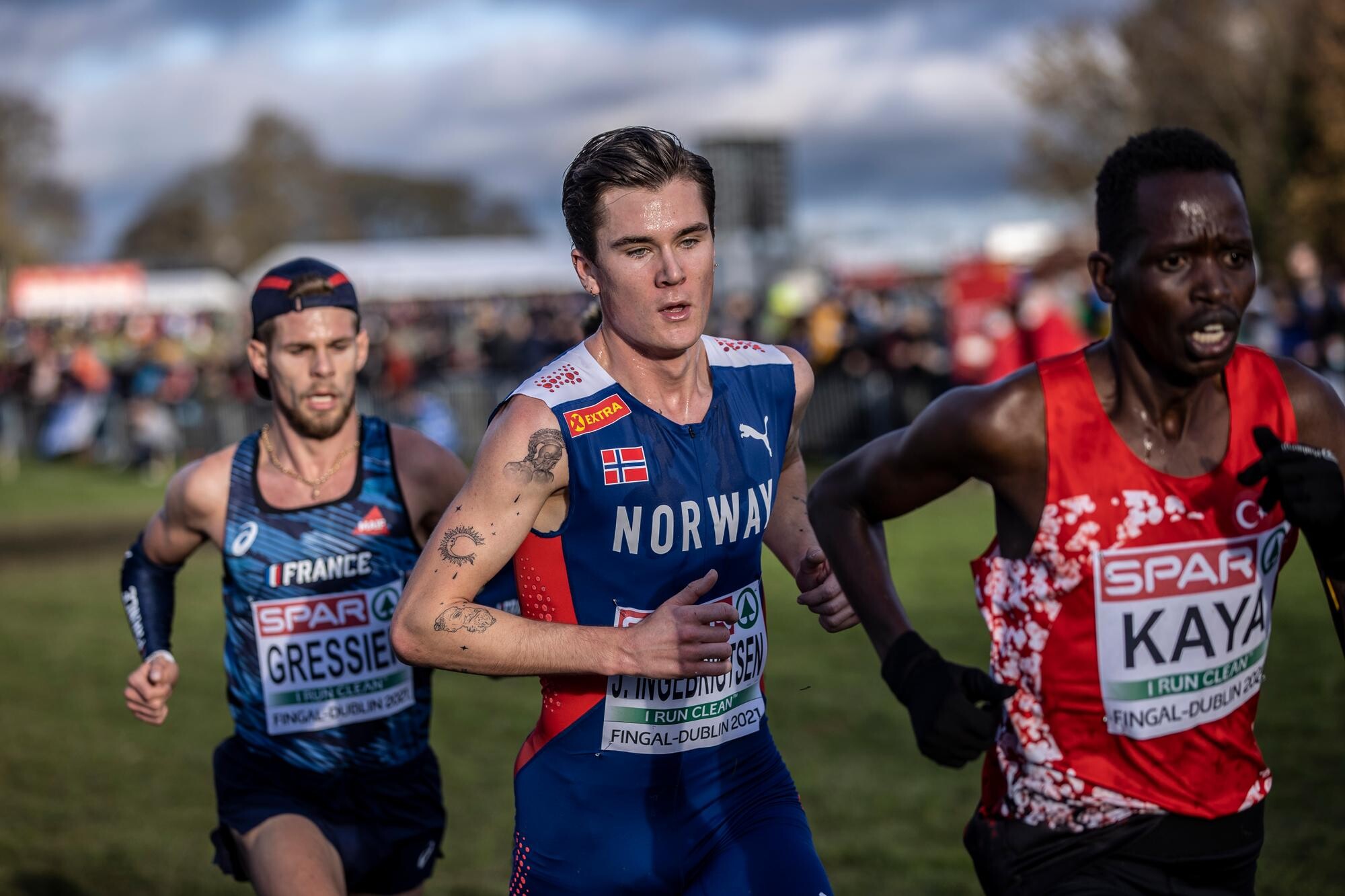
Ingebrigtsen, who is the Olympic 1,500 meter champion, led a close race before pulling off his traditional finishing kick over the final 700 meters, increasing his lead to almost 60 meters before crossing the line in 29:33, World Athletics reported. Great Britain’s Emile Cairess surged for silver in 29:42, followed by Belgium’s former U23 winner Isaac Kimeli, who ran to bronze in 29:45.
Both Cairess, who has had a remarkable breakout season, and Kimeli worked hard to stay with Ingebrigsten from the 6K mark. While they matched or were close to Ingebrigtsen for much of the race they had no answer to his final surge, midway through the last of six long 1.4 km laps. “I think it was a great race for me, I had a lot of fun,” Ingebrigtsen said afterwards, taking his sixth consecutive individual continental gold medal overall.

Women’s race
Grøvdal, like Ingebrigtsen, was the defending champion for the senior title. The senior women’s race was a thriller, with Grøvdal, 32, and Germany’s European 5,000m champion, Konstanze Klosterhalfen, in a head-to-head battle for most of the race. Grøvdal, 32, was finally able to move away from Klosterhalfen on the final downhill stretch, 200 meters from the finish.
Grøvdal’s leading time of 26:25 over the approx. 7.7 km course set her just ahead of Klosterhalfen, who ran to silver in 26:29, and Germany’s Alina Reh, who finished in 27:19, barely holding off teammate Hanna Klein in a sprint for the bronze medal. Reh also took bronze in 2021, while Klosterhalfen moved up from fifth place last year.
“I was tired going into the last lap, and I felt that in the last few meters, but I knew that going down the hill that I am good at that,” Grøvdal said post-race. “The technical part is good for me, I felt quite strong going up the hills as well, and I think that is the reason I took the gold.” With eight individual medals, Grøvdal has an unsurpassed record by a woman athlete in the history of the European championships.
This year’s course at La Mandria Park included a 50-meter indoor section, running through a carriage pavilion, which is part of the Mandria Castle, a UNESCO Heritage site. La Mandria Park is the largest enclosed park in Europe, and Italy is now the only country to have hosted the European championships four times.
(12/12/2022) ⚡AMPby Running Magazine
David Rudisha taken to hospital after surviving plane crash
Decorated athlete, David Rudisha was rushed to hospital after surviving a plane he was in crash-landed on Saturday, December 10.
The world 800m record holder was travelling to Nairobi from Kimana Wildlife Sanctuary in the company of others when the light aircraft they were travelling in crash-landed at Imbirikana area of Amboseli.

Athletics Kenya (AK) official Barnaba Korir confirmed the incident, stating that he had talked to Rudisha who had been attended to and was out of danger.
Korir added that the injured were taken to a hospital in Makindu for treatment.
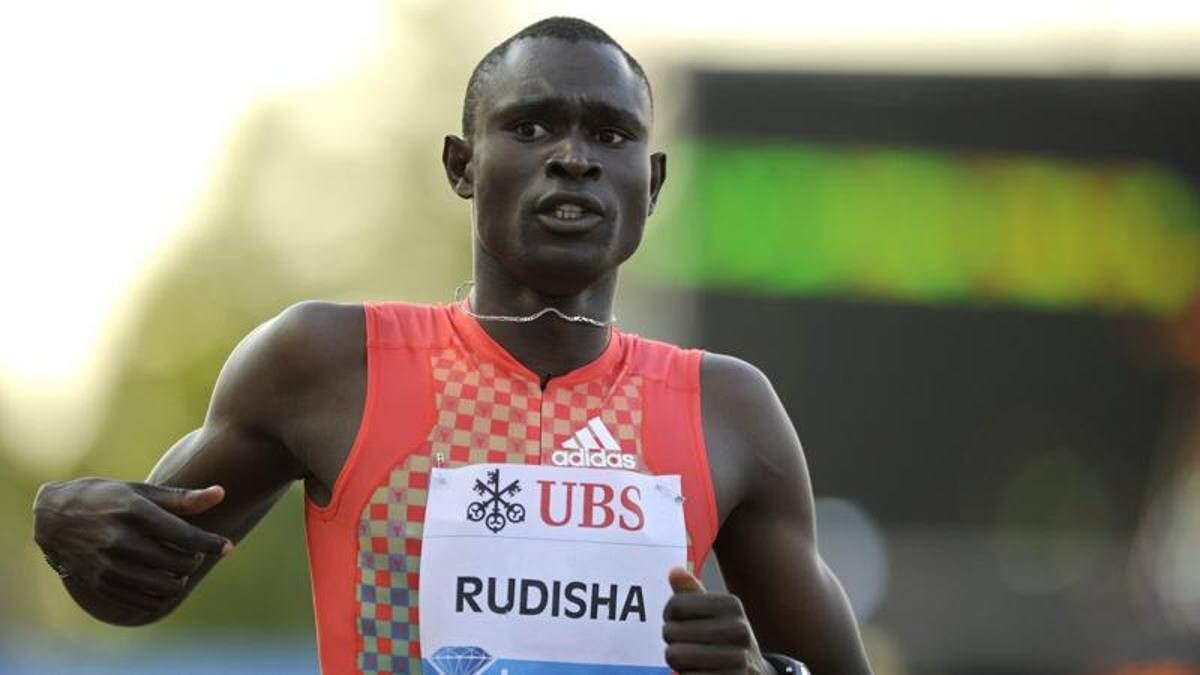
"I have spoken to Rudisha on phone and he told me that he has been attended to and is out of danger," Korir said in an interview with Nation.
The AK official added that the aircraft crash-landed shortly after taking off from Kimana Wildlife Sanctuary for Nairobi.
Kenya Defence Forces athletics chairman Stephen Ole Marai was also on board the aircraft at the time of the accident.
The occupants were rushed to a hospital in Makindu for treatment with investigations launched to establish the cause of the accident.
Initial reports indicate that the that the aircraft, bearing registration details FY-BGJ, developed mechanical problems that forced the pilot to crash-land.
The team was returning to the city from the 2022 Annual Masai Olympics where Rudisha was the chief guest at the event held at Kimana Wildlife Sanctuary in Kajiado South.
Earlier in the week, two people perished in a tragic plane crash in Tsavo East National Park on Thursday, December 8.
Mark Jenkins and his son, Peter died after the plane they were flying in crashed in Huri Plains in Tsavo East National Park.
(12/12/2022) ⚡AMPby Charles Ouma
Ethiopia’s Asefa Mengstu breaks Kenya’s Honolulu Marathon dominance
After sparring toe-to-toe for over half the race, Ethiopia’s Asefa Mengstu outpaced his cross-border Kenyan rival Barnabas Kiptum to cruise into Kapiolani Park and win the 50th anniversary Honolulu Marathon, breaking a long-standing Kenyan stranglehold of Hawaii’s flagship race.
Mengstu won in two hours, 14 minutes and 40 seconds with Kiptum second in 2:17:45, some 10 minutes ahead of third-placed Japanese Yuhi Yamashita (2:27:45) in the race run under brutally windy conditions.
Ethiopia’s Asayech Bere made it an Addis Ababa sweep taking the women’s title in 2:30:58 with her compatriot Abebech Afework Bekele (2:34:39) second and Japan’s Yuhi Yamashita third in 2:27:45.
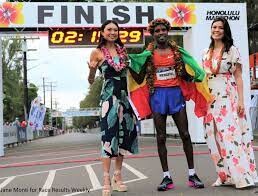
Kenyan men had been unbeaten here since 2007, Ethiopia’s Ambesse Tolossa having interrupted the clean run by winning the 2006 edition.
Prior to that, Kenyans were unbeaten since Eric Kimaiyo took over as champion from South Africa’s Josiah Thugwane in 1996.
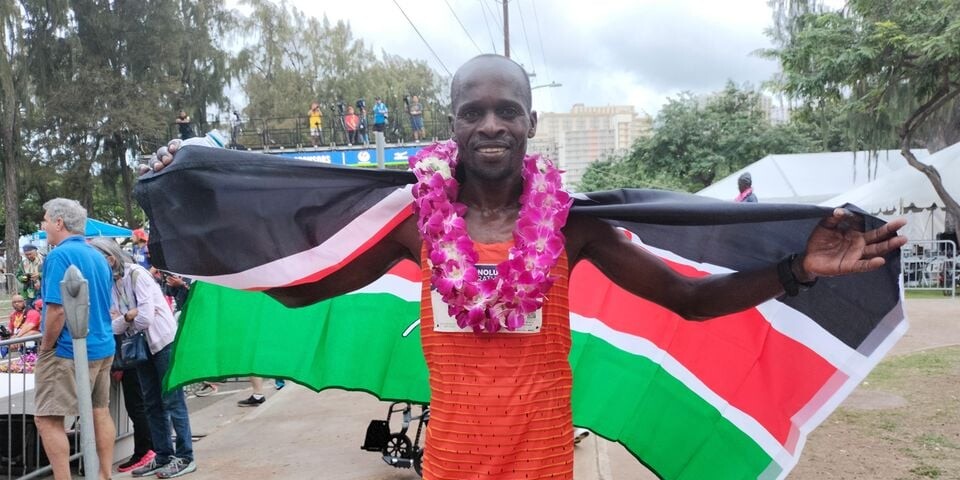
But it was Ibrahim Hussein, the legend, who made the breakthrough as the first African winner on this island city of O’ahu - birthplace of former US President Barack Obama - clinching a back-to-back hat-trick of victories from 1985 to 1987.
Sunday’s golden jubilee race started in it’s traditional night settings at 5am, local time, with spectacular fireworks and, as expected, it was the two Ethiopians, Mengstu and Shifera Tamru, who broke away together with Kiptum, crossing the 10-kilometre mark in 30 minutes and 30 seconds, paced by Kenya’s Reuben Kerio who is also preparing for next month’s Mumbai Marathon.
They then crossed the halfway mark in 1:06:38 under a slight drizzle at the Aina Haina sector after which pacemaker Kerio dropped off at the 30km mark (1:21:00).
There was drama shortly after when Kiptum and Mengstu dropped Tamru, racing on shoulder-to-shoulder as the sunrise launched in spectacular fashion at East O’ahu.
But at 33km, Mengstu broke away and ran a solo race all the way to the finish.
“It was a tough race… I’ve never competed under such tough conditions,” Mengstu said, referring to the furious headwind.
“My strategy was to attack at 35km and I was determined to win,” added Mengstu who trains under the Rosa Associati stable in Addis.
Kiptum was happy with his race, saying the atrocious winds slowed him down, but he remained confident of fighting for a place in Team Kenya to next year’s World Championships in Budapest.
“I ran in conditions similar to these in Hong Kong in 2018, but today’s wind was just too crazy,” he said.
“My body feels fine and I will now fight for a place in the team to the World Championships so that I can represent my country…
“I have what it takes, and I just have to throw in a race in spring and confirm my place in Kenya’s team to Budapest.”
Sunday’s golden Jubilee Honolulu Marathon celebrated the return of full racing and public events after two years of uncertainty occasioned by the coronavirus pandemic, much to the satisfaction of its long-standing President and CEO Jim Barahal.
After Kenya’s Titus Ekiru won back-to-back races here in 2018 and 2019, including setting a course record 2:07:59 in 2019, the race was held as a non-competitive event in 2020 due to the pandemic with Kenya’s Emmanuel Saina winning the title last year in 2:14:32.
(12/12/2022) ⚡AMPby Elias Makori
Honolulu Marathon
The Honolulu Marathon’s scenic course includes spectacular ocean views alongside world-famous Waikiki Beach, and Diamond Head and Koko Head volcanic craters.The terrain is level except for short uphill grades around Diamond Head. ...
more...Did You Know the Boston Athletic Association Has a Membership?
Joining isn’t as simple as you might think.
The 1983 Boston Marathon champion Greg Meyer is a member of the Boston Athletic Association (B.A.A.). So is Bobbi Gibb, women’s champion during the “pioneer era” of the marathon in 1966, ’67, and ’68.

But Kathrine Switzer, who made headlines in Boston in 1967, is not. Nor is Meb Keflezighi, the 2014 champion.

Tom Grilk, the CEO who retired in April, has been a member since 1987. The new CEO, Jack Fleming, is not.
Michael O’Leary, M.D., a surgeon at Brigham and Women’s Hospital and chairman of the B.A.A.’s Board of Governors (which is essentially the same as a board of directors) has been a member of the B.A.A. since 1989. All 13 Governors (10 men, three women) are members—they have to be, in order to be picked to serve on the board.
Scott Peterson, a Miami-area corporate finance professional, is a member, and he has his membership listed prominently on his LinkedIn profile. When asked by Runner’s World about it, Peterson, a marathon veteran, called the group “like-minded people who support the running community.” He said, “It’s a real honor for me and anyone to be part of the membership of B.A.A.”
But what is this selective group, exactly? Who are they? And how are they chosen?
A local mystery
Information about membership on the B.A.A. website is scant, which cloaks the group—intentionally or not—in secrecy. Several people who are deeply involved in the Boston-area running community told Runner’s World they did not know such a group existed. (There is also a B.A.A. Running Club, which is open to runners in the Boston area, but it is different from the membership.)
Chris Lotsbom, a B.A.A. spokesperson, answered multiple questions from Runner’s World about the membership via email. He said the group currently has 174 people.
He also explained that the membership model goes back to the B.A.A.’s founding in 1887. The marathon started 10 years later, in 1897.
The organization had, in its earliest days, a building with a pool, indoor track, bowling alley, and boxing room, among other amenities, like a golf club, for its dues-paying members. The B.A.A. was similar to other athletic clubs across the country, most notably the New York Athletic Club, which still exists.
In the 1930s, during the Great Depression, the B.A.A. lost its headquarters building and its other properties. All that remained was the marathon, the bylaws of the organization, and a small group of members.
The members kept the B.A.A. and the marathon going. And they remain to this day, written into the organization’s bylaws to promote “the common good and the health and welfare of the general public and the encouragement of the general public to improve their physical condition.”
Tom Derderian, executive producer of Boston: The Documentary and author of Boston Marathon: Year-by-Year Stories of the World’s Premier Running Event, takes a skeptical view of the leadership back in the day.
“The B.A.A. expected that their investments in the 1920s would continue to grow,” he wrote to Runner’s World. “The stock market crash and Depression and World War II removed all B.A.A. assets, leaving the Association with only its name, an indoor track meet, the Boston Marathon—and the founding attitude that only B.A.A. members could know what was best.”
The modern-day membership
Today, as with any group, some members are actively engaged in day-to-day matters of the organization, attending meetings, voting, lending expertise, or volunteering at B.A.A. events. Others are not involved at all.
“For us today, membership is a valuable asset when tapped into,” Fleming said in a call with Runner’s World. “There’s still work to be done, but leadership and staff rely on the members for a variety of things. They serve on committees. They provide guidance in areas, their expertise. So finance, real estate, of course, running, community, the professional side, technology.”
For example, when the B.A.A. wanted to buy a building in Hopkinton near the marathon starting line, the organization got real estate advice from some of the members during the process.
They have also helped with recent diversity initiatives.
“Several B.A.A. members were significant in the establishment of the Boston Running Collaborative, which seeks to increase the fitness and participation of minorities in running,” Lotsbom wrote. “In this respect, membership is a resource which complements the staff’s day-to-day work.”
The way the bylaws are written, the Board of Governors are nominated from the membership. So the 174 members influence the direction of the B.A.A. through the Governors, who oversee the CEO.
The B.A.A. doesn’t track the demographic makeup of the membership, but Lotsbom wrote that, since 2010, the group has attempted to improve its diversity.
Thaddeus Miles, who founded the Run to Wellness 5K in Roxbury several years ago, was invited to join the membership two years ago by Tom Grilk. Miles recently showed up at his first in-person membership meeting post-pandemic. He counted only one other Black member among what he estimates were 50 attendees, plus Adrienne Benton and Keith McDermott, who are on the Board of Governors.
Three people who are familiar with the membership said that many members work in the medical professions or financial services industry in the Boston area.
There is a family component as well, according to the B.A.A. O’Leary’s father, also a physician, was a member of the B.A.A. who was responsible for the physicals administered to marathon runners in Hopkinton during the race’s earlier years. A descendant of Walter Brown, who founded the Boston Celtics and was the B.A.A. president from 1941–64, still starts a division of the marathon to this day.
Members pay a nominal fee—$50—each year to belong. In exchange, they get one waiver each year into the marathon. They still have to pay the entry fee ($375), but they can run themselves without qualifying, transfer the waiver to a friend or family member, or donate the number to a charity.
Miles, who is on the steering committee of the Boston Running Collaborative, gives his waiver for a marathon entry every year to a runner of color who otherwise wouldn’t be able to qualify for the race.
For the thousands of runners every year who try to qualify but fail, or who fundraise for one of the charity teams as a way of gaining entry to Boston, the existence of a small membership group might rankle. Lotsbom said fewer than 180 entries are allocated for members annually (out of a field size of 30,000) and less than half are ultimately used.
“The B.A.A. gets to choose whom they want to invite to run the race, and the B.A.A. decides the terms by which it will invite people to participate in its iconic annual event,” said Robert Wang, the founder of the World Marathon Majors Challenge group on Facebook. (The group’s 18,000 runners are seeking to run all six of the Abbott World Marathon Majors, but they have no official affiliation with that organization.)
“If the B.A.A. wanted to invite everyone whose last name starts with ‘Y’ to run the Boston Marathon, that would absolutely be the organization’s prerogative,” Wang said.
I’d love to be a member. How do I sign up?
There’s the rub. Right now, no such sign-up mechanism exists. You have to know a current member or someone on the Board of Governors.
“Potential members are traditionally nominated by a board member or another current member, and apply with a résumé along with specific comments as to why they wish to join the B.A.A.,” Lotsbom wrote. “From there, the nominees are seconded by a Governor, and voted on by the board. The membership is made up of those who have expressed an interest in the B.A.A., B.A.A. activities, and its mission.”
Fleming acknowledged that the relative obscurity of the membership and the lack of clear guidelines for becoming a member could be improved.
“We should make it known more,” he said. “And we should have more public ways of making it easier to have their interest become known. Raise your hand. We should make it easier for that to occur.”
In an era when running’s leaders are trying to make the sport more inclusive, how does the B.A.A.’s membership fit into the landscape? Is it a quirky echo of the organization’s past? Or an impediment to diversity in today’s world? Does a quiet group of invitation-only members pass the sniff test in 2022?
Tiffany Chenault, a sociology professor at Salem State University who is an ambassador for the Boston chapter of Black Girls Run and part of the Boston Running Collaborative, said in a call that she didn’t recall hearing about the membership, and she wondered how much influence the group holds.
“I’m curious,” she said. “I have questions.”
John Hanc, a longtime Runner’s World contributing editor and author of The B.A.A. at 125: The Official History of the Boston Athletic Association 1887-2012, knew of the group’s role in the B.A.A.’s founding, but he didn’t realize it still existed.
“Today we know the B.A.A. for the marathon and its other major running events,” Hanc said.
“But we have to remember that its history is rooted in the 19th century. Back then, it was very much an athletic club, with all of the exclusivity and, by 21st century standards, perhaps unnecessary and stuffy protocol that came with institutions like it at the time. Over the decades, the organization has morphed into a powerful force in the modern running movement. But some vestiges of that past still remain. While we of course want to see greater diversity in every aspect of the sport, this remnant of the old B.A.A. strikes me as fairly harmless.”
The B.A.A. in 2022 is facing very modern challenges, however. John Hancock, the longtime marathon sponsor, announced that 2023 would be its final year. Will a company want to replace Hancock? And critics have said the B.A.A. has been slow to embrace diversity in its ranks and events. Where does the membership group fit into that?
Does a leadership structure that evolved from the 19th century, and with a Board derived from a membership group, still serve the organization?
Derderian isn’t certain.
“It is a human tendency for those in charge to conclude that only they know enough to be in charge, since they have always been in charge,” he wrote, “and to keep things from changing, they have to continue to exclude control from outside.”
(12/11/2022) ⚡AMPby Runner’s World
Your Ultimate Guide to Aid Station Foods
I get so excited whenever I hear an aid station coming up, but then everything happens so fast and I can't think straight when I arrive. Often I don't know what's best to grab at aid stations. Can you help me break down the nutritional content so that I can make the right choices?
Sometimes I have this recurring nightmare before a race, where I'll spend hours calculating and sorting out running nutrition into my pack and drop bags. I'm all ready, have checked all the boxes, but when it comes time to the race, something happens and I'm unable to eat or drink anything I've packed.
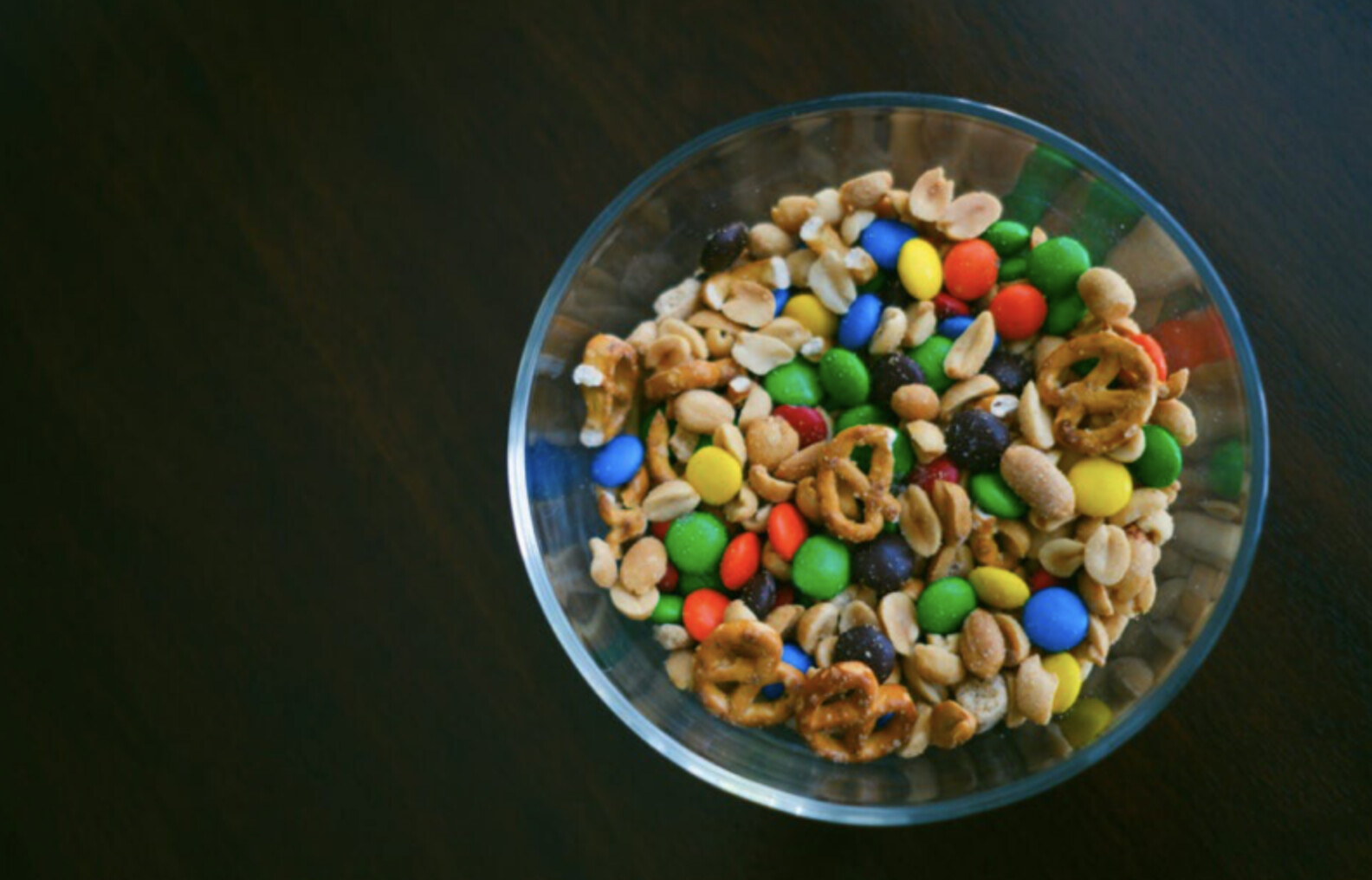
Often it's because of a stomach issue. Sometimes it's that I just don't want anything I've packed, and sometimes - and this is unusual, I know - it's because I've lost all my teeth, the most terrifying of them all! In this nightmare, the worst-case scenario is feeling unprepared without my nutrition and having to rely solely on things I haven't planned for, or practiced with: I have to rely entirely on aid station food.
Maybe you've had this dream, too. Or maybe this has actually happened to you in real life. But I'm also willing to bet that this is a pretty unique dream, conjured up by a nerdy dietitian with pre-race anxiety issues. Regardless, if you've ever found yourself in this position during a race, don't fear. All is not lost. Aid station food can save the day!
Setting the Stage
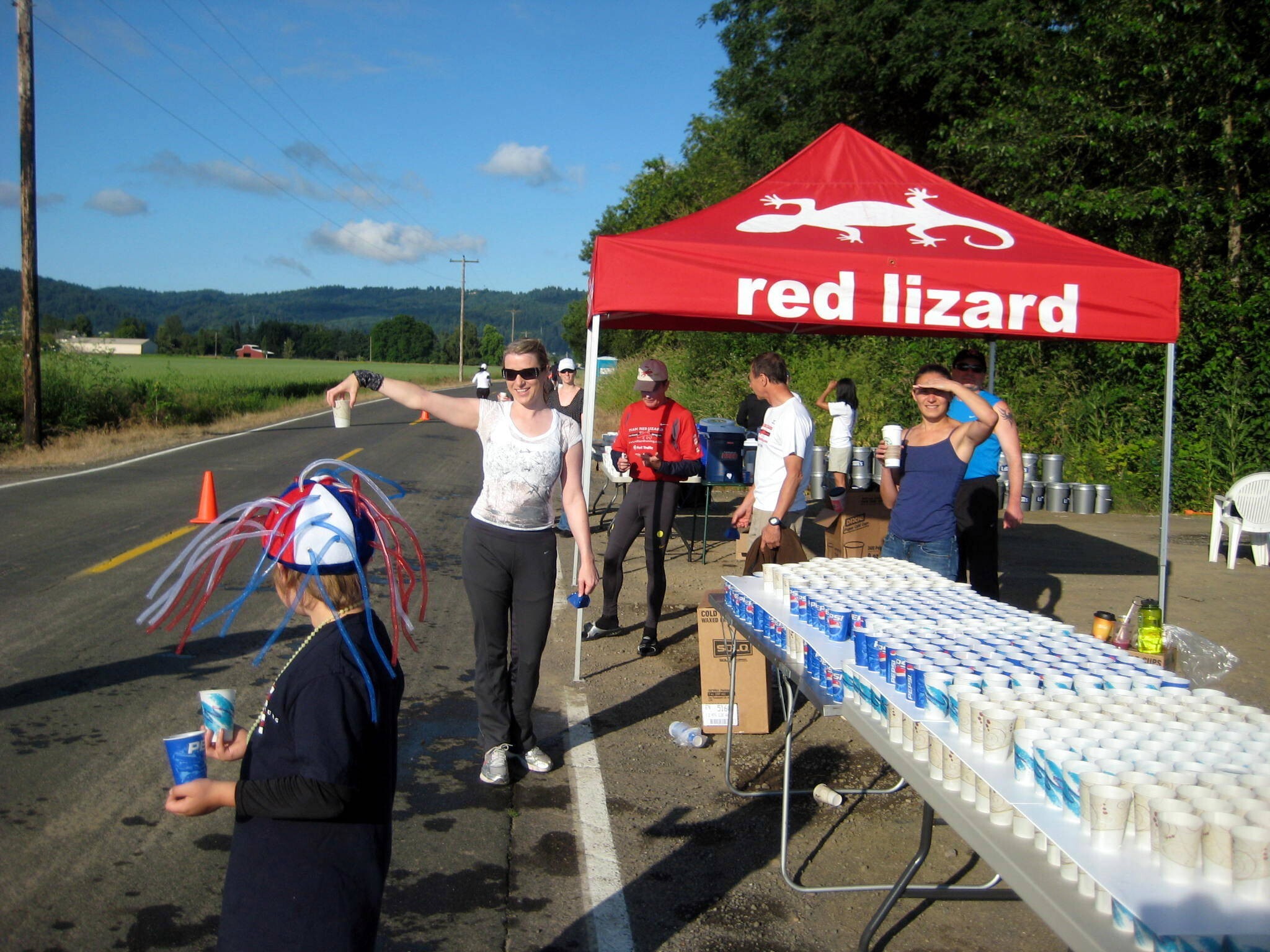
Before we dive into the nutrition of aid station foods, let's first talk about basic nutrition guidelines, of what we should be aiming to consume each hour during a race.
Ideally, we want to consume the following every hour:
Many of the sports nutrition products available on the market - gels, chews, and drinks - are formulated specifically to these guidelines, ensuring we get the nutrition we need in a convenient (and sometimes expensive) tiny package. But for some athletes, there might come a point during the race where those sports nutrition products just don't cut it anymore, due to nausea, palate fatigue, or upset stomach.
You'll find that most aid stations offer very similar food and drinks, so I would first recommend spending time during training to practice with a few of your favorite fuels, to minimize potential gut issues come race day. For me, I know that no matter how nauseous I feel or how upset my stomach might be, Coke and potato chips always sound good, so during longer training runs I make sure to bring those items along, in addition to the gels and drinks I plan on using during the race. Make sure you practice with foods you plan on using on race day - even if they're just backups!
OK. Now that we know what our general targets are, and have become attuned to what our stomachs like and dislike during training, inevitably we'll arrive at an aid station with caloric needs and curiosity. After all, if you're taking in the minimum of 200 calories per hour from gels and/or powders, an aid station might offer a nice little bump in calories to maintain energy over the length of a race.
Your Aid Station Cheat Sheet:
So what do you grab? How to know what your body needs at any given time? Here are 12 of the most common things you'll see at aid stations (in North America), plus estimates for what nutrition you'll be receiving with on-the-go serving sizes.
Potato Chips
Gummy Bears
Pizza Rolls
Watermelon
Pickles
M&Ms
Electrolyte Drink:
Coke
Salted Potatoes
Bananas
Oreos
Warm Broth
The aim here is to make clear-headed choices during a race that will help you thrive. So the next time you find yourself waking up from that pre-race nightmare - or, more realistically, you find yourself at an aid station - you won't have to sweat it any longer. Instead, you'll be able to smile to yourself, grab a handful of chips, some gummy bears, or a pickle spear, and keep moving with confidence, knowing that you've set yourself up for success for miles to come.
(12/11/2022) ⚡AMPby Trail Runner Magazine
This NYC Marathoner’s Finish Went Viral, Now She Wants to Inspire Others Who Look Like Her to Run
Bailey Quinn is determined to promote fitness for all body types.
Name: Bailey Quinn Age: 29 Hometown: Marco Island, Florida Occupation: Medical Student at Touro College of Medicine in Harlem, New York. Beginning pediatric residency in July 2023! Time Running: 2 years Reason for Running: I’m graduating medical school in May 2023, and I made up the goal of completing the New York City Marathon after my first semester ended back in December of 2019. My school is in Manhattan so doing something big and crazy seemed like an awesome way to celebrate the end of my school years.
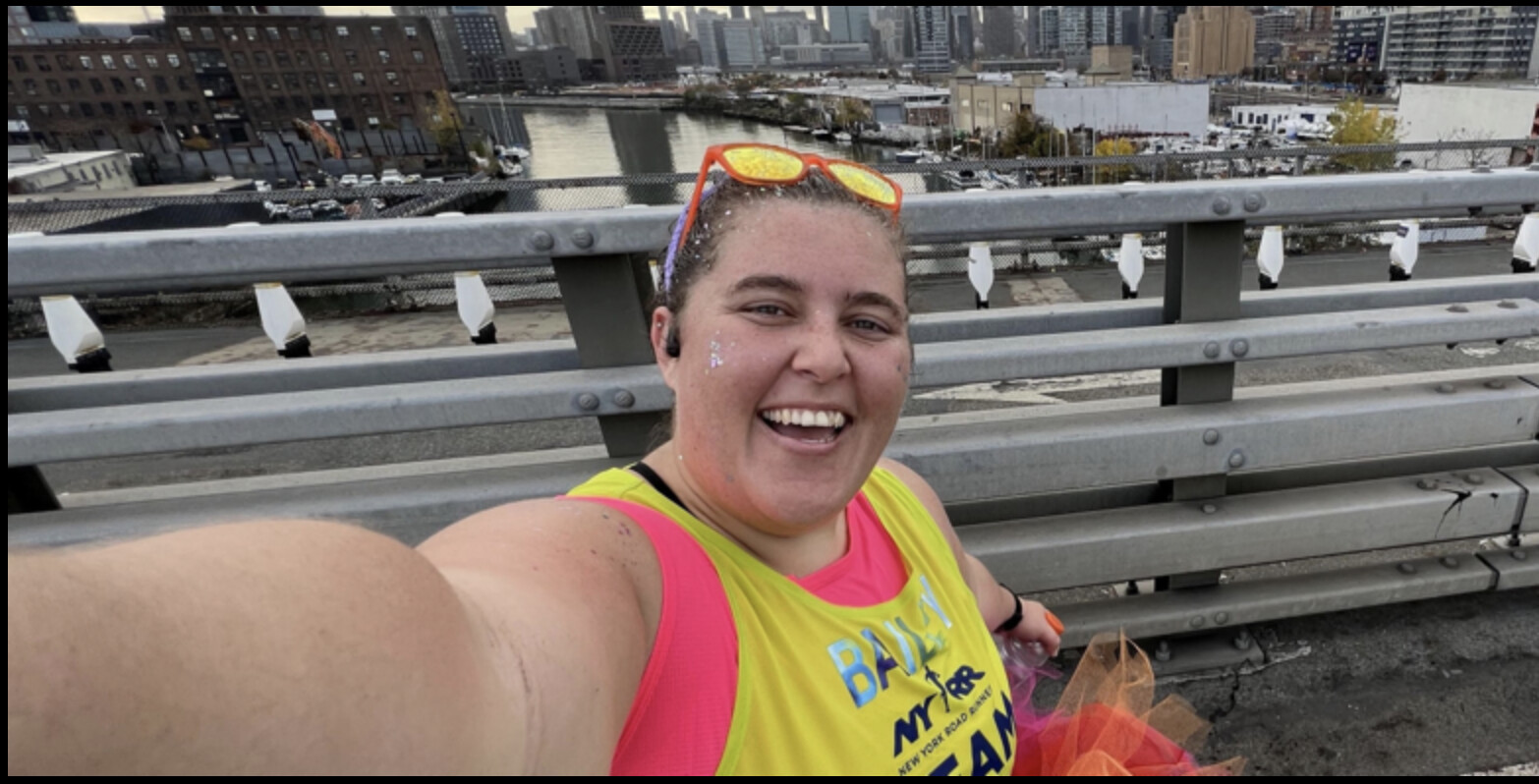
I grew up playing every sport—volleyball, basketball, swimming, softball, tennis. I was also always heavy. I’ve been overweight my whole life. My earliest memories with my pediatrician are her telling me I needed to lose weight. I never looked like other kids, even my siblings. But that didn’t stop me from becoming an athlete. I showed up. I never missed a practice. My parents taught me from day one that you don’t have to be the best player—be the best teammate and the athlete coaches want to work with.
I also have an autoimmune disease called Addison’s disease, where my body doesn’t make the hormones cortisol and aldosterone, which regulate inflammation, your sleep/wake cycle, blood pressure, and plays many roles in organ systems all over your body.
In 2009 I was very sick—vomiting for weeks straight at times and frequently being admitted to the hospital. I was a medical mystery for years. I would get so sick I’d be in the hospital for weeks vomiting and nobody knew why. (I’ve actually torn my esophagus from vomiting so violently and so often.) I went through college at the University of Florida as a registered disabled student. I thought that was going to be my life.
In 2016, I just started applying to medical school and I looked at my mom and said, “I can’t live like this.” That’s when I was finally diagnosed with Addison’s disease, after really pushing my doctors to look for a better answer. They ordered one blood test and my cortisol levels came back as undetectable. I will be dependent on steroids for the rest of my life.
But that has never stopped me. I did marching band at the University of Florida, and I was also on the sailing team. I call myself an endurance athlete.
I rode a bike across America in 2014 to raise money for the Ulman Cancer Fund for Young Adults. We started in Baltimore, and we ended in Seattle. And in the summer of 2020, I swam the coastline of Marco Island, six and a half miles, and I did that in three hours and eight minutes. I love open water swimming. I like grand undertakings. I’m a go-big or go-home person. And I’m also not the “typical” picture of fitness.
When I started medical school in New York City in July 2019, I knew I wanted to do something big. By the end of my first semester in December I had decided on the New York City Marathon. I thought, “I bet a lot of people think I can’t do this, so I’m going to do it.” I committed to start training and run it in 2022.
I did try to run as a kid. My mom grew up as a New York Road Runner in North Salem, New York. I tried to get into running in eighth grade, but I felt like I was a burden to my coaches. I was slow. I was the kid that they were begrudgingly waiting for during practice and meets. So I finished the 8th grade season and didn’t even think about coming back out to join the team in 9th grade. But I participated in softball, swimming, cycling, and other sports in high school. My whole life with running, before the New York City Marathon, I was met with: “You don’t belong here.”
Most of my training was endurance-based swimming and cycling because I have a slightly torn meniscus at the moment (I hurt it by slipping at a baseball game in October 2021). So, I knew I couldn’t train heavily with running, as being in medical school I’ve been too busy to have surgery to repair it. I joined a USA Masters swim team at my local YMCA in 2020 and worked with a coach who made some custom endurance plans for me. I was swimming two to three miles a day in 2020 and doing lots of long walks, building endurance.
In 2021, I started my clinical rotations, so I had less time to train, and it was more speed focused and aerobically demanding. With my meniscus tear in October 2021, I also started to do spin for a low-impact cardio workout. So, last year I was doing 45 minutes a day of Peloton or swimming and added in more jogging and walking. I did enough training to finish the marathon—that was my goal.
I ran with Team for Kids because I feel very strongly about getting kids involved in sports, particularly because I’m planning on being a pediatrician. I made a giant rainbow tutu to do the marathon in and had so much fun because that’s just who I am. I knew I was going to run/walk the 26.2 miles.
I finished at 8:17 p.m; it took me 9 hours and 19 minutes. A video of me crossing the finish line went viral on social media. It was a video of me pumped as hell to finish. I was exuding such radiant joy and just being goofy. I was just pumped that I accomplished my goal of finishing and just got to celebrate and relax.
There was never a doubt in my mind that I wouldn’t finish. I knew my speed wouldn’t be there, but my training method absolutely worked. I felt great the whole time. My boyfriend had water and Gatorade for me at mile 23, and he finished with me. I had gels and Honey Stingers for the whole race.
I showed up ready for a long day. For me, everything went perfectly to plan. I did most of my jogging the first half and walked most of the second. I knew I was going to be slow, and someone who looks different. I wanted to finish for me, not for a time.
Unfortunately, bullies are everywhere, and I was flooded with comments and messages about how fat I am or how I’m a disgrace to running. People see a heavy person and don’t know about my Addison’s disease and the steroids I take that also impact how I look.
Weight is a complex thing—there is not one single factor that dictates someone’s weight and it’s impossible to tell that just by looking at them. I’ve been met with this attitude in running since I was young, and this is what keeps people out of running. But I want to be an example. I’m not going to quit or leave! I wanted to finish for the kids who look like me so they can say, “I can do a marathon too. You did it, and now I think I can.”
On the flip side, so many people have reached out and are inspired after seeing the video. The positives far outweigh the negatives, and I’m having a blast! Now I want to do the World Marathon majors.
My next marathon will be the Chicago Marathon in 2024. I’m definitely here to stay, because I think the sport needs it. People like me are bullied out of running, and I want to change that. I want to be the person saying, “You finished! I’m so proud of you!”
Running is so accessible, and I can get the message out there. I never would have dreamed I would be here, but I am so happy and proud to say I am.
Running and the running community have made me feel like the sky’s the limit. Before this year’s New York City Marathon, I thought I just wanted to do one marathon before I die—now I want to do all six of the Abbott Major Marathons and I hope to help my mom complete her dream of doing the NYC Marathon by doing it again with her.
I really love the person that the marathon has made me. To finish how I did and have fun, putting myself back out there as a runner despite negative experiences in childhood has made me realize I can do it! I’ll never be the fastest, but I will definitely be the most colorful. It’s all that matters! Get out there, let’s go!
These three tips have made my running journey a success:
1. Run your own race
Run for you and get out of it what you want to get out of it. Ignore what everyone else has to say about it.
2. Use anti-chafing creams
I was running/walking for more than nine nonstop hours and I had no rashes or rubs or anything using these.
3. Listen to your body
If you’re feeling sick or injured, test the waters—but I’m invested in the long term. So, if my body is telling me I need more sleep today, I’m going to get some sleep because I want to be able to run tomorrow. You need to push yourself when you can because that’s how you get better, but listen when your body needs rest.
Bailey’s Must-Have Gear
→ Bodyglide: I could not run without it! I’m about to be Body Glide’s number-one supporter for the rest of my marathon career. It’s great for arms and legs—everywhere! Just bathe in it!
→ Theragun Pro and Theragun Mini: I prefer the Pro for regular use but love the mini for my swim bag. They’ve been absolute game changers in my preworkout warmups and my postworkout recovery! They’s especially helpful on days when I can’t stretch as much as I would like due to time constraints—like when I’m rehabbing an injury, or when I’m doing consecutive days with endurance-style workouts (two- to three-mile swims, four to six days a week). They make my recovery time significantly faster; they made my leg recovery from the marathon a breeze.
(12/11/2022) ⚡AMPSophia Kennedy, Daughter Of Bob Kennedy, Looks For Steady Progress As She Prepares For Two National Meets
INDIANAPOLIS – As far as she is concerned, Dad is Dad. But every once in a while, Sophia Kennedy’s father comes up in conversation.
“Oh yeah, my dad ran professionally,” she says.
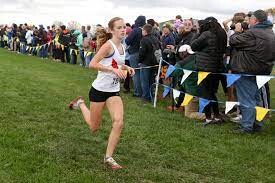
“Who’s your dad?”
“Bob Kennedy.”
After the oh-my-gosh replies, Sophia can’t help but smile.
“That always feels kind of cool.”
Also cool: Sophia Kennedy has qualified for both high school nationals in cross country, the Nike race Saturday at Portland, Ore., and Champs Sports (formerly Foot Locker and Eastbay) on Dec. 10 at San Diego. She is a senior at Park Tudor School in Indianapolis and has committed to Stanford.
For an American distance runner, being Bob Kennedy’s daughter is analogous to being an Obama sister entering politics or an actress whose father is Brad Pitt. Comparisons are inevitable, and inevitably unfair.
Yet by now, 52-year-old father and 17-year-old daughter are so used to it, it is a source of amusement rather than pressure. No one will be another Bob Kennedy. His impact on track and field cannot be overstated.
The two-time Olympian won four NCAA titles while at Indiana University and became the first non-African to run 5,000 meters in less than 13 minutes. His 1998 American record at 3,000 meters, 7:30.84, has been lowered little (to 7:28.48 by Grant Fisher) despite a 24-year span and introduction of super-shoes.
Sophia did not have to follow in those spikesprints. Her twin brother, Marcus, is a soccer standout. No way Sophia was going that route. She was once a goalkeeper “because I was a liability on the soccer field.”
Sophia took ballet lessons, played the clarinet. Her mother, Melina, a former IU runner who once ran for mayor of Indianapolis, and father encouraged the twins to try everything.
“Ultimately, they choose their own passion,” the father said. “We were big on hopefully finding something. Because I think it’s important to life and growth to find something that interests you, whether you’re the best at it or just really enjoy it.”
For Sophia, that became running. She was among the best and really enjoyed it.
Her transformational moment came when she nearly won a two-mile race around school grounds as a fifth-grader. She was outkicked by a boy. Then “it was on,” her father said.
Sophia affiliated with a local club, the Carmel Distance Project, and began winning races. In age-group cross-country nationals, she was 32nd in 2016 and 11th in 2017.
She didn’t have to travel far for competition, either. The Kennedy and Farley families used to live on Pennsylvania Street in Indianapolis homes separated by 73rd Street. Sophia grew up playing with a future Park Tudor teammate, Gretchen Farley, who has also qualified for San Diego.
Bob Kennedy has characterized Farley, a 2:09/4:50 runner who competes in four sports, as “a super talent.”
Sophia said all her parents have ever asked is whatever she does, give it her all.
“My parents have made it super clear, if I’m ever not happy in the sport, I don’t have to keep running,” she said. “It’s just something I’ve come to love because I love the hard work and the opportunities that it brings and the people that I meet.”
Sophia’s progress has not gone uninterrupted.
After setting an Indiana indoor 3,200-meter record of 10:12.32 last Feb. 19, she developed a fever, then an injury. She tried to maintain fitness via cross-training and anti-gravity treadmill. In May, when she began state track qualifications in a sectional, it was her first running on the ground in six weeks.
Given all that, it was redemptive to finish second at state in 10:25.02, or two seconds behind champion Nicki Southerland. Sophia lowered that to a 10:20.13 two-mile in finishing eighth at the Brooks PR Invitational.
Sophia took a measured approach to this cross-country season. Her father has credited her high school coaches, Garrett Lawton and Ryan Ritz, with prioritizing long-term future over short-term success. Sophia does not exceed 40 miles a week, and sometimes runs as few as 30.
“The one thing I realized,” she said, “if I want to be successful, I need to be healthy this year.”
That has been manifested in what is arguably her best run of runs. In a span of six 5Ks over eight weeks – none of which she won – she clocked 17:10, 17:12, 17:25, 17:24, 17:11, 17:23. She was third at state, fifth at NXR Midwest and second at Champs Midwest.
Even her cautious father conceded the daughter is on a trajectory that will accelerate as her strength matches her aerobic capacity. Sophia’s VO2 max is 82. Bob Kennedy’s was 83.
“I’m a little biased. I think you’re going to see huge leaps,” he said.
Sophia has come along during an unprecedented era in Indiana. Not only did Addy Wiley set a national record for 1,600 meters last June, there have been opponents such as Lily Cridge, Southerland, Addison Knoblauch and Farley.
According to inccstats.com, Cridge, Southerland and Kennedy rank Nos. 1, 4 and 5, respectively, in Indiana cross-country over the past 40 years.
Sophia is not intimidated at national meets. She sees such competition regularly. At San Diego last December, she led through a 5:19 mile and finished seventh.
She became the first Indiana girl in 15 years to have four top-five finishes at state cross-country . . . but never has she been a state champion on grass or track.
“She’s generationally great, and hasn’t won one yet. That’s stunning to me,” said Scott Lidskin, who coached Westfield to four state titles in girls cross-country.
Sophia will be surrounded by talent at Stanford. She chose the Farm over Notre Dame, North Carolina State, Virginia and Colorado.
Stanford was 13th in NCAA cross-country with a roster of six sophomores and one freshman. The team did not include two 1:59 freshmen, Roisin Willis and Juliette Whittaker, who won gold and bronze medals in the 800 meters at the World Under-20 Championships. Nor did it include Irene Riggs, a 2023 recruit coming off a 16:02 that was the second-fastest 5K in high school cross country history.
Sophia Kennedy, taking cues from her parents, pleads patience.
“I don’t want to be just a really good freshman,” she said. “I want to be really good in four years and five years and 10 years.”
It is mildly disappointing to be without a state title in Indiana’s single-class system. To win state at 3,200 meters, for instance, she suggested it might take 9:50 to beat Cridge (10:03.16 PB) and win.
No high school girl has broken 9:50 in an outdoor two-mile. Three have done so indoors: Mary Cain, Natalie Cook, Sydney Thorvaldson.
“I’m not looking for these immediate responses in my high school career,” Sophia said. “I want to run better at Nike nationals than I would have at the state meet. I want to be strong for the spring and not get injured.”
And not get caught up in what Dad did, other than to have a long career in the long run.
(12/11/2022) ⚡AMPby Runner’s Space
Didn't Get Into Western States or Hardrock? Here Are 10 Alternatives
This fall, 4,909 runners put into a lottery in hopes of getting one of 369 spots in the 2018 Western States 100, perhaps the most iconic 100-mile race in the United States. Similarly, this year saw 2,236 applicants for the Hardrock 100, a notoriously difficult high-altitude race in Colorado's San Juan Mountains with just 145 available spots.
If you didn't get into of these races (perhaps yet again), don't fret. There are plenty of other races with a similar combination of terrain, camaraderie and spirit.

There are now more than 150 100-mile races held annually in North America alone. Here are 10 races that can cure even the most stubborn Hardrock or Western-States FOMO and get you motivated about training.
1. Eastern States
Held in northern Pennsylvania, this a 103-mile, single-loop course is run almost entirely on singletrack. The race follows Pine Creek, a scenic river that runs through the Appalachian Mountains. But with more than 20,000 feet of elevation gain, it isn't for beginners-which makes it all the more rewarding.
When: August 11, 2018
Where: Waterville, PA
Register: www.easternstates100.com
2. Wasatch 100
Looking for an altitude-heavy race with terrain that ranges from wet scree to dry valleys and everything in between? The Wasatch 100 offers 24,000 feet of elevation gain over a point-to-point course outside of Salt Lake City, Utah. The point-to-point offers plenty of wildlife viewing opportunities, too: past participants have seen everything from elk, sheep and moose, to bears, mountain lions and rattlesnakes. Come prepared.
When: September 7, 2018
Where: Kaysville, Utah
Register: www.wasatch100.com
3. Fat Dog 120
If you haven't run a race across the border, you're missing out. Held in British Columbia's Cascade Mountains, the Fat Dog 120 is comparable to Hardrock in terms of difficulty, with more than 28,000 feet of elevation gain over its 120 miles. Running through three provincial parks and featuring everything from alpine meadows to technical singletrack to groomed trails circumnavigating aqua blue lakes, Fat Dog also brings the weather: expect dry heat, scattered lightning, torrential rain or crisp, nipping temperatures-sometimes all during the same race.
When: August 10, 2018
Where: Keremeos, B.C., Canada
Register: www.mountainmadness.ca
4. Cruel Jewel 100
Expect almost 106 miles of either up or down-there's maybe one part of this course that is flat, but even then your hip flexors will be firing off as you hop over myriads of logs. Cruel Jewel is not for the faint of heart: the event boasts over 33,000 feet of gain and your quads won't let you forget the 33,000 feet of loss. Out of the 106 miles, 95 are run on singletrack through the Chattahoochee Forest. It's an often-overlooked Southeastern event with plenty of shade.
When: May 18, 2018
Where: Blairsville, GA
Register: www.dumassevents.com
5. Ouray 100
The Ouray 100 is a close neighbor to Hardrock, and now in its fifth year of existence. It may not cover Handies Peak or cap out above 14,000 feet, but it does deliver 8,812 feet more climbing. Nestled in the ever-captivating San Juan Mountains of Colorado, the race is considered a "graduate" level 100-miler-after all, the last 10.6 miles of the event pass through the finish area (don't quit now!) to face a 4,844-foot climb before doubling back to the finish.
When: July 29, 2018
Where: Ouray, CO
Register: www.ouray100.com
6. San Diego 100
San Diego is a year-round running destination, which means by the time June rolls around, the temperatures are often in the 90s. In some years, this can mimic a hot Western States, making it a great alternative event. The San Diego 100 course covers five unique areas featuring pine forests, manzanita scrub, a scorching climb through the heat-trapping Noble Canyon and sweeping desert views as the route traces parts of the Pacific Crest Trail.
When: June 8, 2018
Where: Lake Cuyamaca, CA
Register: http://www.sandiego100.com/
7. Bear 100
How many 100-milers take you from one state to the next? The Bear 100 begins in Logan, Utah and ends 100 miles later in Fish Haven, Idaho, all while taking advantage of the changing fall scenery. Expect to see bright red maples and shockingly yellow aspens while climbing more than 22,000 feet. For those who suffer in high-altitude races, the Bear tops out at 9,000 feet, making it a bit more manageable. Bonus points for the overall male and female awards, which feature an engraved picture of Old Ephraim, a famous Grizzly bear who reportedly once roamed the wilderness areas that runners pass through.
When: September 28, 2018
Where: Logan, UT
Register: www.bear100.com
8. Plain 100
Tired of aid stations? Bored with just finishing? Looking for something soul-numbingly hard? Try the Plain 100. In its first eight years, the event had zero finishers. Even today the race has less than a 50-percent finishing rate. What makes Plain so tough? No course markings; no aid stations; two humongous, remote, gorgeous and difficult 50-mile loops with a single re-supply point between. Never mind the elevation gain (and the endless hours alone on the trail.) You know you're in the Plain 100 when, as race participant Martin Miller explained, "you quit at mile 70, but have to drag yourself to the finish line to find anyone who cares." This event is just plain tough.
When: September 15, 2018
Where: Leavenworth, WA
Register: www.plain100.com
9. Cascade Crest 100
The 20th edition of the Cascade Crest 100 (affectionately called CCC) will run the regular route despite 2017's reroute due to nearby wildfires. The trail follows the Pacific Crest Trail for the majority of the beginning miles before dropping down via a steep, roped section. From here runners will work their way through a 2.3 miles-long tunnel before emerging on the latter half of the course. Unfortunately, it doesn't get easier. Expect to hit "The Trail from Hell," which is more bushwhacking than running. The crowning point of the race is a series of steep climbs and descents called the Cardiac Needles, which, at 80-something miles into the race, are no joke. Be sure to pause along the way to look up and out; the views alone make this one worth running.
When: August 25, 2018
Where: Easton, WA
Register: www.cascadecrest100.com
10. Mogollon Monster
The Mogollon Monster traverses one of the most heinous routes in all of Arizona, the technical, undulating Highline Trail, (which also happens to be home to the notoriously difficult Zane Grey 50.) At first glance, the event's 22,000 feet of climbing might seem average amongst other 100-milers on this list, but know that within those 100 miles, you'll be hard pressed to find more than 100 feet of smooth trail. The region is remote, rugged and covered in more loose rocks and fallen trees than you could ever dream up.
When: September 15, 2018
Where: Pine, AZ
Register: www.mogollonmonster100.com
(12/11/2022) ⚡AMPby Trail Runner Magazine
Running Really Can Keep You Young
Consistently running for exercise seems to slow down the aging process and allows older people to move more easily, according to a new small-scale study of exercise and aging. The study's findings suggest that older adults who regularly run for exercise are better walkers than even those older adults who regularly walk for exercise.
"The bottom line is that running keeps you younger, at least in terms of energy efficiency," said University of Colorado Associate Professor Rodger Kram, a co-author on the study, in a written release.

For the study, published online Thursday in the journal PLOS ONE, researchers studied 30 healthy older volunteer adults (15 males and 15 females) with an average age of 69 who either regularly ran or walked for exercise. The volunteers all had been either running or walking at least three times a week for a minimum of 30 minutes per workout for six months or longer. The volunteers walked on a force-measuring treadmill at three speeds: 1.6 mph, 2.8 mph, and 3.9 mph. In order to help evaluate the energy expended, the researchers measured each participant's oxygen consumption and carbon dioxide production during the testing sessions.
"What we found is that older adults who regularly participate in highly aerobic activities -- running in particular -- have a lower metabolic cost of walking than older, sedentary adults and also lower than seniors who regularly walk for exercise," said Humboldt State Professor Justus Ortega, the lead author on the study, in a release.

"It's been known for a long time that as people age their maximum aerobic capacity, or 'horsepower,' declines, and that is true for runners as well," said Ortega. "What's new here is we found that old runners maintain their fuel economy."
Researchers said it was surprising to find that older adults who regularly run are better walkers than even those older adults who regularly walk, noting that those who run enjoy a better quality of life because of their ability to move around more easily.
"Walking for exercise has many positive health effects, like fending off heart disease, diabetes, weight gain and depression -- it's just that walking efficiency does not seem to be one of them," Kram said. "Because we found no external biomechanical differences between the older walkers and runners, we suspect the higher efficiency of senior runners is coming from their muscle cells."
For years, researchers have been studying the effects of running and walking with an eye towards determining whether one is preferable to the other in terms of health benefits. One study from 2013, for example, found that running is a better way to achieve weight loss than walking. Another study, though, found that walkers fare better than runners when it comes to the risk of developing heart disease.
In the end, any kind of exercise appears to be at least somewhat beneficial as a person ages. In May 2014, for example, findings from the longest-running clinical trial on the relationship between physical activity and aging in older adults were revealed, naming daily exercise, sustained over several years, as the best way to age healthily.
So what are you waiting for? Get out those gym shoes and start moving!
(12/10/2022) ⚡AMP
by Shelley Emling
Expect an Ethiopian Flavor For Sunday's 50th Honolulu Marathon
After a marathon journey to get to Hawaii, a quartet of Ethiopian runners are looking forward to making the most of their first visit to the Aloha State. The group of athletes, coached by Yirefew Birhanu Derb, will line up Sunday before dawn for the 50th running of the Honolulu Marathon, America's fourth-largest marathon. The race features a more robust elite athlete roster following last year's slimmed down line-up coming off the pandemic.
Shifera Tamru and Asefa Mengstu lead the men's elite field, while Abebech Afework and Bere Ayalew are the top entrants in the women's division. After a trip that required more than 21 hours of air travel across multiple flights --from their home base in Addis Ababa to Frankfurt, then Los Angeles before reaching Honolulu-- they arrived late Wednesday. They immediately popped into a McDonald's for dinner, and have been getting acclimated to the local time zone, 13 hours behind Ethiopia.
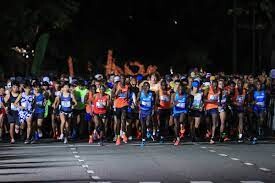
They were all very happy to be invited to this race because they know it's a very good marathon," Coach Derb told Race Results Weekly during a photo shoot for the athletes on Waikiki Beach. "They are looking forward to racing and happy to have the chance to visit Hawaii."
Tamru, 24, is coming off October Chicago Marathon, where he clocked 2:07:53 to finish fifth for the second consecutive year. He says that he has recovered well and is ready to go for Sunday. He has won three marathons in his career, all in South Korea: Chunchon in 2018, Seoul in 2019 and Daegu this past April. His personal best of 2:05:18 came at the Dubai Marathon in 2019.
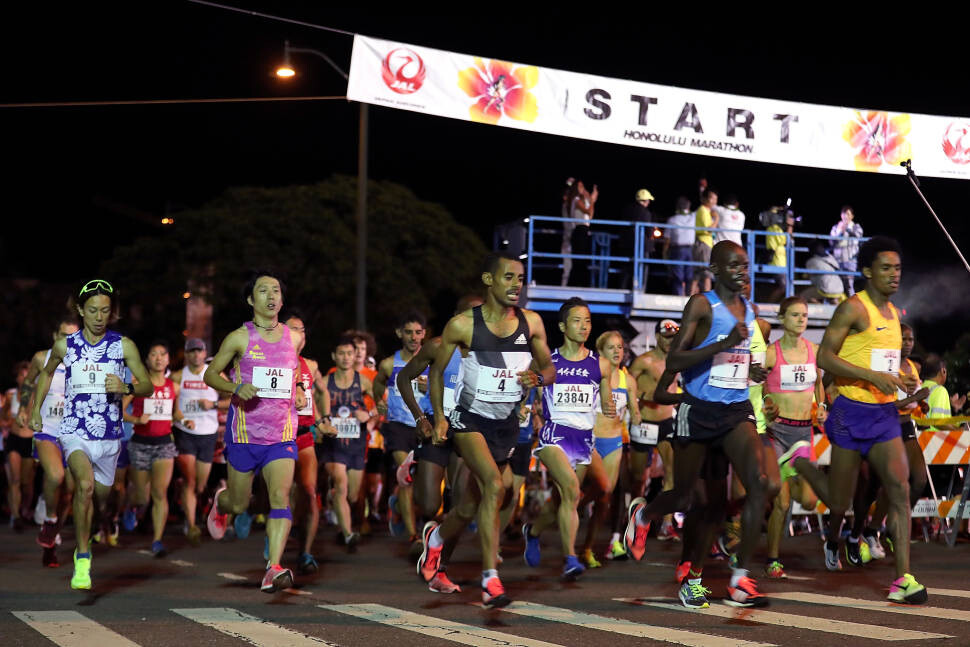
The more experienced Mengstu --who represented Ethiopia as far back as the 2010 IAAF Half Marathon Championships-- has a resume with 13 marathon finishes, including the 2018 Dubai Marathon, where ran his lifetime best of 2:04:06. His most recent race was eight months ago, so he should be well rested. "I'm happy to be here and I'm expecting to win the race on Sunday," he said with a quiet smile as the athletes posed for photographs and chatted with the media.
The two men work well together in training, Derb says. But on Sunday, he points out, "it must be a competition." In addition to each other, they will have to watch out for a strong Kenyan, 36-year-old Barnabas Kiptum, who has a personal best of 2:04:17 (Milan, 2021). He dropped out of the Chicago Marathon this fall, but in July he proved he is still a contender by placing 15th at the World Athletics Championships in Oregon. Stanley Biwott, the 2015 New York City Marathon champion with a 2:03:51 personal best, had planned to run here but scratched.
The women race is likely to come down to a duel between Afework and Ayalew. Like their male teammates, they also have a strong friendship and symbiotic relationship. "They are happy when they are training together, and they can help each other when they compete," Derb said.
Afework, 31, is by far the more seasoned of the two. Her international racing career dates back to the 2010 IAAF World Cross Country Championships, where she placed 18th. She has 20 marathon finishes to her name, and a personal best of 2:23:33 from Dubai in 2015. "I have a lot of experiences from other races and I'm expecting to use that previous experience to run well on Sunday," said Afework, who is coming off a DNF in October's Lisbon Marathon.
The 23-year-old Ayalew is a comparative novice, with four marathons in the books, but each one has been progressively faster. The most recent, in Eindhoven, Netherlands, in October, resulted in her quickest time yet (2:22:52). "My training has been good and I expect to show that on Sunday," she said.
The women's field also includes Canadian Olympian Lanni Marchant, who won this race a year ago on a short recovery from the New York City Marathon, and Japanese veteran Mai Ito (2:24:42 PB).
Should weather conditions cooperate --it's been very windy the last several days-- both the men's and women's course records could be in play. Titus Ekiru of Kenya holds the men's standard of 2:08:00 from 2019, while his compatriot Brigid Kosgei clocked 2:22:15 in 2017. (Kosgei set the current world record of 2:14:04 two years later.) Prize money will be paid three deep: $25,000-10,000-5,000.
The forecast for Sunday morning calls for a temperature of 74F/23C when the gun goes off at 5 a.m. Most of the race will be run in the dark, as the sun will rise just before 7 a.m. on race day.
(12/10/2022) ⚡AMPby Runners Web
Honolulu Marathon
The Honolulu Marathon’s scenic course includes spectacular ocean views alongside world-famous Waikiki Beach, and Diamond Head and Koko Head volcanic craters.The terrain is level except for short uphill grades around Diamond Head. ...
more...Why are you getting shin splints (and how to combat them)?
If you’ve ever dealt with shin splints (more properly known as medial tibial stress syndrome), you know how painful they can be. Shin pain is relatively common among runners, and it’s caused by overuse or excessive strain on the muscles and tendons in your lower legs. As with many overuse injuries, there are a number of approaches you can try, to relieve the pain.
Some common causes of shin pain are increasing the intensity of your training/workouts too quickly, running in worn out shoes, or, in some cases, it’s a running form issue. The injury is characterized by discomfort and tenderness along the front or inner part of the shin bone (tibia), which may make running (or, in severe cases, even walking) difficult.
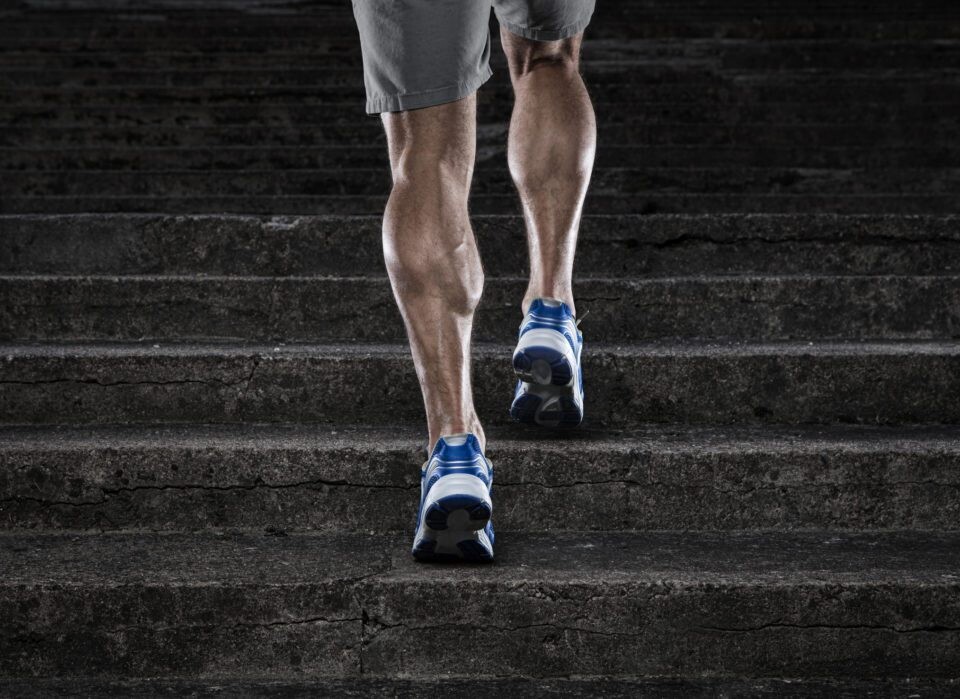
Usually the pain will lessen or disappear if you either reduce your training intensity, change your worn-out shoes or start wearing knee-length compression socks (or all three). Here are some other tips you can try to combat your shin pain.
Rest and recover

It’s smart to allow your body time to rest and recover. This means taking a break from running and other high-impact activities to give your lower leg muscles and tendons time to heal. If you are worried about losing fitness, you could temporarily substitute cycling and elliptical workouts for running.
Apply ice and compression
Using ice on your shins slows the blood flow to the area, which helps decrease pain. If you are suffering from shin pain, ice your shins for 15 minutes at a time, three to four times a day. Many runners also find compression socks helpful while training.
Stretch and strengthen
Stretching and strengthening your lower leg muscles is the best way to prevent shin splints from recurring. Adding one or two lower-body strength training workouts into your training schedule each week will help strengthen and build muscles around your shin.
Find the right footwear
Unfortunately, your running shoes won’t last forever, and should be replaced every 300 to 800 kilometres, depending on your training load, gait and terrain.
If the shoes you’re running in are more than two years old, you likely need a new pair. Make sure you find something well-fitted that instantly feels comfortable right out of the box, so you know your new pair isn’t making your shin splints worse.
(12/10/2022) ⚡AMPHeptathlete sues USA Track and Field
During a heatwave, American heptathlete Taliyah Brooks collapsed amid the 2021 U.S. Olympic trials. The athlete has taken legal action against USA Track and Field, the governing body for the sport. Heading into the trials, Brooks was a top contender in the heptathlon, a two-day, seven-event sport that involves three track and four field events: 100-metre hurdles, high jump, shot put, 200-metre dash, long jump, javelin and 800-metre run.
The June 2021 Olympic trials in Eugene, Oregon, coincided with an intense heatwave, with temperatures reaching as high as 43 C, or 111 F. While USATF managed to postpone some events to keep athletes safe (the women’s 10,000m, men’s 5,000m and race walk events) the second day of the heptathlon went ahead as planned on June 27. Requests from the athletes and their representatives to reschedule the date were denied.

Brooks, a Texas native and eight-time all-American, was in second place after the first day of competition. When temperatures soared on June 27, she began to suffer from the heat, eventually collapsing and being taken to hospital by ambulance.
Athletes who compete at USATF meets must sign a liability waiver. Brooks’s legal team initially filed a motion Nov. 29 requesting “declaratory and injunctive relief regarding unenforceability of alleged USA Track & Field Waiver and Release of Liability,” in the hopes that the waiver would be set aside, and that they will be able to pursue a direct lawsuit against USATF.
Bill Brock, Brooks’s attorney, explained in a statement that: “USATF’s effort to shed its duty to protect the health and safety of its own athletes competing in the U.S. Olympic trials is unconscionable. We are asking the court to find that USATF can be required by its athletes to hold reasonably safe Olympic trials and national championships and that USATF can be sued by its member athletes for negligence if USATF fails to conduct these events safely.”
Being an advocate and voice for change is not new for Brooks, now 27, who is a University of Arkansas graduate with a master’s degree in communications and a minor in legal studies. She wrote her master’s project in 2018 about athletes creating change: ” I wrote about Muhammad Ali and Colin Kaepernick and about teaching young kids about athletes protesting,” Brooks said in an interview with World Athletics.
When the 2021 Olympic trials incident occurred, Brooks shared a message to USATF on social media, asking them to do better, “Not only for myself, but for all of the athletes at the trials. It’s a shame my situation had to happen for the meet to finally be postponed,” she wrote. “Hurts like hell. Not because I didn’t make the team, but bc I wasn’t able to finish to even find out.”
“I’ve got some new, fresh scars on my back, but I’ll be back, the athlete shared. “Better, stronger, faster.”
(12/10/2022) ⚡AMPSpanish marathoner pushes manual wheelchair to world record at Valencia Marathon
Eric Domingo Roldan of Spain wanted to do something special to raise awareness of multiple sclerosis (MS) and to honour his mother, who suffers from the disease. On Dec. 4, and his mother Sylvia set a Guinness World Record for the fastest marathon while pushing someone in a wheelchair. Roldan ran 2:52:39 to break the previous record by 49 seconds.
Roldan had ambitions to go under two hours and 50 minutes, but his main objective was to raise awareness about MS, which has been part of his mother’s day-to-day life for some time.
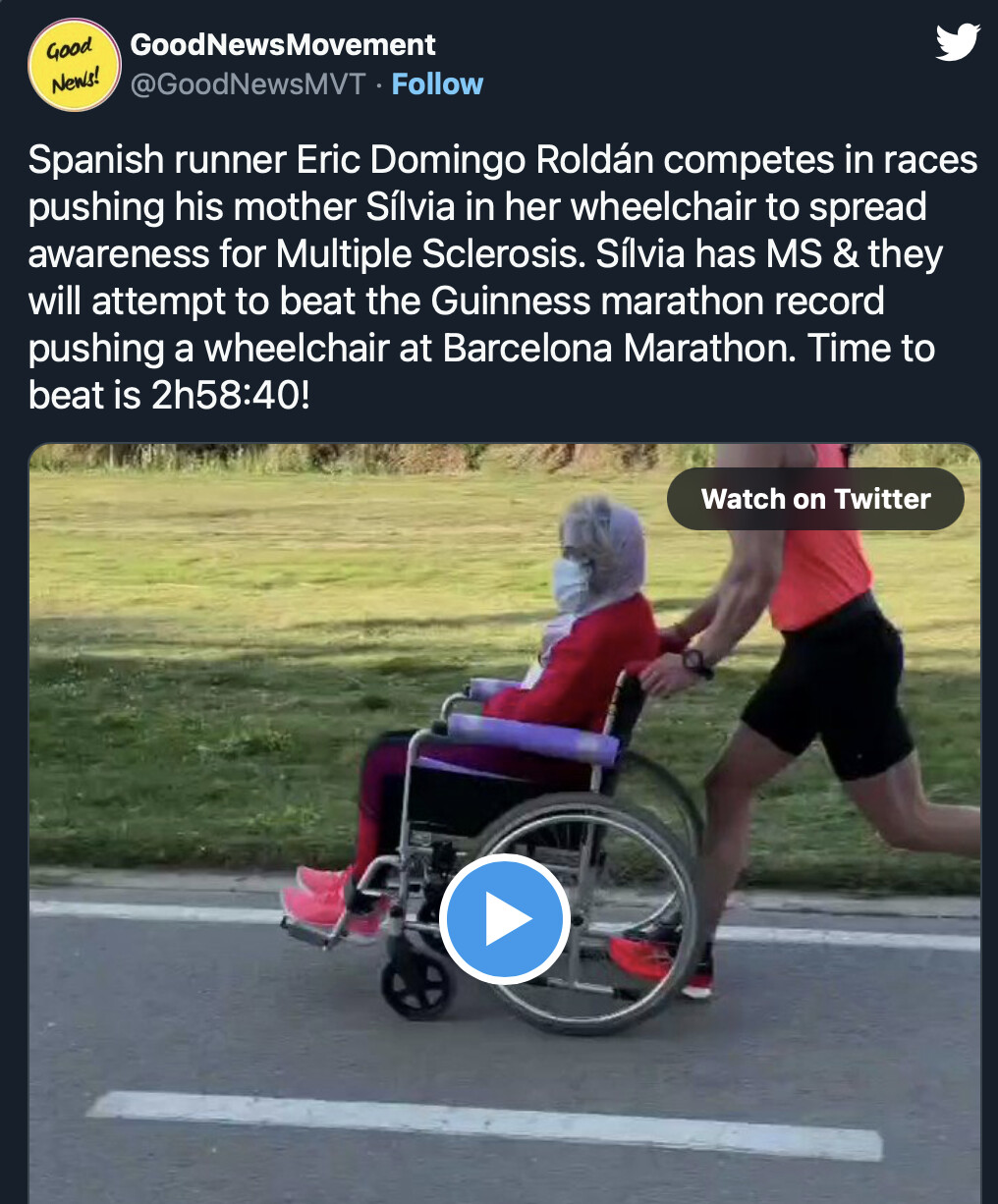
The previous record Roldan broke was his own, which he set with his mother at the 2021 Barcelona Marathon (2:53:28). He said on Instagram that he was on pace to go under two hours and 50 minutes, but a problem with one of the wheels around the 35-kilometre mark made it harder for him to push.
Roldan conquered his goal of raising three thousand euros for the Multiple Sclerosis Foundation. The wheelchair used by Roldan was not the typical sport-style wheelchair designed for racing, instead, Guinness requires a manual wheelchair to be used for record-breaking purposes.
“There are no words to describe our emotions today. It was something magical,” Roldan wrote on Instagram. “My mother is my motivation! She inspires me to be a better person. We will continue to run together and celebrate life.”
Kenya’s runner, Kelvin Kiptum, 23, won the 2022 Valencia Marathon in 2:01:53 in his debut, while Ethiopia’s Amane Beriso, 31, was a surprise win on the women’s side in 2:14:58, becoming the third-fastest woman in history.
(12/10/2022) ⚡AMPby Running Magazine
Albanian long jumper suspended after alleged cheating for Olympic spot
A long jumper and two officials from Albania have been provisionally suspended by the Athletics Integrity Unit (AIU) following an investigation surrounding the submission of false information to help long jumper Izmir Smajlaj qualify for the Tokyo Olympic Games.
On Dec. 9, the AIU announced that it had charged Smajlaj, Albanian track federation president Gjegj Ruli and the federation’s general secretary, Nikolin Dionisi, with disciplinary offences over a competition held in Albania in May 2021, two months before the Tokyo Olympics.
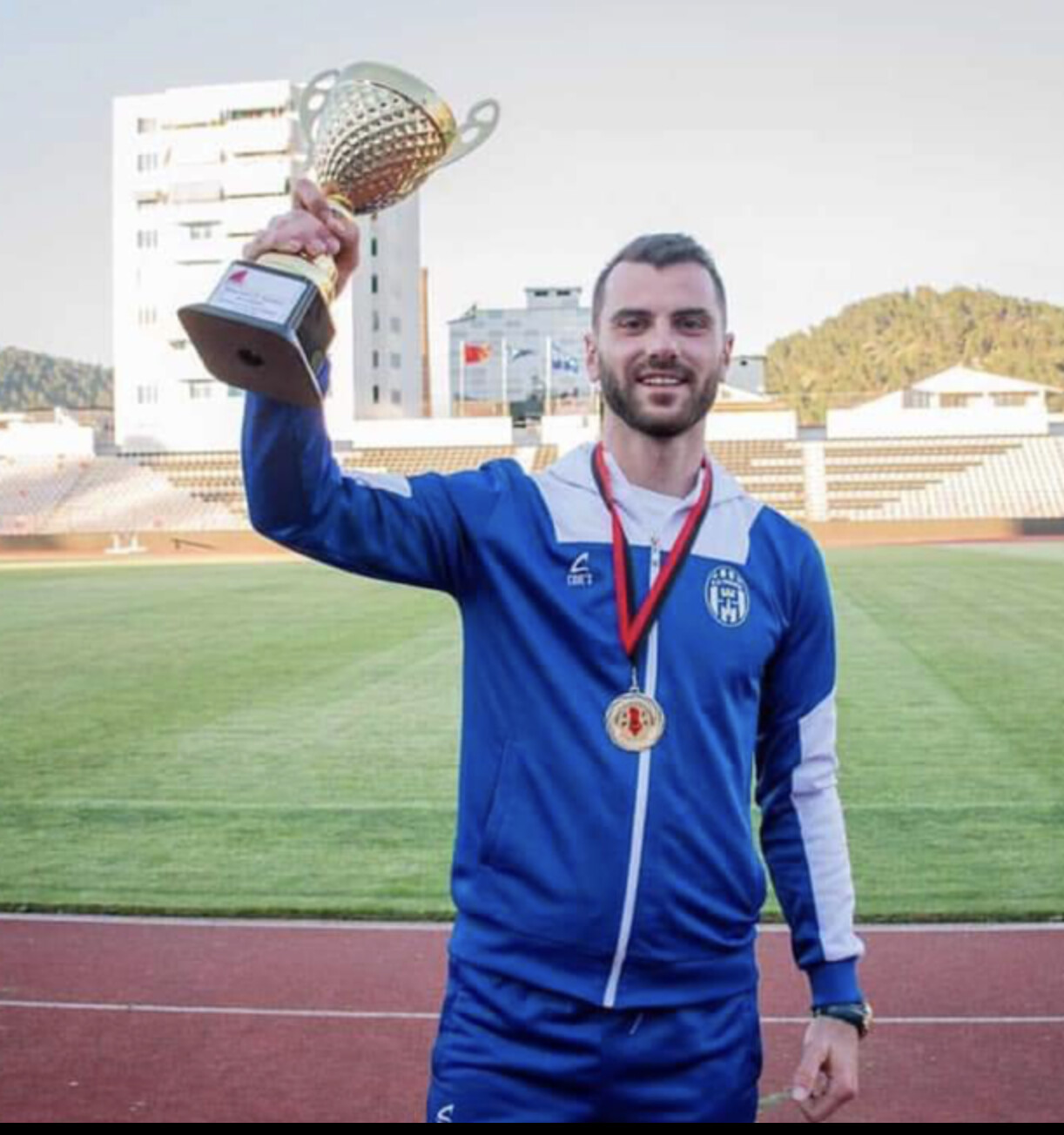
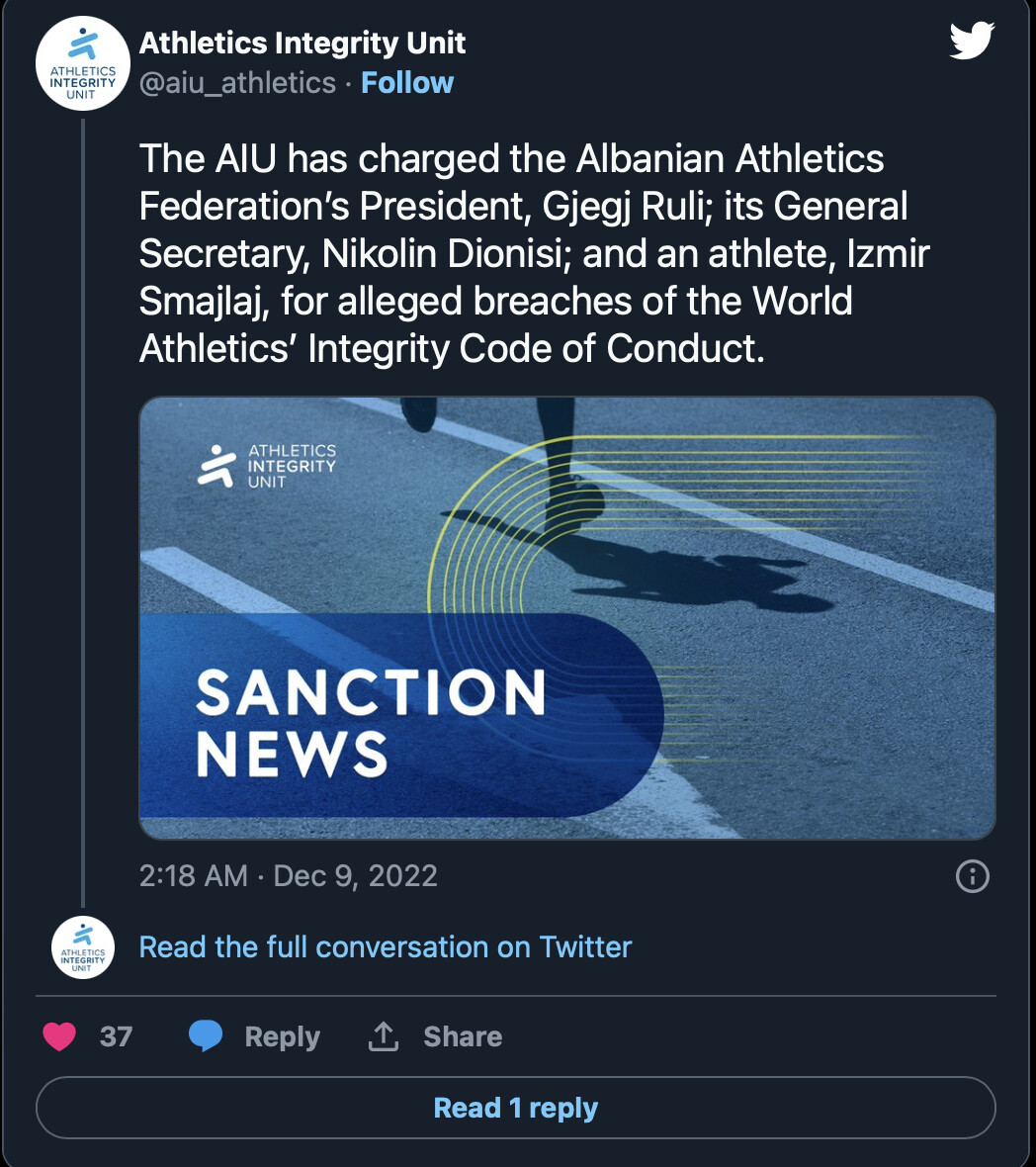
Smajlaj was named the competition winner, with a national-record jump of 8.16 metres. “It is alleged that false information was submitted to World Athletics and the AIU in support of Smajlaj’s result,” the AIU said.
According to his World Athletics profile, Smajlaj has never jumped over the eight-metre mark outside of Albania. His top five jumps in his career have all been at competitions in his home country.
Smajlaj’s result was just shy of the Olympic qualifying mark of 8.22 metres, but he was given a spot under the “universality rule” that allows smaller countries to send one male and one female athlete to the Olympic track events if they are close to the standard. These athletes still have to provide evidence they have met a certain standard to compete.
Smajlaj jumped 7.86 metres in the qualification round at the 2020 Olympics, but failed to qualify for the final.
Albania was one of seven countries on a “competition manipulation watch list” along with Turkey, Uzbekistan, Moldova, Georgia, Kyrgyzstan and Armenia.
(12/10/2022) ⚡AMPby Running Magazine
2023 Bank of America Chicago Marathon Set to Welcome 45,000 Participants for 45th Anniversary Event
Today the Bank of America Chicago Marathon announced the return to 45,000 participants for the event's 45th anniversary on Sunday, October 8, 2023. Runners who entered the non-guaranteed entry drawing for the 2023 race will be notified of their selection status today. Individuals still interested in participating can secure their place in the field by joining an official charity team. Since 2002, the Charity Program has generated more than $292 million for local, national and global causes, including the event record-breaking $27.6 million raised by participants in 2022.
"We're thrilled to host 45,000 participants for the first time since 2019 at the 2023 Bank of America Chicago Marathon," said Carey Pinkowski, Bank of America Chicago Marathon Executive Race Director. "As part of our millionth-finisher field, these participants will write their names in the event's history book during a particularly special year. We look forward to celebrating their performances, as well as the contributions of the volunteers, spectators and community members who have made the Chicago Marathon the world-class racing tradition it is today."
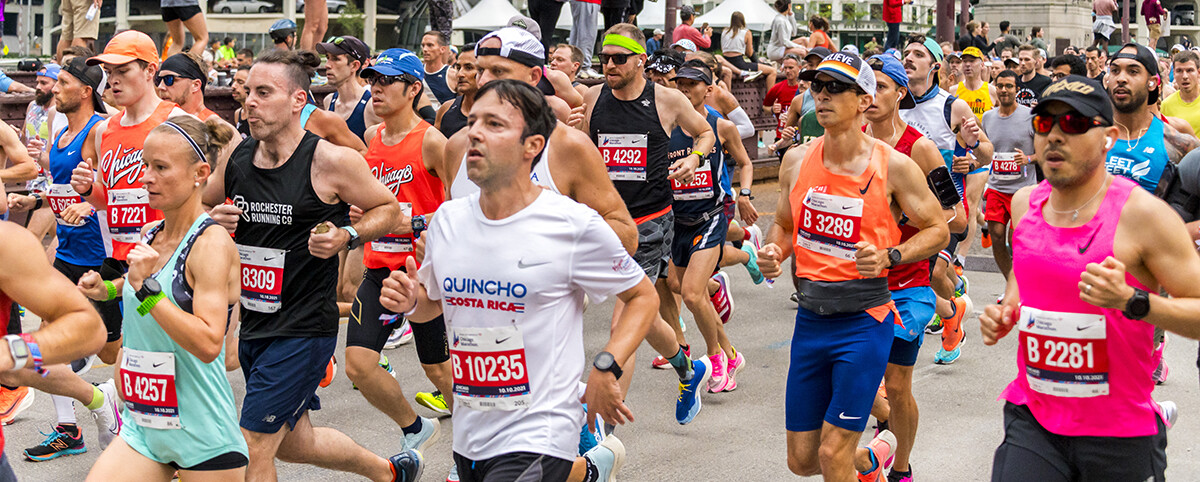
Runners who received an entry through the drawing will join those who guaranteed their entry into the race during the four-week application window. Guaranteed entries include Bank of America Chicago Marathon and Shamrock Shuffle legacy finishers, time qualifiers, international tour group participants, charity runners and those who deferred or cancelled entries from a previous event.
Runners who did not receive an entry through the drawing can still sign up through the Bank of America Chicago Marathon Charity Program. The 2023 Charity Program includes 180 nonprofit organizations raising funds related to 10 cause categories, including education, youth development, health care and social services. Runners who register to run with an official charity at this time are required to raise a minimum of $1,750. For a list of official charities and information on how to register by joining a charity team, go to chicagomarathon.com/charity.
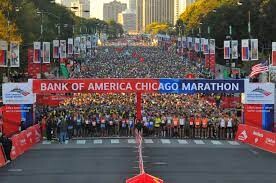
For the latest event updates, registered participants and community members are encouraged to visit the Event FAQ which is available at chicagomarathon.com.
About the Bank of America Chicago Marathon
The Bank of America Chicago Marathon welcomes thousands of participants from more than 100 countries and all 50 states, including a world-class elite field, top regional and Masters runners, race veterans, debut marathoners and charity participants. The race's iconic course takes participants through 29 vibrant neighborhoods on an architectural and cultural tour of Chicago. The 2023 Bank of America Chicago Marathon, a member of the Abbott World Marathon Majors, will start and finish in Grant Park on Sunday, October 8, 2023. In advance of the race, a three-day Abbott Health & Fitness Expo will be held at McCormick Place Convention Center on Thursday, October 5, Friday, October 6, and Saturday, October 7. For more information about the event and how to get involved, go to chicagomarathon.com.
(12/09/2022) ⚡AMPBank of America Chicago
Running the Bank of America Chicago Marathon is the pinnacle of achievement for elite athletes and everyday runners alike. On race day, runners from all 50 states and more than 100 countries will set out to accomplish a personal dream by reaching the finish line in Grant Park. The Bank of America Chicago Marathon is known for its flat and...
more...Beamish, Teare, and Kerr will highlight Millrose Games 3000m
The Millrose Games will welcome a stacked 3000m field to the World Athletics Indoor Tour Gold meeting in New York on February 11.
New Zealand’s Geordie Beamish, who holds the national indoor records for 3000m and 5000m, won last year’s race in thrilling fashion, going from fifth to first on the final lap with a furious kick to win in 7:39.50.
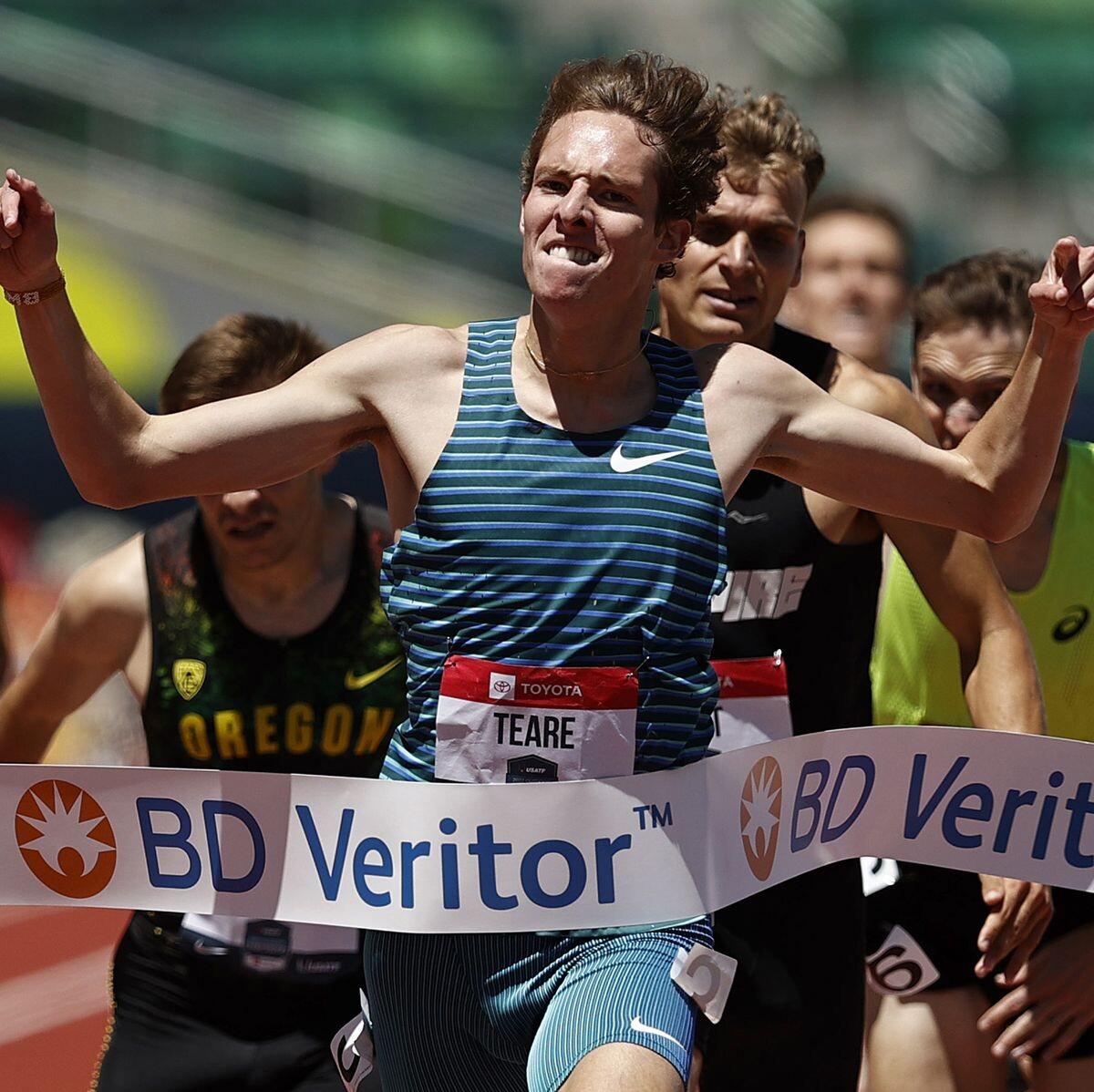
US 1500m champion Cooper Teare finished second in that race, and he will also return to the Millrose stage with revenge on his mind. “I’m beyond excited to be returning to the Millrose Games to experience the electric crowds and fast times,” said Teare.
While the rematch of last year’s tight finish is enticing enough, there are numerous other athletes who are more than capable of winning this race.

Olympic 1500m bronze medalist Josh Kerr finished second in the mile at the Millrose Games last year, then went on to set a European indoor record of 3:48.87 at that distance.
Guatemala’s Luis Grijalva was fourth over 3000m at last year’s Millrose Games, and he repeated that position over 5000m at the World Championships in Oregon.
Joe Klecker, Morgan McDonald, Olin Hacker and Dylan Jacobs – all past winners of NCAA titles – are also in the field, as is Nico Young, who recently finished second at this year’s NCAA Cross Country Championships.
These are the latest stars announced for the Millrose Games, joining the showdowns in the pole vault between Katie Nageotte, Sandi Morris, and Katerina Stefanidi, and in the shot put, featuring Ryan Crouser and Joe Kovacs.
(12/09/2022) ⚡AMPby World Athletics
NYRR Millrose Games
The NYRR Millrose Games,which began in 1908 as a small event sponsored by a local track club, has grown to become the most prestigious indoor track and field event in the United States. The NYRR Millrose Games meet is held in Manhattan’s Washington Heights at the New Balance Track & Field Center at the Armony, which boasts a state-of-the-art six-lane,...
more...Chinese Athletic Association proposes smoking bans at all marathons
The Uncle Chen era has come and gone. On Dec. 5, the Chinese Athletic Association (C.A.A.) released a proposal recommending that all Chinese marathons ban smoking.
Last month, Chen went viral after he was seen running a 3:28 marathon while smoking a cigarette at the 2022 Zhejiang Jiande Xin’anjiang Marathon in Jiande City, China. The smoking runner, nicknamed Uncle Chen, was predominantly seen as cool by foreign media but was viewed as a bad example in China.
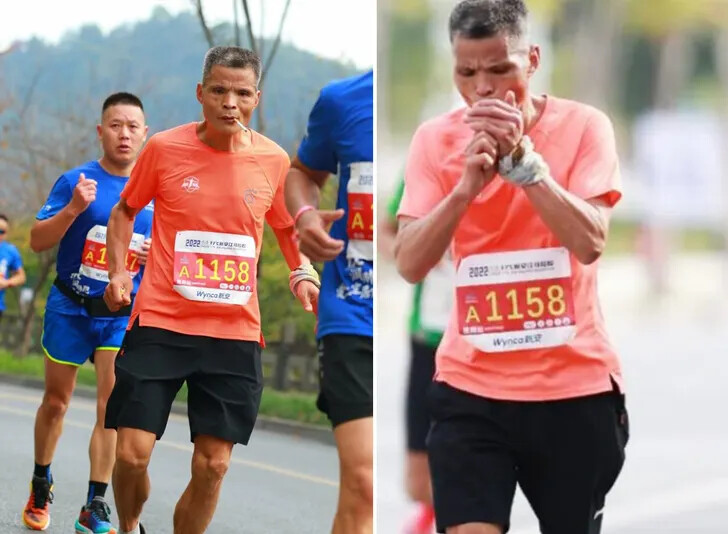
“It is not only not something to be proud of, but a shame to become popular abroad,” one journalist writes. “Smoking is harmful to health, and there should be no “smoking brother” in the marathon.”
On Dec. 5, the Chinese Athletics Association issued a “Marathon Civilized and Healthy Participation” rule proposal for marathons to follow, which states that “all runners should practice and abide by the regulations on smoking bans in public places, and be civilized, healthy, and positive citizens.”
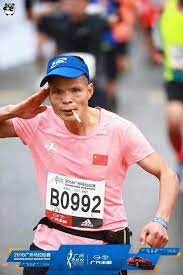
The new proposal is in place to promote healthy participation and to stop people from smoking at road-running events. However, the proposal by the C.A.A. has no mandatory binding force, and races have the final decision to comply, or not, with the suggested initiatives.
The responsibility will be on race organizers to make the decision regarding smoking at their races, but the C.A.A. states that it’s necessary to advocate for the health and safety of other runners and eliminate “smoking brothers.”
The C.A.A. recommends that those who fail to comply with the competition rules should be disqualified: “Competitors are forced to compete in a civilized manner, and jointly maintain and create a civilized, healthy and fair competition environment.”
This news would come as a shock to Chen, who has been seen smoking at marathons since 2018. He might need to start racing abroad to continue his running career and to chase that smoking 3:25 Boston Marathon qualifying time.
(12/09/2022) ⚡AMP
by Running Magazine
U.S. Olympic gold medalist Gil Roberts banned 16 months for doping
On Thursday, the U.S. Anti-Doping Agency (USADA) announced the 16-month suspension of 2016 Olympic 4x400m gold medallist Gil Roberts after testing positive for two banned selective androgen receptor modulators (SARMs).
He was a part of the U.S. men’s 4×400 metres team that won Olympic gold at Rio 2016. Roberts ran the third leg before passing the baton off to Lashawn Merritt, who secured the gold for Team USA. The following year, the same 4x400m relay team won silver at the 2017 World Championships in London.
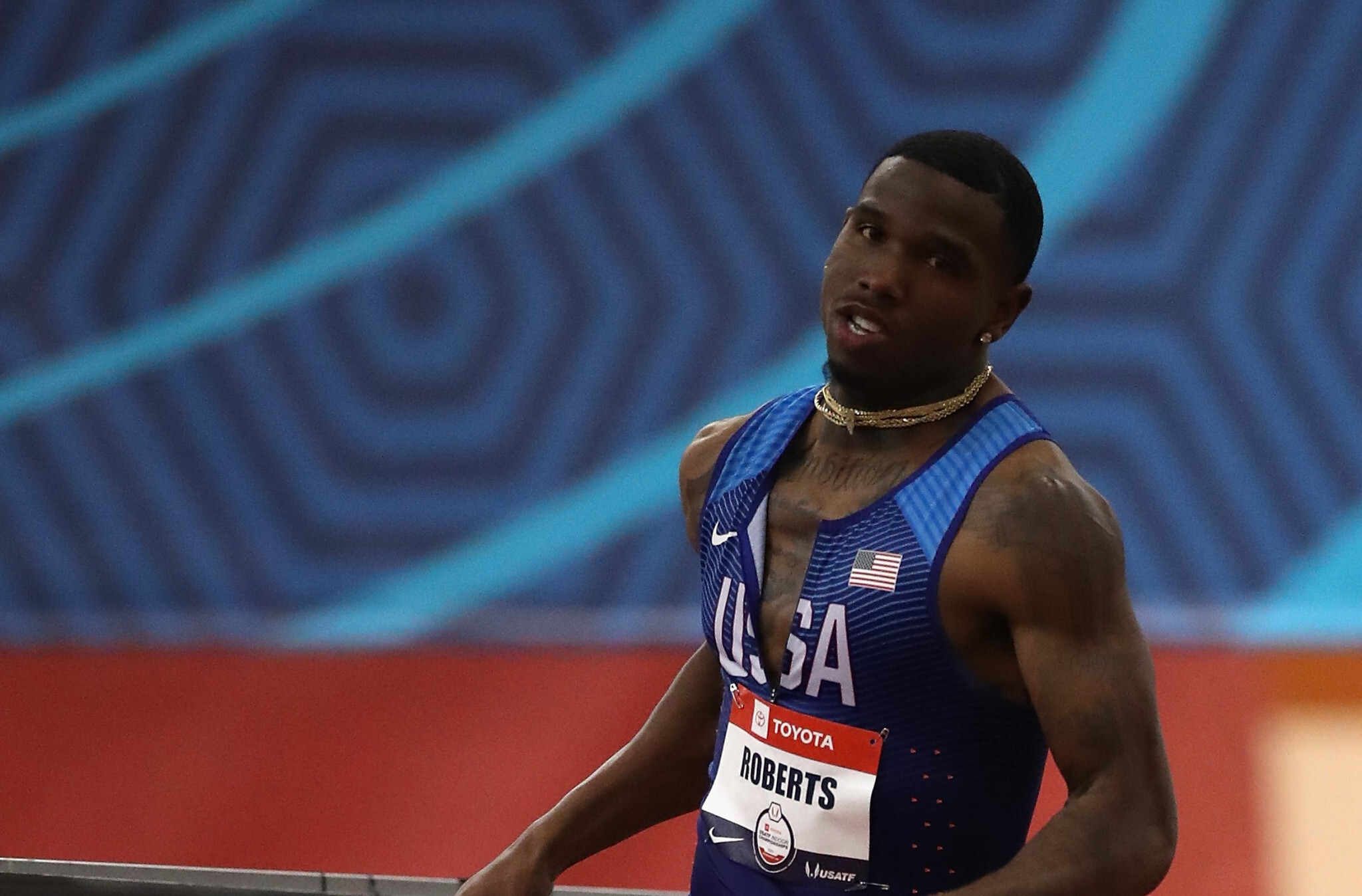
Roberts, 33, accepted a 16-month sanction after an out-of-competition urine sample collected on May 19 came back positive for andarine and ostarine. Ostarine is mainly used for fat burning and body recomposition, whereas andarine is used for preserving muscle mass.
Roberts argued that he was taking a dietary supplement that did not list the banned SARMs in its ingredients. USADA accepted this, adding the supplement to its “high-risk list,” which reduced the length of his ban from three years to 16 months.
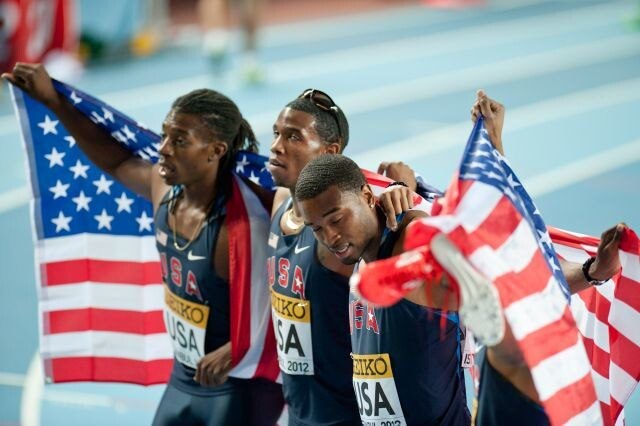
His ban has also been backdated to June 3, the date Roberts was provisionally suspended. Roberts has not competed since the 2021 U.S. Olympic Trials.
USADA stresses that all athletes are responsible for what enters their bodies and should do extensive research before taking unknown supplements. “SARMs are banned at all times and have similar properties to anabolic steroids, including aiding muscle growth or retention,” reads the USADA statement.
This is not the first time Roberts has failed a drug test, but it is his first ban. In 2017, Roberts tested positive for probenecid, a diuretic and masking agent. He successfully appealed the ruling, claiming that he had ingested the banned substance by kissing his girlfriend.
(12/09/2022) ⚡AMPby Marley Dickinson
Kenya will look to criminalize doping in athletics
In an attempt to crack down on doping, Kenyan Sports Minster Ababu Namwama told BBC News Africa that he hopes to fast-track modifications to legislation and crack down on doping the same way the government does with illegal drugs.
Last week, the East African country avoided a sanction by governing body World Athletics—despite having 55 athletes currently serving doping-related suspensions. Kenya has the third highest number of suspensions behind Russia (102) and India (61) and is categorized as one of the seven “Category A” nations threatening the overall integrity of the sport.
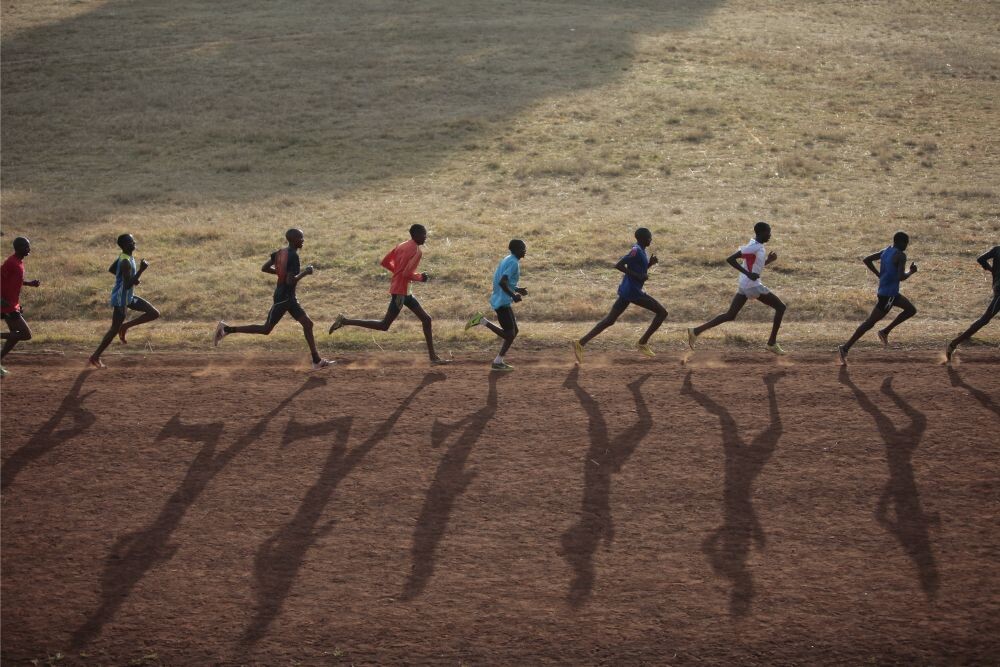
On Dec. 2, the Kenyan government reached an agreement with World Athletics to spend USD $25 million over the next five years to combat the war on doping, which will help pay for more anti-doping personnel, increase testing and investigation and strengthen education.
“I believe we need to criminalize doping and elevate the handling of doping substances to the same level [as] narcotics,” says Namwama. “Convicted dopers should be dealt with the way we deal with drug traffickers.”
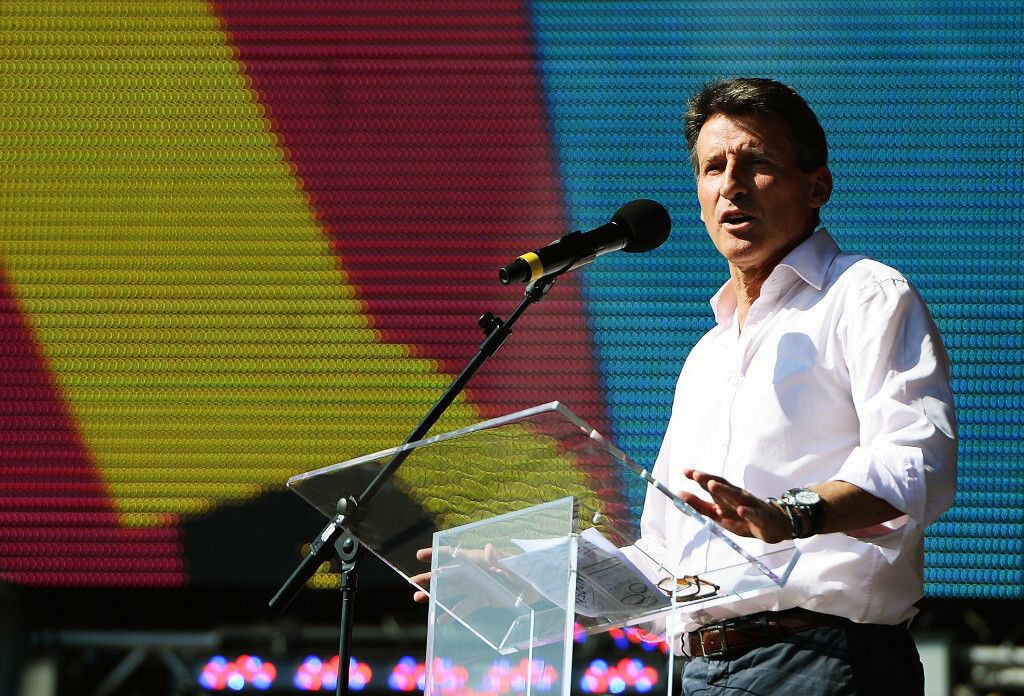
According to Kenyan law, any person who is in possession of any narcotic drug is guilty of an offense and faces a fine of five million Kenyan shillings (USD $40,000) or imprisonment for up to five years. They may also be forced into a rehabilitation program for a minimum of six months.
France is one country that outlaws doping in sports with prison sentences and fines. In 2009, the government adopted a law that penalizes the possession and trafficking of doping products in sports. Offenders can receive up to five years in jail and a 75,000-euro fine. For more severe cases, the penalty may also be increased to seven years and a fine of 150,000 euros. If an athlete is found guilty of personal use, they can be sentenced to a year in prison and a 3,750-euro fine.
During a World Athletics Council meeting in Rome in November, WA president Sebastian Coe said Kenya faces “a long journey ahead” to regain the trust of the World Athletics.
Coe told BBC News Africa that he has no problems with Kenya criminalizing the trafficking of these substances, but pointed out that criminalizing athletes can be complicated.
Previous attempts to criminalize doping in Kenya have been unsuccessful, with a motion submitted by former member of parliament and 2012 Boston Marathon champion Wesley Korir being defeated in 2016. Korir and his wife Tarah Korir lived in Waterloo, Ont. for several years before moving back to Kenya.
(12/08/2022) ⚡AMPby Marley Dickinson
Australian athlete Erchana Murray-Bartlett runs record-breaking 107 consecutive marathons
On a very warm August morning Erchana Murray-Bartlett began running from Cape York, Australia, to Melbourne (the tip to the toe of Australia, inspiring the name of her fundraiser, “tip to toe 2022”). On Sunday, Dec. 3, 107 days later, she achieved one of her goals–setting the Guinness World Record for running the most marathons in a row by a woman.
After meeting her parents at the finish line to celebrate, she rested and re-fueled so she could start again in the morning, raising money for endangered animals along the way. She’s not stopping until she hits 150.
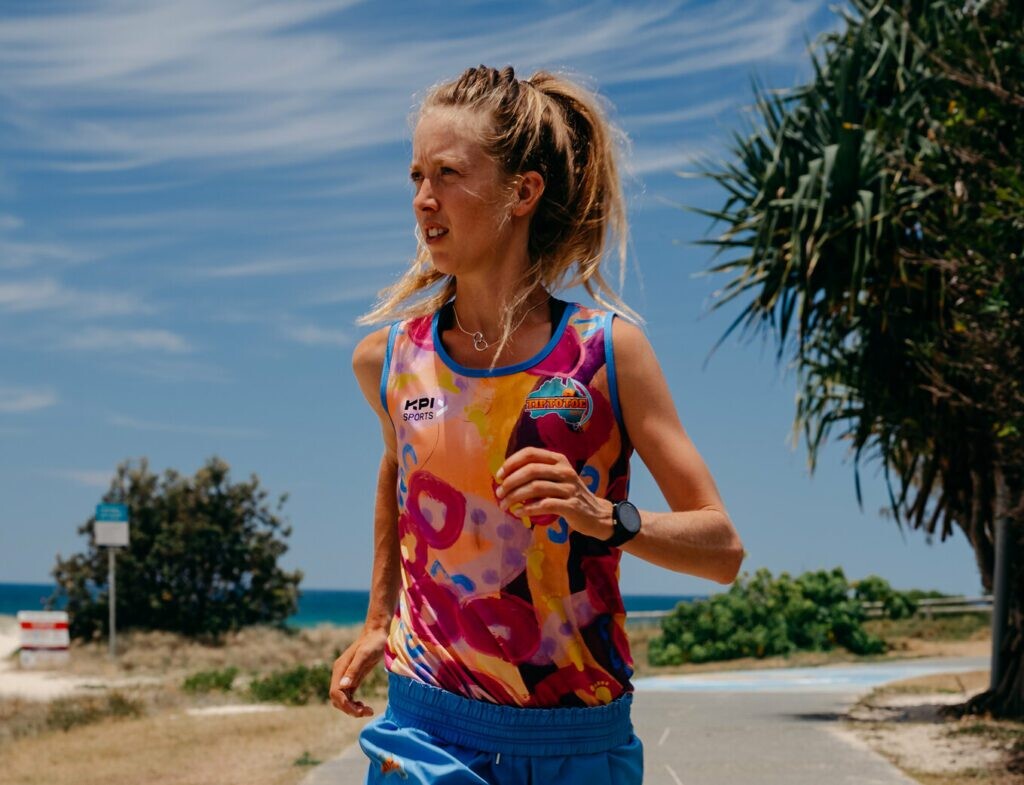
Murray-Bartlett, 32, has a master’s degree in nutrition and has been an elite runner for a decade. “The sport has provided me with many opportunities to travel, meet new people and push my physical boundaries,” she says, adding that she runs every day regardless of conditions. She credits her partner, Ryan, with helping get her project rolling, taking video footage, and supporting her along the way.
“I have always wanted to cross the country on foot, but the real kicker started when I watched a documentary of Beau Miles running 650km through the Australian Alps when I was stuck in hotel quarantine during the covid pandemic,” Murray-Bartlett explains. We caught up to Murray-Bartlett after Sunday’s record-breaking run.
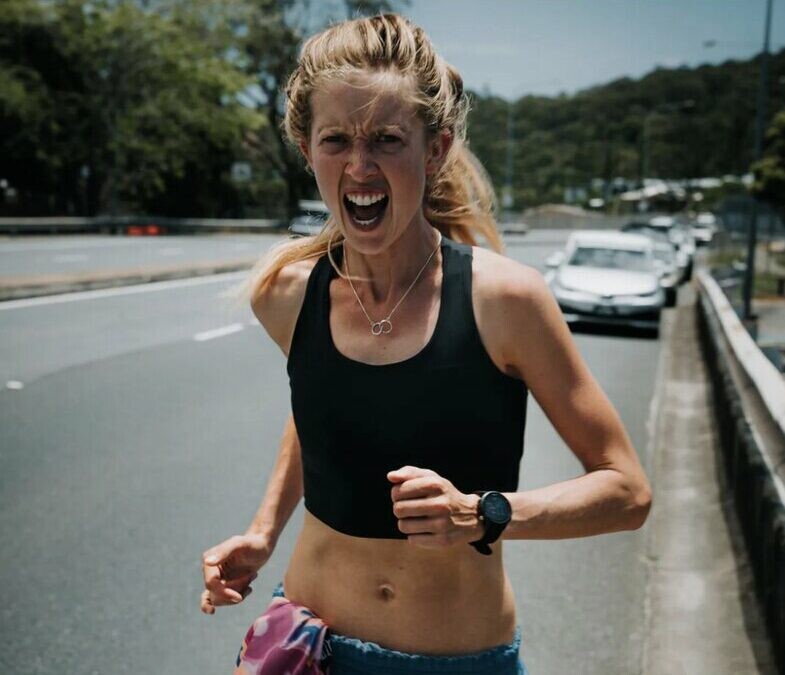
CR: What inspired you to start this record attempt (and to go for the 150 days)?
I love Australia’s native animals. I think they’re incredibly unique, with fun personalities and interesting characteristics. We have some globally iconic wildlife, yet Australia is a world leader in biodiversity loss. We have almost 500 native animals currently sitting on the endangered list. This number has risen by 8 per cent since 2016.
Extinction is a choice and we need to educate our policymakers to ensure we are making the right one. So, I’m running to be the voice of our native animals and the wild places they call home. I wanted to counteract a bad world record (Australia being a world leader in biodiversity loss) with a good world record (breaking the GWR for most consecutive marathons by a female).
CR: What does it feel like to run 107 marathons in a row? How is your body doing?
To be honest, I’m exhausted. My hips, feet, legs and back ache. I feel a little bit emotionally exhausted too after reaching the record last Sunday–the challenge is now to just keep going, and I’m excited to see what my body can do.
The hardest part was the first month. My body was still adjusting and I found myself with three injuries, all on my left leg. Now, the daily grind is a familiar feeling and I’m finding I’m actually feeling stronger and stronger as time goes by. Mentally, I’m very motivated and extremely excited to continue the journey to Melbourne. There are some incredible places to see in my immediate future and some great people to meet!
CR: What does a typical day look like?
I wake up really early to avoid the intense Aussie sun and hit the road after a quick coffee and bowl of oats with banana. I’ll run south for around four hours, passing through national parks, coastal paths, and taking gorgeous backroads, until I hit the 42.2 km mark.
The afternoons are what vary–we set up camp, eat a big meal, and shower in any body of water. Then I spend the afternoons visiting schools, grassroots volunteer programs, or engaging with the media about the cause. I try and spend a little bit of each day recovering, but sometimes this actually gets pushed down the priority list.
What do you eat to keep you going out there? Any favorite fuel?
I eat loads! About 5,000 calories per day, with a big breakfast, coffee, and then snacks throughout the run. This includes fruit, Clif bars, Hydralite, and anything else I can get my hands on. I have lunch, and then often a second lunch (a wrap, a burger, or nachos) and a giant dinner.
Since we’re camping it has to be anything that can be cooked on a gas stove top. And always, without fail, some dark chocolate for dessert. I’ve actually sampled every ice cream down the East Coast of Australia so far!
So far you’ve raised nearly $50, 000 AUD for at-risk wildlife. How can our readers learn more about your fundraiser?
I’m taking donations via my GoFundMe page. Funds will go a long way towards helping the Wilderness Society continue its amazing work fighting extinction. Let’s work together to keep wild places wild!
(12/08/2022) ⚡AMPby Running Magazine
Increase your aerobic capacity and strength in just four short laps around a standard running track
Remember that oval track behind your old high school? It’s not just for track-and-field types anymore. In fact, if you happen to have a track in your neighborhood today, it may soon become the site of your next great workout.
Just under a quarter-mile long, a standard track is full of numbers and landmarks that are great for dynamic, multi-activity workouts. Track workouts like these seem to shrink distance, spicing up your milelong (or longer) runs, and making it easier and more fun for you to improve your aerobic endurance, power and speed.
The concept is simple: By varying your running speed for short distances and adding special tasks and drills, you simultaneously banish boredom and increase your body’s aerobic capacity and strength. As a result, you’ll begin burning oxygen more efficiently, and, over time, you’ll be able to run farther and faster with ease.
Joe Friel, MS, founder and head coach at TrainingBible Coaching and author of Your First Triathlon, says he often has his clients do a dynamic track workout he calls “strides,” which mixes tasks such as plyometrics and skipping drills with running.
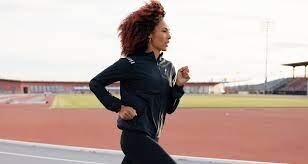
“I consider this one of the most important workouts my athletes — pros and novices — do to improve their economy and form,” Friel says. And, he adds, every physical activity — running, cycling, swimming, basketball — will become easier when you make this a part of your exercise routine.
“Each lap specifies a fresh set of tasks to complete, which gives you multiple goals you can achieve during a single run,” explains Troy Jacobson, national director of endurance sports training at Life Time in Chanhassen, Minn. “And collectively, those laps add up to one big goal: running a full mile.”
Plus, unlike simply going out for a jog on a sidewalk, using a standard running track to guide your workout gives you clear measurements to gauge your progress, augmenting your feeling of incremental accomplishment and motivation.
Still worried that a mile is too far to travel? Listen to music or recruit a workout buddy, suggests Amby Burfoot, former Boston Marathon winner, editor at large for Runner’s World magazine and author of The Runner’s Guide to the Meaning of Life. “You can time each other during the fast intervals and help record each other’s progress over time.”
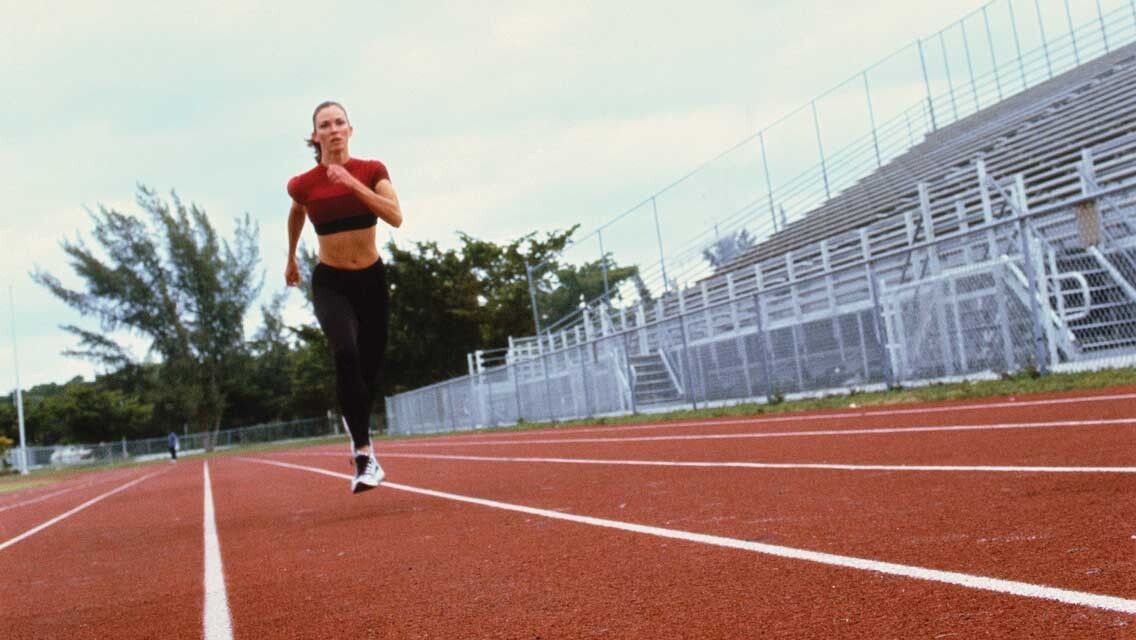
The Workout
This fun, milelong track workout should take between 20 and 30 minutes for beginners (between 10 and 15 minutes for more highly trained athletes) to complete. For each of the four laps (it will be eight laps if you’re on a 200-meter indoor track), do your best to complete the suggested tasks based on your current fitness level. If you find any part of the workout too challenging, you can back off on reps or intensity, or skip an exercise in favor of jogging the equivalent distance on the track. Just build up to doing more of the exercises over time.
Note: Before getting started, begin with a five-minute dynamic warm-up that includes exercises such as light jogging, arm and leg swings, high-knee pulls, and body-weight squats. (See “The Art of the Warm-Up”.)
Lap 1: Run + Walk
Do what’s called a “fartlek,” or speed-play, lap. Jog or walk the turns and go fast on the straights. If you’re with a friend, walk the turns and race each other on the straights. If you’re on a small indoor track, complete the fartlek by time, not distance (jog or walk for 30 seconds, then sprint for 30 seconds; repeat for three minutes).
Goal Achieved: Speed intervals improve cardio endurance and overall running speed. Varying your speed makes the lap feel shorter, too.
Note: “Beware using the inside lane for any prolonged sprinting,” Burfoot warns, since tight, one-directional turns can strain your knees and ankles. If the track isn’t too busy, switch directions or use the outside lanes to keep things balanced. (For more tips on using the track, see “Anatomy of a Track,” below.)
Lap 2: Run + Calisthenics
Jog 100 meters (generally a quarter of the track), then do 10 pushups: Get into pushup position, hands just wider than shoulder width. Keeping your back straight, bend your elbows to lower yourself to the ground. When your chest is just off the ground, push yourself back up to the starting position.Sprint 100 meters, then do 10 crunches: Lie on your back on the grassy infield and bend your knees. Place your hands behind your head and contract your abs, raising your shoulders a few inches off the ground. Keep your neck neutral and your chin pointed toward the sky. Slowly lower yourself back down and repeat.
Jog 100 meters, then do 10 prisoner squats: Stand with feet slightly wider than shoulder width, toes pointed slightly outward, and lace your fingers behind your head. Keeping your elbows pointing straight outward, bend at hips and knees until your thighs are parallel to the ground. Press back up to the starting position and repeat.
Sprint 100 meters, then do 10 squat thrusts: Stand with feet together. Squat down and place your hands on the ground just outside your feet. In one fluid movement, thrust your feet backward, landing in a pushup position, jump back to the squat position, stand and then repeat.
Goal Achieved: Varying the speed of your 100-meter segments continues that fartlek-interval effect, while the various tasks in between build core strength, working your major muscle groups and giving you more power. Plus, the variety of exercises keeps your mind occupied so you don’t realize you just completed another quarter mile.
Lap 3: Run + Plyometrics
Run 100 meters, then jog up and down a flight of stairs or bleachers. If no stairs are available, then “high step” or run in place, raising your knees as high as you can, for 30 seconds. This exaggerated movement will put more spring in your step and help your normal running stride feel easier.
Sprint 50 meters, then do 10 plyometric box jumps: Find a sturdy platform (such as a stair, step or box) approximately 12 to 24 inches high. Stand in front of the step with feet shoulder-width apart. Jump straight up and land lightly but squarely on the step. Step down and repeat. If no step is available, jump in place.
Sprint 50 meters, then do walking lunges for 50 meters: Step forward with your right leg, lower your hips toward the ground and bend both knees to 90 degrees. Your back knee should almost touch the ground; keep front knee aligned over ankle. Push off the heel of your right foot, lift your left foot and bring it to center, then step forward with your left leg. Alternate legs, continuing for 50 meters.
100 meters running with butt kicks: As you run, bring your heels to your butt without arching your back; repeat as you move down the track for 100 meters. You should feel a strong stretch in your quads.
Goal Achieved: This lap is all about building speed, power and conditioning while keeping you distracted with the tasks, says Jacobson. Speed is a simple equation of stride length times stride frequency, Burfoot explains, and moves such as butt kicks and walking lunges will improve both stride and frequency. They also help improve your running form, which will make you more efficient, so you’ll need less energy to travel the same distance. Try to move seamlessly from task to task without resting in between. As you build endurance and strength, you can increase the number of reps or the distance.
Lap 4: Wind Down
Run 100 meters along the straightaway, pushing your pace from a jog to a stride, but keeping it short of an all-out sprint.
Pump arms overhead, as if punching the sky, as you walk or jog 100 meters around the next curve.
Side shuffle the length of the straightaway, taking care to keep your feet from touching each other. Switch your lead leg halfway down to balance the muscles.
Pump arms overhead as you walk or jog around the final curve.
If you have time, walk one additional lap while sipping water. This will help you cool down further, rehydrate, and begin to flush the waste products out of your muscles.
Goal Achieved: This gradual cool-down also works your upper body, quads and hamstrings.
(12/08/2022) ⚡AMP
by Gina DeMillo Wagner
Norwegian athletes spend 24 hours running laps in a basement
If you’ve ever read about a race or endurance event and asked yourself “why?” this short film is for you. “I love running and can truly understand why people want to challenge themselves both mentally and physically,” says endurance athlete and filmmaker Göran Winblad. Despite that, the Bislett 24-hour Indoor Challenge, held in the basement of the Bislett stadium in Oslo, Norway, left Winblad baffled.
Winblad heads to the event to figure out what motivates the athletes “running in circles with nothing but cement walls to look at.” Arriving at the stadium after the 20th hour, Winblad says he doesn’t know what to expect or if anyone will even be functioning well enough to speak to him.
Watch this short film for the remarkable humans Winblad talks to and the insight they share, but also for Winblad’s stunning filmmaking skills–who would have thought a race in a basement could be beautiful? Frank Løke, who completes 217 km by the end of the event, calls it the “toughest thing he does all year.” But, he adds, it helps him train to summit Everest and K2. “How can you train for the toughest mountain in the world? You have to do some crazy sh*t,” Løke says.
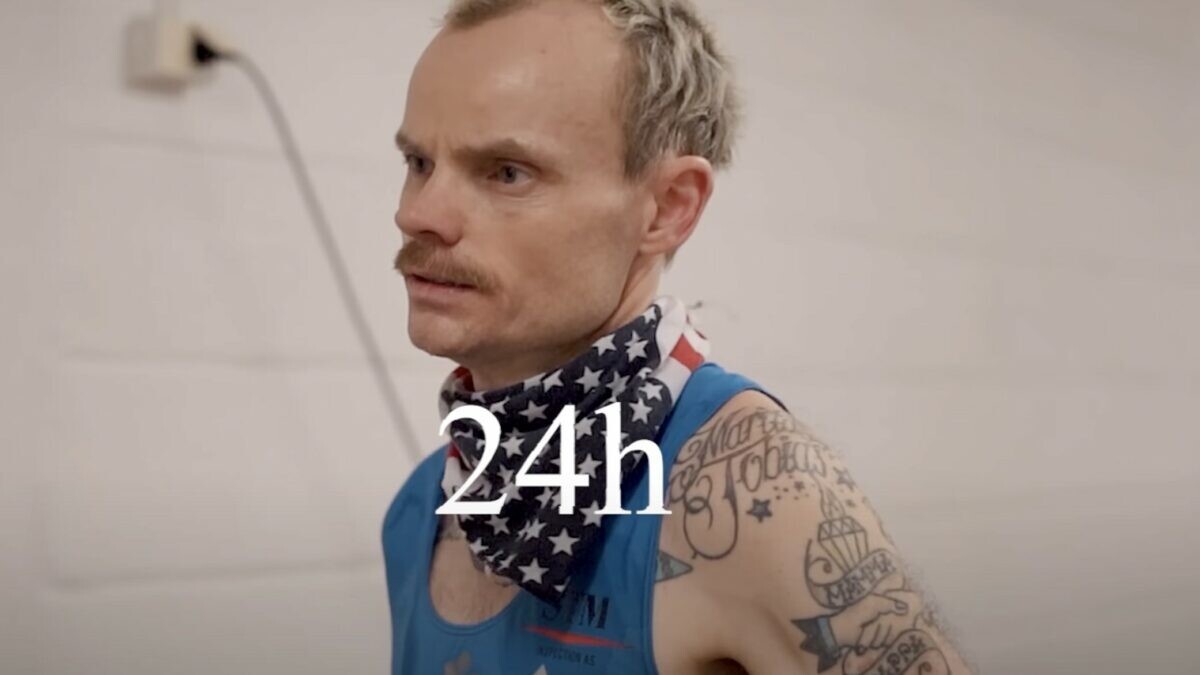
One of Norway’s best ultrarunners, Bjørn Tore Kronen Tarenger (who leads the event with 260 km) calls the monotony and challenge “fun.” (To be fair, he looks like he’s out for a 5K jog in the park.) Winblad asks Tarneger what, exactly, makes the event fun, and Tarenger’s response is what one might expect from someone who enjoys running in circles for 24 hours: “I feel the pain.”
One runner, whose feet are so sore by the time Winblad speaks to her that she’s forced to run “like a penguin,” says she thinks it’s “something you have to do once in a lifetime.” She quickly adds that it’s her second time. Winblad notes that many of the runners say they’ll never do the event again when he speaks to them, yet keep returning year after year–the race sells out in moments.
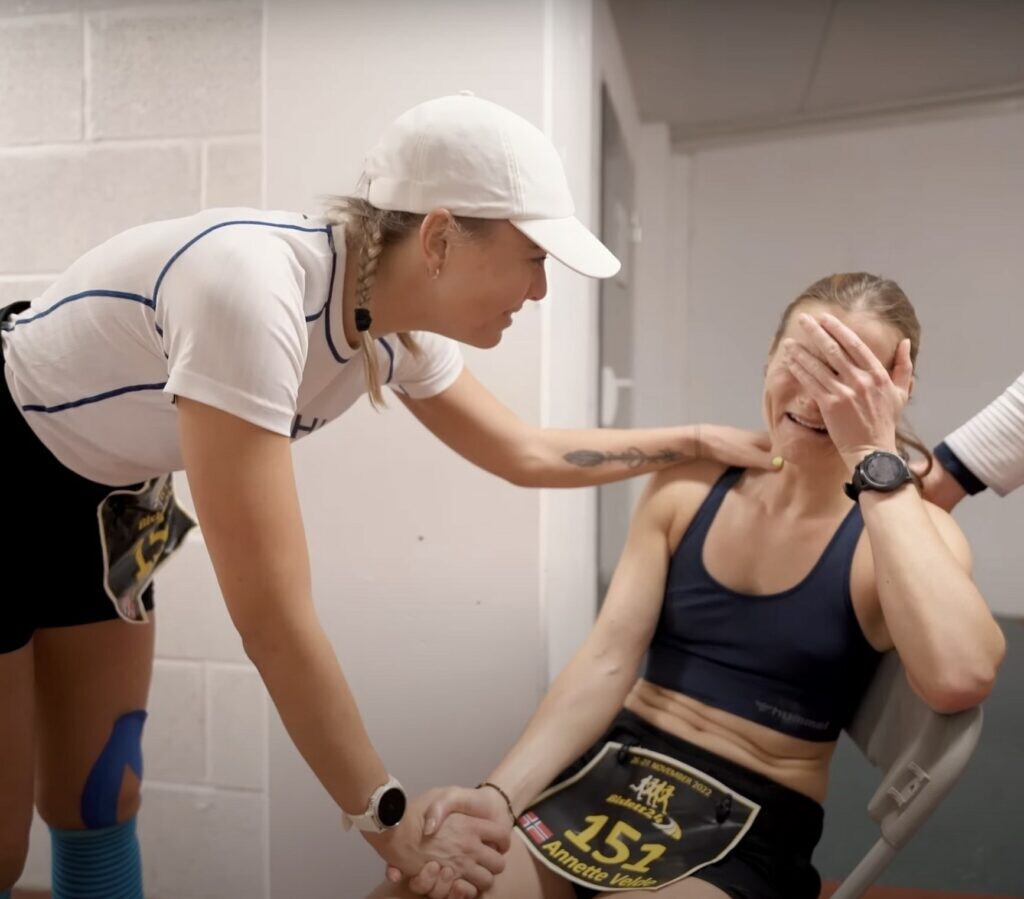
The Bislett Stadium hosts many renowned track and field events, and Karsten Warholm famously set the world 400m hurdles record there, the drive behind which Wimblad can understand: “fame, money, being the best in the world.”
(12/08/2022) ⚡AMPby Keeley Milne
Kenyans Dickson Chumba and Daniel Kibet confirmed for Adnoc Abu Dhabi Marathon
Kenya’s Daniel Kibet, winner of the 2019 Istanbul Marathon and runner-up at this year’s Milan Marathon, is joined by compatriot Dickson Chumba, who has won two of the world's major marathons - Tokyo in 2014 and 2018, and Chicago in 2015.
The women’s race will feature 2015 marathon world champion and 2016 Olympic bronze medalist Mare Dibaba of Ethiopia, and Angela Tanui of Kenya - who won the Amsterdam Marathon in 2021 and finished fourth and second respectively in the 2022 Tokyo Marathon and 2019 Vienna Marathon.
A record 20,000 runners are expected to line up for this year’s event, which includes a new route for the 42.2 kilometer race, marathon relay (two runners completing 21.1km each), 10km, 5km, and 2.5km runs.
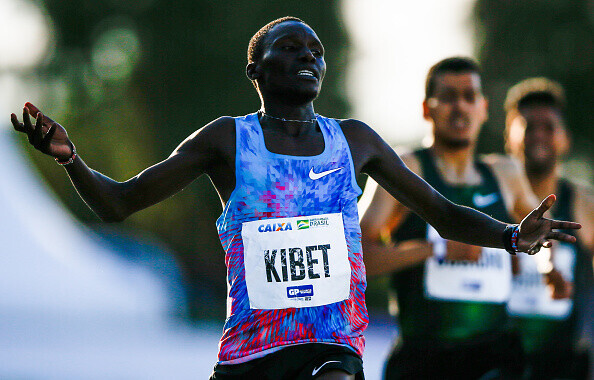
The race starts in front of Adnoc Headquarters, and runners in various distances will cross a host of the city’s most iconic landmarks.
Aref Al Awani, general secretary of Abu Dhabi Sports Council, said the Adnoc Marathon has attracted interest from the world’s elite runners since its inception.
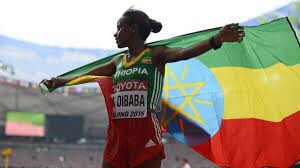
“The calibre of elites for this year’s race speaks volumes of how quickly Abu Dhabi and the Adnoc Abu Dhabi Marathon have earned a reputation on the world’s long-distance running map,” he added.
“Attracting more than 20,000 participants is clear evidence of the event's distinguished position in the community and its ability to enhance collective efforts and encourage healthy and active lifestyles.
“The participation is still open across all distances and accessible to participants of all abilities.
“Therefore, we encourage everyone to register and join us on December 17. The 2.5 km race, named “Run Together”, provides an opportunity for people of determination to compete alongside other participants.”
Meanwhile, race organizers also revealed a new medal design. The new design incorporates the expected record number of participants set to take part in this year’s races.
The Adnoc Abu Dhabi Marathon Race Village will be open from December 13, and will include entertainment for all members of the family.
Registration for the marathon and its accompanying race distances are open. For details, visit https://www.adnocabudhabimarathon.com
(12/07/2022) ⚡AMPby N Sport
ADNOC Abu Dhabi Marathon
The Abu Dhabi Marathon is shaping up to being first class marathon for both elite runners and average runners as well. Take in the finest aspects of Abu Dhabi's heritage, modern landmarks and the waters of the Arabian Gulf, at this world-class athletics event, set against the backdrop of the Capital's stunning architecture.The race offered runners of all abilities the...
more...Holiday Gift Ideas for Runners
Need a holiday gift for that runner in your life? Well, you’ve come to the right place! From one runner to another I’ve compiled a list of gift ideas that any runner is sure to love.
Whether it’s a practical gift that will help improve their running or something to just help them run in style, I want to help you find the perfect gift for the holiday season (or any occasion for that matter!). Great gifts for runners can range in price from stocking-stuffer size all the way up to a few hundred bucks. On this list you’ll also find some great custom gift ideas!
1. High-quality athletic socks

Everyone could use more socks, but let’s face it no one likes to go buy them. It’s a classic Christmas gift that will keep the runner in your life blister-free!
2. A Foam roller

Those with tight muscles (AKA every runner), will absolutely thank you!
3. A Massage gun
The perfect way to target and stimulate those hard to reach sore muscles. These massage guns are newer to the market but are a life-saver for hard to reach tight spots. This is a great gift for a runner who needs serious recovery!
4. A high-power blender
For the runner who loves making a post workout smoothie, and needs some serious power to blend up all that frozen fruit and ice!
5. A race bib and medal display
A perfect gift for the runner who loves to race and show off the results of all their hard work!
6. Phone armband
For the runner who likes to take their phone with them everywhere they go, but doesn’t want any extra weight or bulk.
7. A GPS watch
A good way to help the runner in your life record their runs and also keep track of all the stats like mileage, pace, and cadence.
8. Sweatproof wireless earbuds
Water resistant headphones are a must if you love to listen to podcasts and music on your runs. The latest in truly wireless headphone tech provides amazing sound quality, and the ability to listen with just one earbud for safety. And, no more annoying cables!
9. Lock Laces
This is a great gift for a runner who likes to head out on wet or muddy trails. No more slippery, wet laces that won’t stay tied!
10. Long sleeve or running jacket
The perfect gift for a runner who heads outside no matter the weather! And, you can never have too much stylish running gear
11. Custom Marathon photo frame
A gorgeous way for the runner in your life to show off their race photos!
12. Hydration backpack
For the runner who goes long distances, carrying a water bottle can be heavy and annoying. But, we all know staying hydrated is necessary. A hydration backpack is a great gift for runners to help them bring more fluids on their runs!
These hydration packs also often contain extra pockets for fuel, phone, and house keys – bonus!
13.- Running Journal
A perfect gift for a runner who loves to track their training and reflect on their running journey!
(12/07/2022) ⚡AMPby Stephanie Hnatiuk
10 years later: Pamela Jelimo to receive London Olympics bronze
Though out of the public limelight, the history-making Pamela Jelimo is still winning.
Jelimo, the first Kenyan woman to win an Olympic gold medal with her exploits in 800m at the 2008 Beijing Summers Games, is set to receive yet another medal.
Jelimo, the 2008 Africa 800m and 2012 World Indoor 800m champion, who finished fourth in one minute and 57.59 second set to benefit after race winner Mariya Savinova from Russia, was stripped of the gold medal for doping.
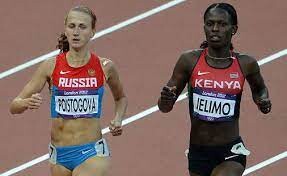
Jelimo, who celebrated her 32nd birthday on December 5, is set to receive her bronze medal from the 2012 London Olympic Games on Wednesday at the National Olympic Committee of Kenya (NOC-K) office, Gallant House, Nairobi.
Legendary Kipchoge Keino, who is an International Olympic Committee (IOC) member alongside NOC-K president, Paul Tergat, will preside over the presentation ceremony.
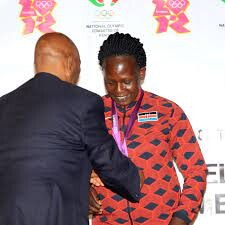
South Africa’s Caster Semenya and another Russian Ekaterina Poistogova, who had settled for silver and bronze, were scaled to gold and silver with their times of 1:57.23 and 1:57.53 respectively.
Kenya’s 2007 World 800m champion Janeth Jepkosgei, who had settled eighth in the race in 2:00.19 and Hellen Obiri, who came eighth in women’s 1,500m at the same Olympics, will receive their certificates.
Another Russian Elena Arzhakova, who finished sixth in 1:59.21 in the same race was also banned for having doped too.
With Savinova and Arzhakova banned, Jepkosgei, who had settled eighth in the race in 2:00.19 was upgraded to sixth.
On November 9, 2015, the Independent Commission Investigation of the World Anti-Doping Agency (WADA) asked for a lifetime ban for doping for Savinova, who had won gold and Poistogova, who had won bronze.
In February 2017, it was announced that Savinova was stripped of her gold medal but Poistogova was suspended in 2017 for two years, backdated to October 2014. Her London result, though, was not affected.
Alysia Johnson Montaño (1:57.93) from the United States of America and Burundi’s Francine Niyonsaba (1:59.63) finished fourth and fifth in the women’s 800m final.
A record four athletes that finished ahead of Obiri, who had settled 12th, were suspended for doping- Aslı Çakır Alptekin and Gamze Bulut from Turkey, who had won gold and silver respectively, Natallia Kareiva of Belarus, who had finished fifth and Russian Yekaterina Kostetskaya, who came sixth.
Maryam Yusuf Jamal (Bahrain), Tatyana Tomashova (Russia) and Abeba Aregawi (Ethiopia) were all scaled to gold, silver and bronze.
Aregwai, who changed allegiance to Sweden was suspended for doping in 2016.
This is the second time Olympics medals or certificates are being awarded in Kenya years later.
Asbel Kiprop received his gold medal from the 2008 Beijing Olympics in Nairobi in 2011 after the winner, Rashid Ramzi , was flagged down for doping.
(12/07/2022) ⚡AMPby Ayumba Ayodi
When life throws a wrench into your training plans, switch it up with one of these fast, effective sessions
If the holiday season (or life in general) has you time-crunched, it can be daunting trying to fit your running sessions in and tempting to skip your workout altogether. Here are a few quick, powerful running workouts to slide into your day when you’re short on time. You’ll feel the burn of a solid speed session without spending hours logging mileage or planning out intervals.
Fast fartlek
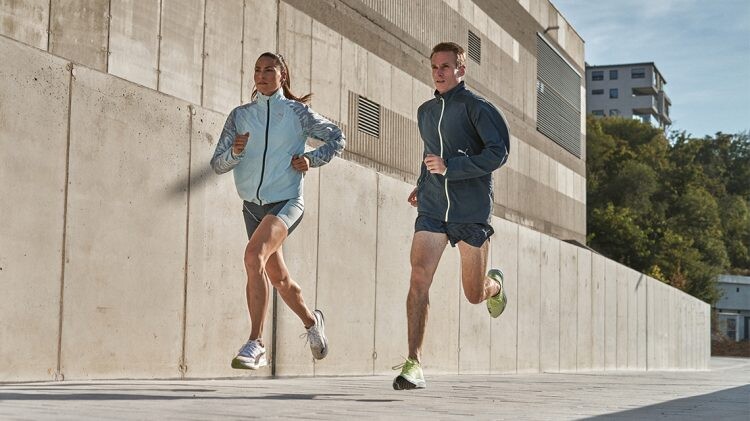
A fartlek run (fartlek is a Swedish word that translates to speed play) is perfect for a busy day because it has no pre-determined length or specific structure. You don’t need to have set interval lengths in mind for this one–just head out the door and run around your neighborhood. If you only have 30 minutes to spare, up the intensity of your workout by picking up the pace on the harder sections and shortening your recovery.
After a short, easy warmup, pick a landmark in the distance, like a tree or lamp post. Run at a harder effort or tempo to run to your target, then come back to your easy pace for a short recovery. Continue to do this throughout your entire run, and choose focus points that are varying distances away to really embrace the idea of speed play. Allow for a few minutes of easy running to cool down at the end.
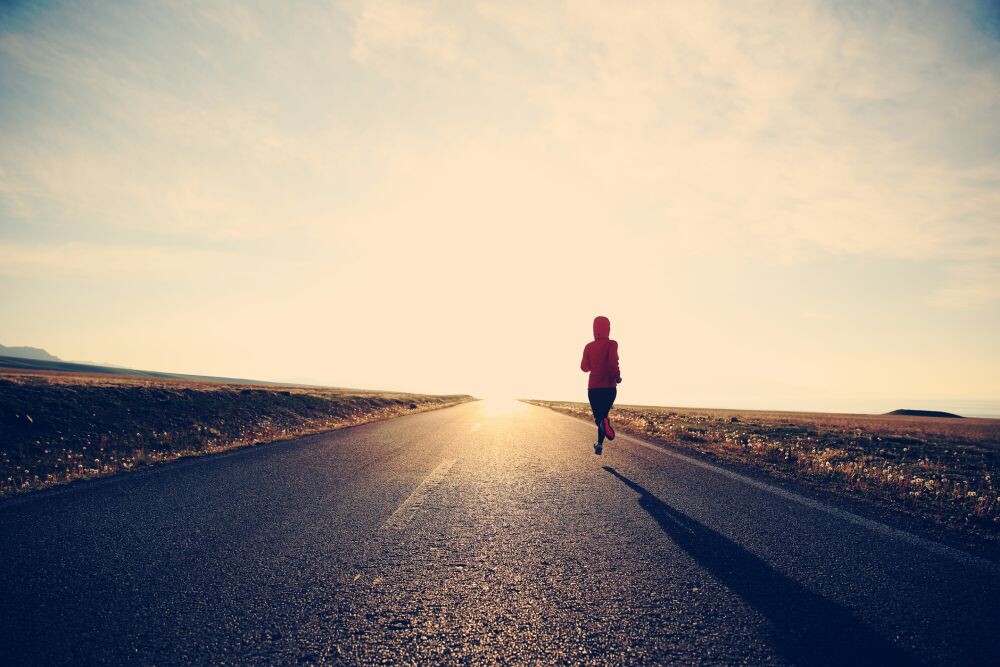
Try a quick time trial
A busy day can be the perfect time to fit in a quick time trial. Whether you run a magic mile or aim for something slightly longer, like 3K, a fast-paced session is a great way to test yourself–try one again in a month or two to compare. Start with an easy warmup of 10 to 15 minutes, then crank things up a notch and see how fast you can cover the shorter distance. Follow your speedy run with an easy five-minute cooldown.
Quick hill repeats
Give your legs a strength boost with a fast hill session. Find a hill that takes roughly a minute to run up (if you’re new to hills, 30 seconds is perfect). Warm up with 10 minutes of easy running, and then shift into high gear as you power up the hill. Run easily to the base of the hill to recover, and run hard back up–repeat five to 10 times (adjust as needed for your schedule) and cool down with an easy five to ten-minute run.
The easy pick-me-up
Many runners follow the 80/20 rule, with 80 per cent of their runs easy. If you’re having a jam-packed day and can’t fit in what you have on the schedule, just get out the door and enjoy an easy 30-minute (or whatever time you have) run. Soak in the sights, take some deep breaths, and give yourself a pat on the back for allowing for flexibility in your running routine. It may not be the long run or speed workout you had initially planned, but you’re still adding miles to the bank. Your brain will thank you, too–the short breath of fresh air and movement will do wonders for your mood, and you’ll navigate the rest of your day with ease.
(12/07/2022) ⚡AMPby Running Magazine
82-year-old Ben Lipschuetz is targeting a world record on Dec 17 in Palo Alto California at the Double 15k
Ben Lipschuetz of Los Altos California hopes to clock the best time ever run for male runners 80 plus for the Double 15k on Dec 17 in Palo Alto.
The Double 15k is a two stage race. First runners run 10k and then take a break. The second stage is 5k and it starts one hour 45 minutes after the start of the 10k. Times are added together for scoring.
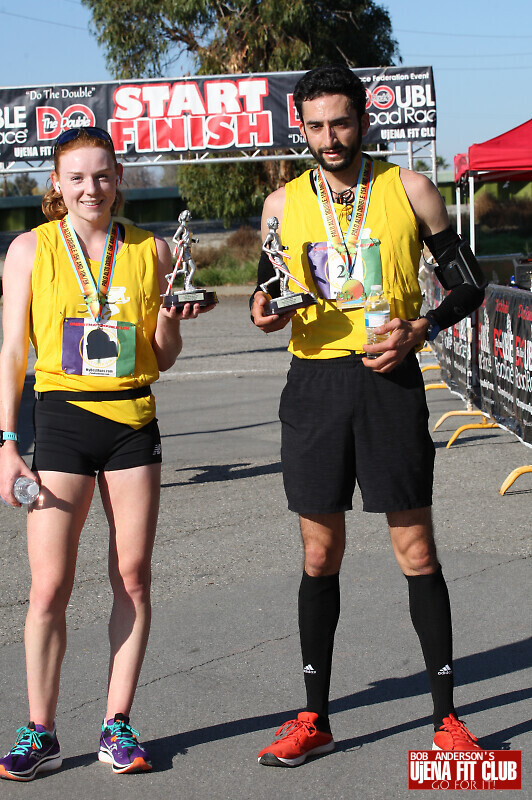
The Double Road Race Federation (DRRF) is the governing body for Double Racing. The first Double was held October 2010 in Mexico. The first Double 15k held in the US took place Dec 2012. The overall world record was set May 10, 2015. Kenyan's Julian Kosgei clocked 29:11 for the 10k leg and then followed that up with a 14 minute flat 5k. His combined 43:11 is the current world record.
The Women's record is held by Kenyan's Risper Gesabwa. On Dec 14, 2014 in Pleasanton California she clocked 48:45 (32:55 10k followed by 15:49 5k). The American record for men was set by Joe Moore in Manhattan, Kansas on Nov 9, 2013. Joe clocked 44:48 (30:04/14:48). Kim Conley set the record for women in Pleasanton, Ca Dec 21, 2014. She clocked 49:24 (33:34/15:49).
The best time recently run is 44:40 (29:56/14:44). 4th best time ever. 18-year-old Joseph Njoroge clocked this time in Thika Kenya September 14, 2022.
The next two official DRRF Double 15k coming up are Dec 17 in Palo Alto California and March 25, 2023 in Brisbane California. Both flat fast courses.
The world record Ben has his eye on was run by 83-year-old Eddie Reyna Dec 22, 2013. Eddie clocked 1:59:56 (1:23:02 for 10k followed by 36:54 for 5k leg).
Ben recently competed at the Trailblazer 10k Sept 24 in Mountain View,Ca. He clocked 1:08:09 on the long 10k course.
"I met up with Ben after the Trailblazer race," says Double 15k director Bob Anderson (photo with Ben), "and told him he could smash the 80 plus world record. This might even be an understatement."
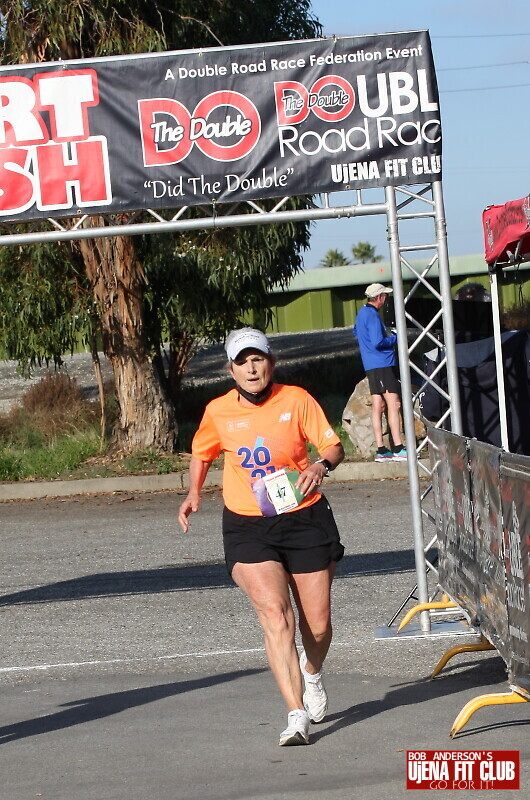
The 80 plus world records for females was set August 23, 2014 in Pleasanton by 80-year-old Barbara Robben 1:57:26 (1:17:56 plus 39:30 for 5k leg).
"Our Palo Alto event is nearly sold out but there are a few spots currently available," says race director Bob Anderson. There is also an open 10k, 5k and kids mile for 13 and under.
(Second photo: Palo Alto 2021 winners. Anthony Cortes clocked 49:26 (32:46/16:40) and Delaney Miller clocked 57:19 (38:36/18:43). Both wearing the yellow jersey showing they won the first leg.
(Third photo: 70-year-old Suzanne Koonce was the Victory Cup winner. She clocked 1:18:49 (52:36/26:13). The Victory Cup is awarded to the runner with the best age-graded score.
(12/06/2022) ⚡AMP
Palo Alto Double 15K and 10K/5K
Bring the whole family and enjoy our pre Christmas events. All participants get a special shirt and bag. All finishers get a special medal. $200 of cash prizes ($100 each for winners of Double 15k) There will be four events in Palo Alto. Palo Alto Double 15K (10K+5K), Palo Alto 10K, Palo Alto UjENA 5K Run/Walk and Bob Anderson's Kids...
more...American track superstar Sydney McLaughlin named World Athlete of the Year
U.S. sprinter and hurdler Sydney McLaughlin was named World Athlete of the Year by World Athletics on Monday evening, alongside men’s winner and Swedish pole vault world champion Mondo Duplantis.
McLaughlin, 23, has had not only a stunning year on the track but an already remarkable career in athletics. She is the world 400m hurdles and 4x400m champion. In 2022 she broke the world 400m hurdles record with 51.41 at the U.S. championships, and then broke her own record by almost three-quarters of a second, running 50.68 at the world championships in Oregon to win the world title.
Setting four world records over 13 months, McLaughlin was the first woman to break the 52-second (June 2021) and 51-second (July 2022) barriers in the 400m hurdles.
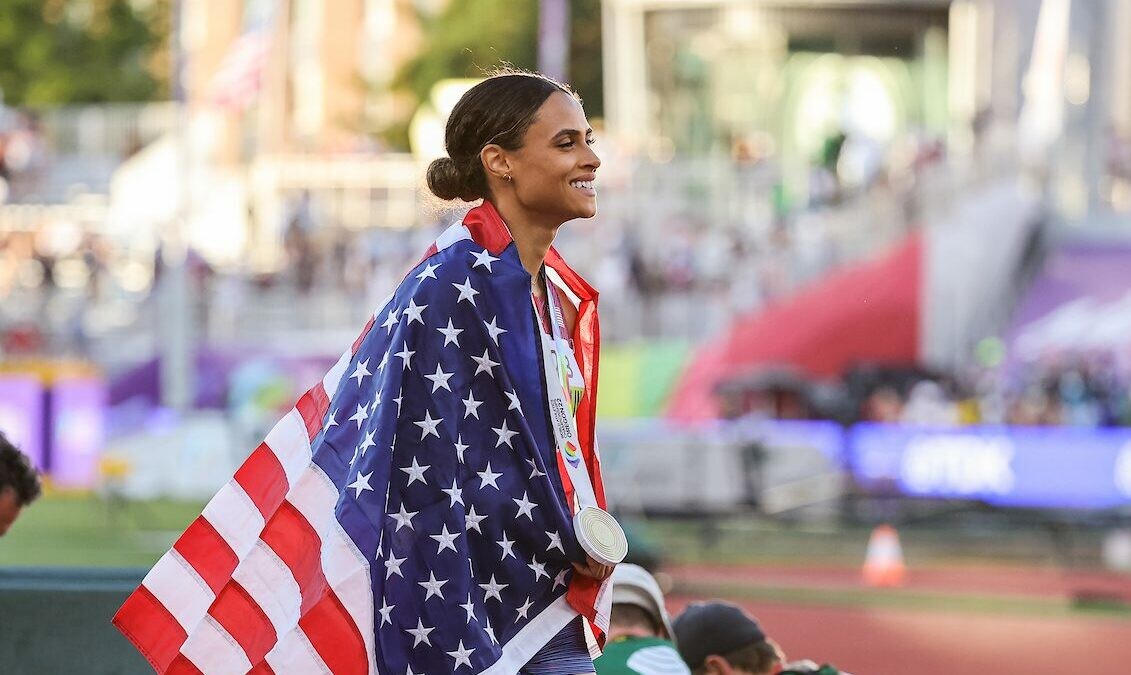
The award “means absolutely everything,” McLaughlin said at the ceremonies, held at the Prince of Monaco’s palace. “I’m so grateful for the opportunity, first and foremost, all the glory to God. For my team, my coach, my trainers, my husband, my family, everybody,” she added. “It has been an unreal season and I’m really grateful that it has culminated in this to cap it all off.”
McLaughlin, who was born in New Jersey and is married to former NFL player Andre Levrone Jr., called the awards ceremony “an unreal experience that I will never forget.”

The track phenom was the 2015 world youth champion, and in 2016 became the youngest athlete since 1980 to qualify for the U.S. Olympic track team, after running to third place at the U.S. Olympic trials with the current world under-18 best of 54.15 seconds.
McLaughlin beat 100m hurdle world champ Tobi Amusan of Nigeria, Jamaica’s world 100m sprint legend Shelly-Ann Fraser-Pryce, Peru’s Kimberly Garcia (world 20K race walk champion) and Venezuela’s Yulimar Rojas, world indoor and outdoor triple jump champion, to win the award.
Men’s World Athlete of the Year
On the men’s side, Swedish pole vault world champ Mondo Duplantis was named World Athlete of the Year, after winning the world pole vault indoor and outdoor double in 2022. Duplantis improved his own world record to 6.21m and claimed the Diamond League and European crowns.
Duplantis, 23, also won the award in 2020. “Going into the year, I had really high expectations of myself and I had some really big goals,” said Duplantis. “I wanted to win the world indoors, the world outdoors, the Europeans, the Diamond League final, and I wanted to break the world record a few times,” he added.
“I was able to do that and it was a bonus–the cherry on top–to do be able to do it [break the world record] at the right times, to do it at world indoors and do it at world outdoors. I can’t complain.”
The other finalists for the men’s award were Kenyan world champion marathoner Eliud Kipchoge, American sprinter and world 200m champ Noah Lyles, Morocco’s steeple champ Soufiane El Bakkali and Norway’s Jakob Ingebrigtsen, world 5,000m champ.
(12/06/2022) ⚡AMPby Running Magazine
Cross-Training: Five exercises to improve your running fitness
What is Cross-Training and Why is it Beneficial to My Running Fitness?
The guiding theory behind what is known as ‘cross training’ is simple; your overall fitness benefits from a wide range of movements. In practice, this means doing exercises that target all of your muscles and give your whole body a workout, rather than focusing on one area.
By subjecting the various parts of your body to different stresses, loads and motions you help to avoid muscle imbalances and injuries caused by overuse. And it makes you fit all over.

Runners have strong legs, because that’s what we use most of the time. But the principles of cross-training tell us that we should also work on our arms, our shoulders and all of the various other parts of our body that aren’t used as much while we run. This makes us fitter overall, improves cardiovascular strength and promotes mobility and flexibility.
Five Exercises to Improve Your Running Fitness
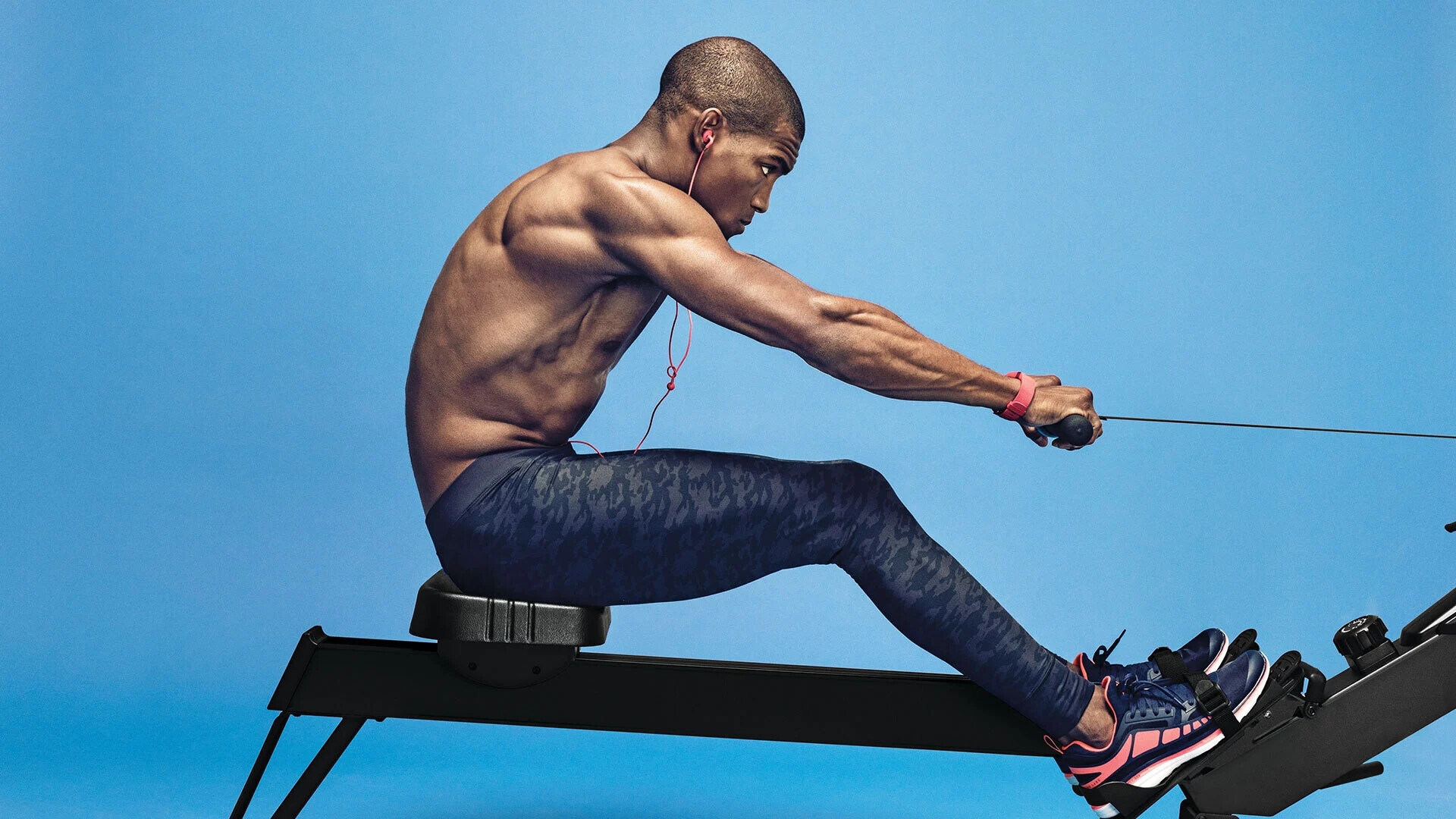
1. Pickleball
Pickleball, the blend of ping-pong, badminton, and tennis that seems to be everywhere these days, is popular for a reason. It’s not only super fun and accessible to almost everyone, it’s also a highly valuable low-impact workout.
On those days off from your normal running workouts, try a session on a pickleball court. You’ll find that it’s fantastic exercise for your forearms, biceps and triceps and all that bending over will also stretch your hamstrings and quads.
Playing pickleball demands short, sharp bursts of movement in all directions, and being quick off the mark is essential. This is great for your cardio and helps to build your stamina. And the best part? You’ll be having so much fun you won’t even notice the workout.
2. Rowing
Rowing is a great low-impact exercise that will benefit your running fitness no end. As we all know, running can take a toll on the joints, which can lead to poor performance and eventual injury. Rowing is easier on the joints, while providing a whole-body workout.
As runners, it is easy to overlook upper body strength. This is a mistake, as a strong core makes for a better runner. Rowing not only strengthens the core, it also promotes stability and stamina, two crucial qualities of a great runner.
3. Cycling
Cycling is an excellent activity for those days that you’re not running. It exercises all the major muscle groups in the legs and gives you a great cardio workout. All while giving your joints a break from the impact of running.
Whether you go out for a ride or use a static bike, the action of cycling on a recovery day is great for ‘flushing out’ the legs. It increases blood flow to the hamstrings, glutes, calves and quads and flushes out the lactic acid, thus helping those tired muscles to repair.
4. Swimming
The benefits of swimming for runners are impressive. The idea of cross-training is to improve endurance, speed and recovery, so that you can perform your best at your chosen discipline. Swimming nails all three.
By swimming on your days off from running, you allow your joints to rest and your muscles to recover, while still getting a full body workout.
But maybe most importantly, swimming is fantastic for your lung volume and strength. The ability to process more oxygen is absolutely essential to your performance as a runner, and swimming is a surefire way to condition your body to handle more air.
5. Strength Training
Last but not least, strength training is an excellent way to improve your running fitness, reduce injuries and improve your overall health. Dumbbells, kettlebells, weight machines and any other number of exercises that put your muscles under a load all qualify as strength training.
Your body receives quite a pounding when you’re running regularly. Strength training makes your muscles and connective tissues much better at handling the stress of running, thus reducing the load on your cartilage, joints and bones. The stronger you are overall, the better your body can deal with the demands of running.
Strength training also helps your body to create better neuromuscular connections. The neuromuscular system is the entirety of your nerves and muscles, all working together to make the body move as you want it to, while controlling vital functions like breathing.
Heavy lifting has been proven to strengthen the neuromuscular pathways, thus making your body better at any kind of physical exercise.
Add Variety to Your Exercise Regime for the Best Results
There’s no doubt that diversity in your training regime is the most effective way to boost performance. Repeating the same exercise without working on your overall strength and fitness simply leads to burnout, fatigue, and injury.
Take a holistic view to your running fitness by mixing up your exercise regime, and you’ll soon see the benefits.
(12/06/2022) ⚡AMPby Colorado Runner
Focus on these four running goals to boost confidence
If you’re consistently focused on the outcome of both your races and training runs, you’re bound to be disappointed at least some of the time–so many things outside of your control need to line up on race day to achieve peak performance. Weather, unexpected life stress (who hasn’t been there?), a perfectly operating digestive system: the list of things that need to go right (and can easily go wrong) is endless. We’ve nailed down some goals, that are non-results based that you can work on while preparing for (and running) your next race.
Setting non-outcome-related running goals can be a huge confidence booster and a much more effective way to learn and grow as an athlete than simply focusing on results. Olympian, researcher and coach Joanna Ziegler writes in her book The Champion Mindset: An Athlete’s Guide to Mental Toughness, that she always had her very best races when she was focused on having fun, and simply doing the best she could that specific day. Here are her favorite things to focus
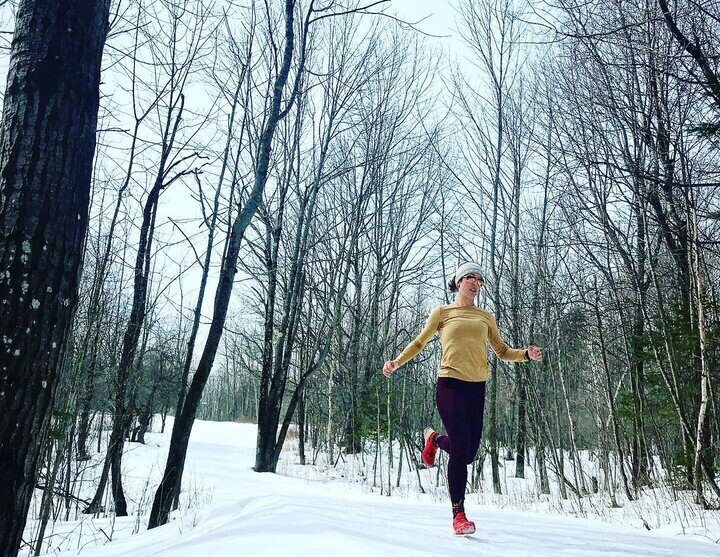
1.- Nailing nutrition
Practicing nutrition in training is essential, and training your gut to adjust to taking in calories if you’re participating in a longer event, or simply finessing what works for you before and after running can be game-changers. What works in training doesn’t always translate to race day, so practicing nutrition goals in smaller races and events is a great way to figure out what works best for you.

2.- Finding your joy
Sometimes running should just be fun. If it’s been a while since you ran a race purely for kicks, consider adding one to your schedule, and preparing for it by taking yourself less seriously on some training sessions. Sure, we need harder workouts in the mix, but pausing on your easy run to pet a dog, throw some snowballs (run through a sprinkler in warmer weather), or admire your surroundings isn’t going to seriously impact your fitness. It will, however, give you a brain boost, which leads to feeling motivated and hitting those speed targets when you go after them.
3.- Finding your joy
Sometimes running should just be fun. If it’s been a while since you ran a race purely for kicks, consider adding one to your schedule, and preparing for it by taking yourself less seriously on some training sessions. Sure, we need harder workouts in the mix, but pausing on your easy run to pet a dog, throw some snowballs (run through a sprinkler in warmer weather), or admire your surroundings isn’t going to seriously impact your fitness. It will, however, give you a brain boost, which leads to feeling motivated and hitting those speed targets when you go after them.
Testing yourself
“Running races are excellent substitutes for a regularly scheduled training session,” says Ziegler. A race used as a training session allows you to go harder than you would during training, giving fitness and confidence a boost before you head into a goal race.
4.- Implementing a new mental game
Ziegler says that every time you run you have an opportunity to practice upping your mental game. Using visualization techniques before a run, making a mantra to keep yourself in the flow of things, or working on navigating a setback without losing your cool will pay off when it really counts.
(12/06/2022) ⚡AMPby Running Magazine
Kenyan Benson Kipruto to join Eliud Kipchoge in Boston Marathon
Chicago Marathon champion Benson Kipruto yesterday confirmed he will join world record holder Eliud Kipchoge in Boston Marathon on April 17.
Kipruto placed third in Boston last April and will be seeking to reclaim the title he won in 2021.
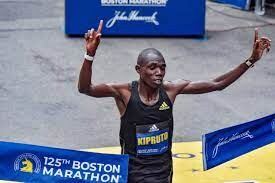
Kipruto won the Boston Marathon in 2021 (2:09:51) but lost to winner Chebet Evans (2:06:51) and Cherono Lawrence (2:07:27) who took the top two places this year.
"This year, the race was quite competitive and I had not done much in training. However, third place was good under the circumstances,” Kiprop said.
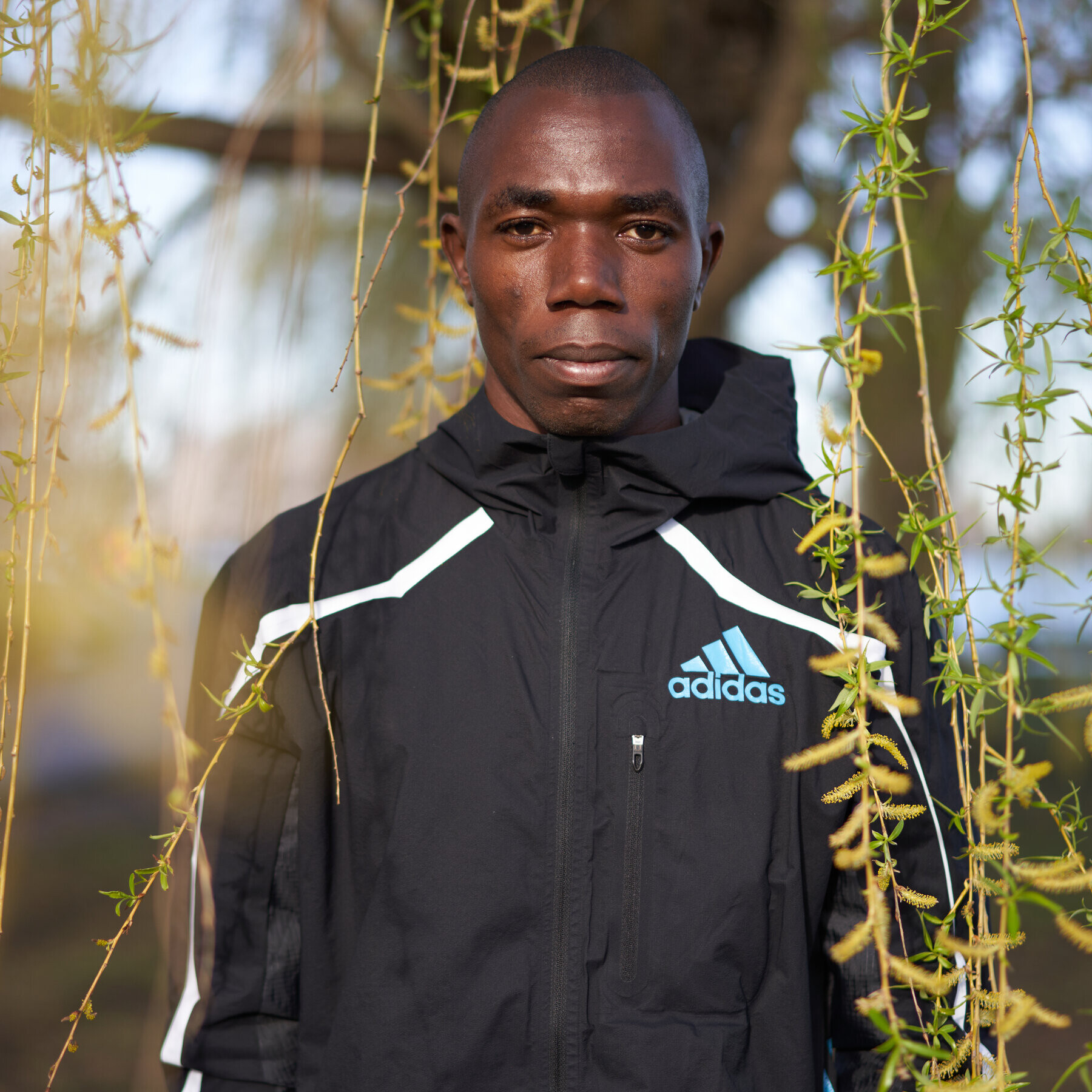
Having had an impressive record in American races, the 2021 Boston champion said he is confident he will still make a podium finish.
“I would like to finish among the top three if the race is hard but my main target is to reclaim my position,” he added.
The 31-year-old said he has just resumed his training after winning Chicago Marathon in October.
“I want to focus on my training to avoid the mistakes I made in April. I have already started on my hill work and short sprints, thanks to coach Claudia Beraldelli," he noted.
Kipruto revealed that athletics is his biggest source of income and that is why he is taking his career seriously.
Since his marathon debut in 2015, Kiprop has been consistent in producing outstanding performance. “Athletics is everything to me and that is why I take it seriously, " he added.
The 31-year-old has been training under the tutelage of 2-Running Club since 2016 when he officially joined the camp. Kipruto said he is keen to follow in the footsteps of Eliud Kipchoge. “I really admire Kipchoge's humility," he noted.
(12/06/2022) ⚡AMPby Cynthia Chepkurui
Boston Marathon
Among the nation’s oldest athletic clubs, the B.A.A. was established in 1887, and, in 1896, more than half of the U.S. Olympic Team at the first modern games was composed of B.A.A. club members. The Olympic Games provided the inspiration for the first Boston Marathon, which culminated the B.A.A. Games on April 19, 1897. John J. McDermott emerged from a...
more...Jerry Hughes smashes Canadian 48-hour record
Victoria, B.C.’s Jerry Hughes set a new Canadian 48-hour record early Sunday morning at the Fat Ox Endurance Run in Arizona, running 368.031 kilometers (228.684 miles). Hughes boasts an extensive ultrarunning resume, but this is his first Canadian record, besting Dave Proctor’s 2018 record of 358.163 km (222 miles). Hughes headed into the event with a goal of qualifying for the Canadian 24hr team, a goal he nailed along the way. Hughes ran 221.01 km (137.33 miles) in 24 hours, more than any Canadian in 2022.
The Fat Ox Endurance Run (hosted by Aravaipa Running, known for endurance events like Javelina Jundred and Across the Years) was “originally founded as a research study on fat oxidation utilization for ultra runners,” ultrarunner and race director Jamil Coury explains. The race was in a new location this year, held on a 1590.3-meter concrete loop on an eight-foot-wide sidewalk winding through Estrella Mountain Regional Park, just outside of Phoenix, Ariz.
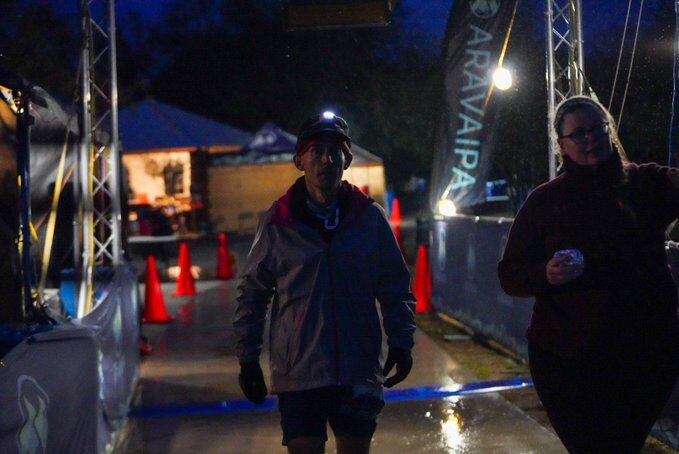
In its third year as a fixed-time race with multiple distances, the 48-hour event began Friday in ideal running conditions–cool and overcast skies. Saturday, however, was another story, with an increasing chance of rain evolving into a significant rainstorm that Coury says “parked itself across much of the state of Arizona and recorded a rainfall record for Sky Harbor airport.”
Despite the conditions, Hughes kept on moving. “Runners persisted throughout, including Jerry Hughes who really dug deep the last night running through off-and-on rain to not only set a new Canadian 48-hour record not only overtaking Dave Proctor but also landing on the top 10 all-time in North America,” says Coury.
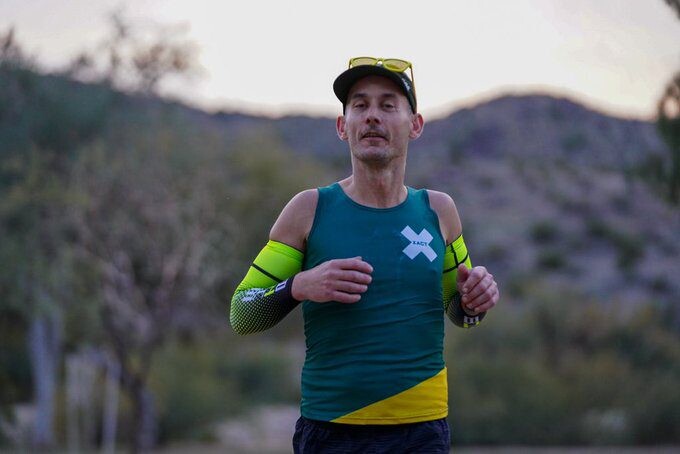
Hughes’s journey of resilience
Hughes started running in 2014 with a 10K race and says he was hooked after that. “A month later, I did my first half-marathon in 1:40,” he says. In 2015, he ran his first marathon in 3:11, and decided to make the leap to ultras, tackling the Squamish 50-miler in 2016. He upped his distance with his first 100-miler in California, where he bested his goal of running under 24 hours by a large margin, finishing in sixth place in a little over 18 hours.
“It was at this point that I realized I had a bit of a gift for this,” Hughes says. Since then, Hughes has been a regular on the ultra scene, racing everything from 100-milers to multi-day events. When COVID-19 shut down events, he reached out to friends Lisa Large and Josh Heath to organize the One Track Mind Ultra, a fundraiser for the Help Fill a Dream Foundation. The charity supported Hughes and his siblings (all of whom live with Gardner’s syndrome, a rare genetic disorder that can lead to colon cancer) when they were younger.
Hughes, a busy father of four young children, is known for being a positive force in the running community in Victoria and beyond, and for taking every opportunity he can find to give back. Fellow Canadian ultrarunner Matt Shepard ran with Hughes at One Track Mind Ultra, and says he was impressed by his resilience. “After hearing his story and the challenges that he has faced, I was blown away,” says Shepard.
“After realizing that he didn’t have to let his challenges define him, he started chasing these big goals to show others that they can also overcome seemingly impossible obstacles. Jerry shares so much love and inspiration,” said Shepard. “I am incredibly proud of him for his efforts and the lessons he is sharing with the world.”
While Hughes described the rainy, middle-of-the-night laps toward the end of his 48-hour run as “pure misery,” he was in great spirits Monday morning as he prepared to head back to Canada, joking that while he felt pretty good, he might need some assistance getting into the plane.
(12/05/2022) ⚡AMP
by Keeley Milne
2022 marks record-breaking year for the California International Marathon
During the 2022 California International Marathon Paige Stoner clinched the women’s course record, finishing the full 26.2 miles in 2 hours, 26 minutes and 2 seconds.
Race officials announced over the intercom as she finished, “national champion on the women’s side Paige Stoner sets a new course record.”
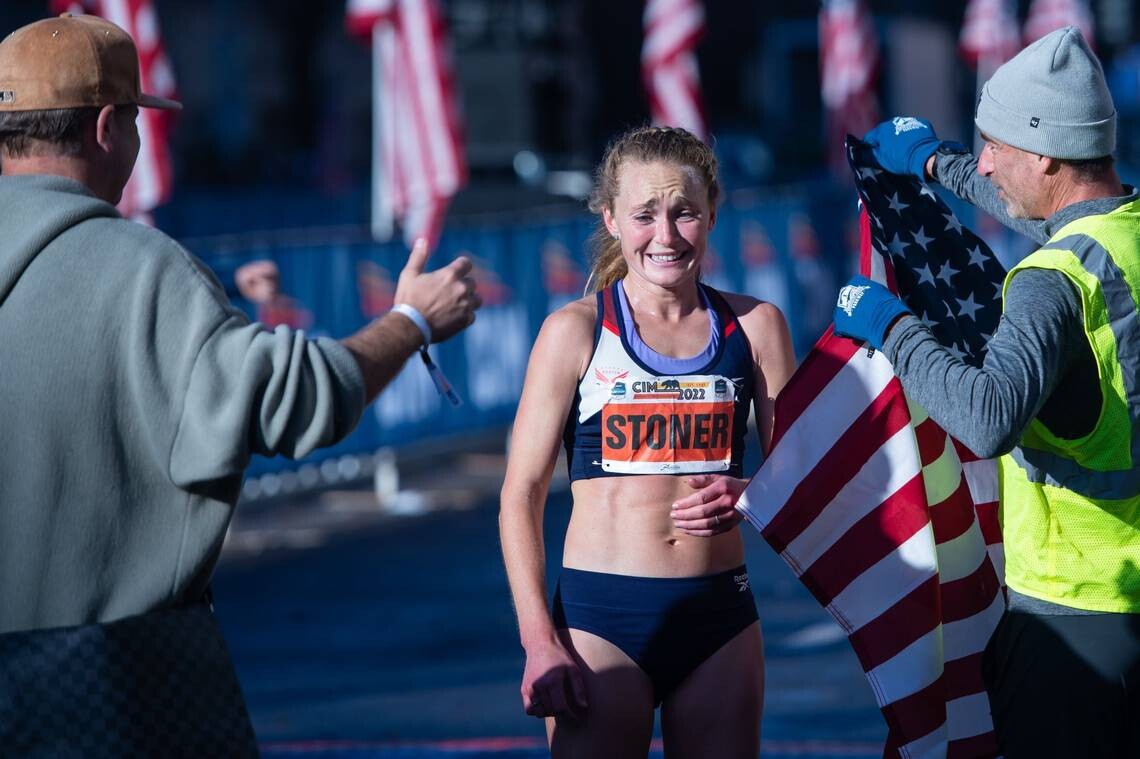
Stoner shattered the women’s course record by 51 seconds.
On the men’s side, Futsum Zienasellassie finished first, in his debut marathon with 2 hours, 11 minutes, and 1 second, the third-fastest mark ever run at CIM.
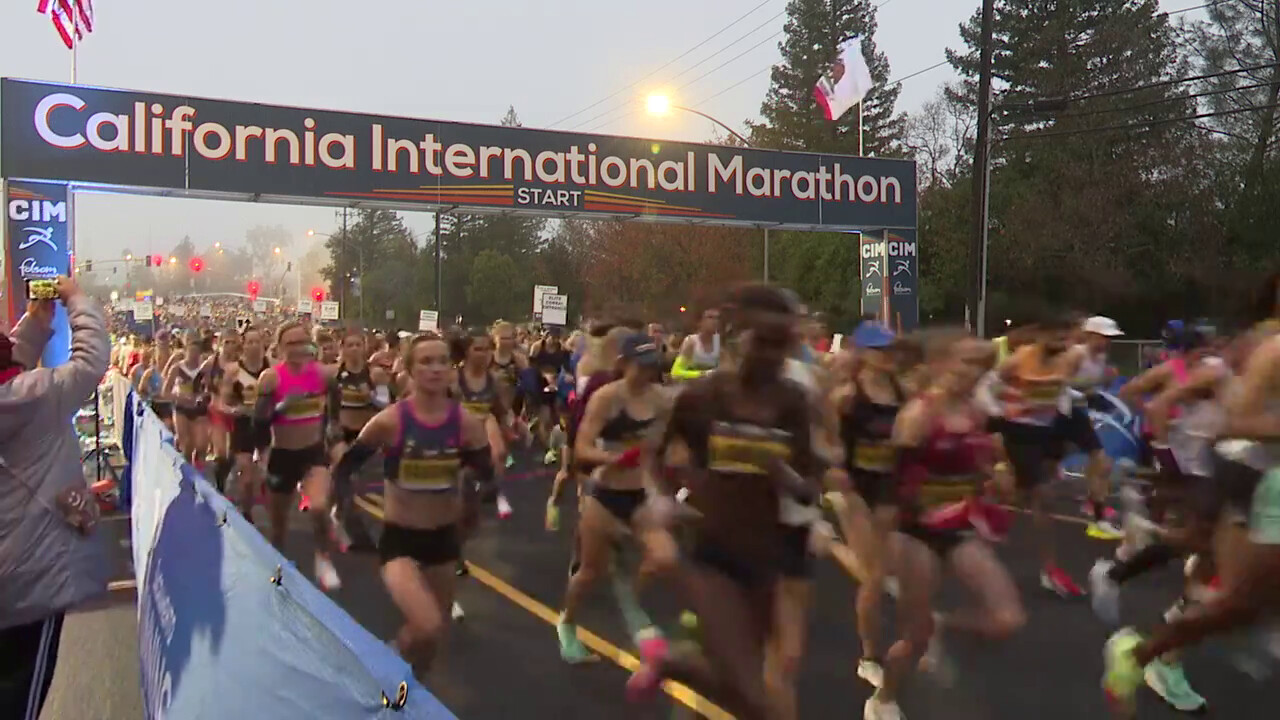
Both Stoner and Zeinasellassie achieved USA Titles.
2022 marked the 39th CIM, with over 10,000 total runners, including more than 9,000 marathoners and close to 1,000 relay participants.
Attracting top runners from around the world, CIM, known as the "fastest race in the West" is the #1 Boston Qualifier, with many who’ve set their sights on Olympic goals.
Appealing to athletes of many levels, thousands of families stood on the sidelines to cheer on their loved ones.
Finisher, Heather Graves, while holding her 8-month-old baby boy beamed as she told KCRA 3 she not only set a personal record but also qualified for the Boston Marathon.
“Having a baby was probably the worst pain and this was nothing compared to that,” Graves said while laughing.
(12/05/2022) ⚡AMPby Erin Heft
California International Marathon
The California International Marathon (CIM) is a marathon organized by runners, for runners! CIM was founded in 1983 by the Sacramento Running Association (SRA), a 501(c)(3) non-profit organization. The SRA Board of Directors is comprised of runners with a combined total of 150+ years of service to the CIM. The same route SRA management created for the 1983 inaugural CIM...
more...Do you run efficiently? Improve your running efficiency with these four steps
It's the time of year where many of us are in the early stages of a running program or thinking about it. As we look way down the calendar to our chosen events, our goals can seem a long way away.
Sometimes early in the program it can be hard to keep focussed or motivated with our running training, but this is the ideal time to focus on what really matters when it comes to your running training. And that is, running with good form, and improving our running technique & efficiency, hence Run Well.
As always running training is about becoming a stronger & better runner, which given time will result in you becoming a faster runner. Hence the key here is in practising good technique, and thus developing good, strong motor (movement) patterns as we run. Train well, get stronger, improve your efficiency and faster will come.
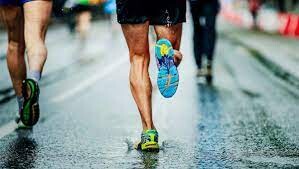
Here are a few key pointers to get you started;
1. Tall posture, strong trunk.
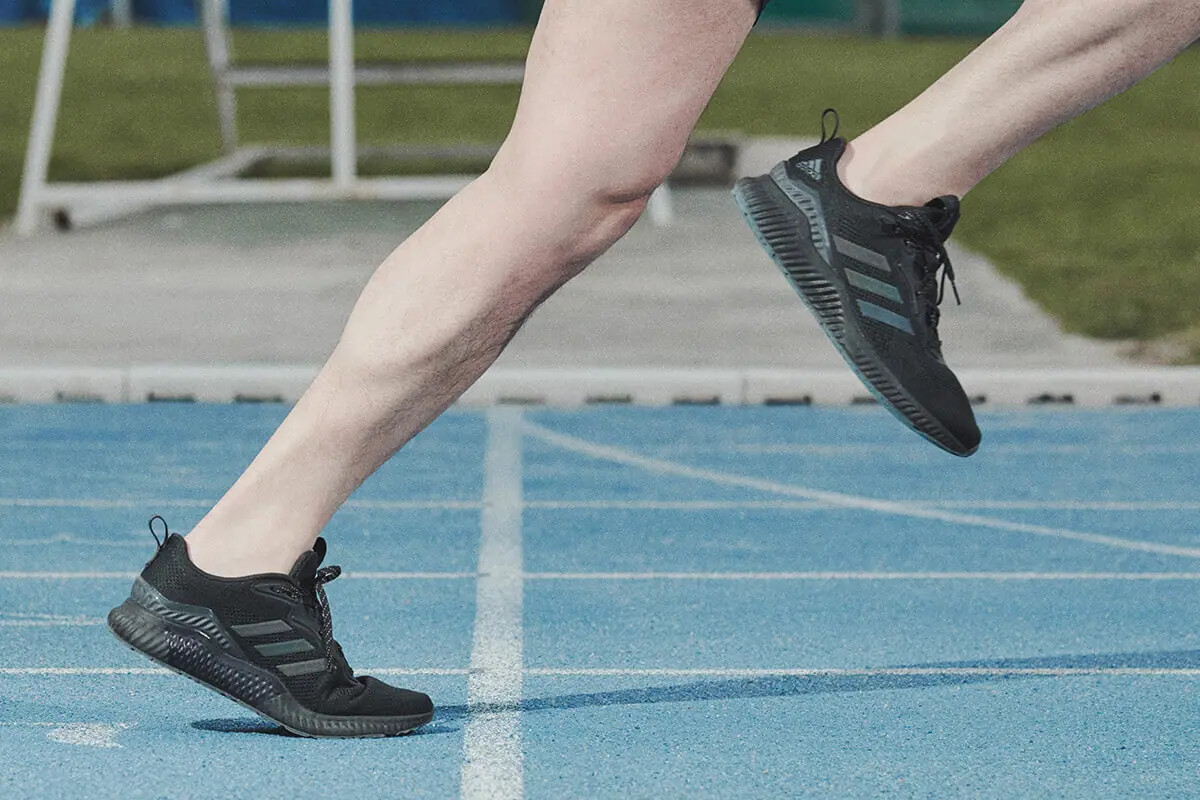
Running tall, chest up with a strong trunk allows you to keep your hips on top of & in front of your feet, to access your glutes/hips for power. Look out in front, not down to the ground.
2. Shorter stride length , more steps
Reducing your stride length will also keep your hips over your feet, reducing the tendency to reach out in front with your foot ( over-striding). This also help you to land through your mid-foot for energy recoil, More steps, means reducing the load with each step,
3. Pick up you feet!
This is called 'Knee Drive'; so pick your feet up off the ground at the end of your stride to get your knee coming through high & forward in position for your next step. This focal point will also help prevent you from reaching forward with your stride and over-striding.
4. Push from hips.
Your glutes come from (the back of) your hips, and are the strongest muscle in your body. These are the runner's powerhouse that will allow you to run well, and fast. The combination of the above factors will allow you to push your body forward as you stride, thus increasing your stride length behind you during knee drive, and not reaching out in front.
(12/05/2022) ⚡AMPby Run Well
Level-up your latte the Rich Roll way
Endurance athlete and podcast host Rich Roll is known for his plant-based diet and healthy living. Whether you’re keeping a focus on nutrition or simply want a warm cup of something post-run, you’ll love Roll’s latte recipes from The Plantpower Way. He suggests taking the time to select a special cup you enjoy holding in your hands, noting, “One of the great pleasures of life is a favourite mug.”
You’ll need a strainer or cheesecloth for these. I find that substituting paste or powdered ginger or turmeric if I didn’t have any root handy works just fine.
Mocha Latte
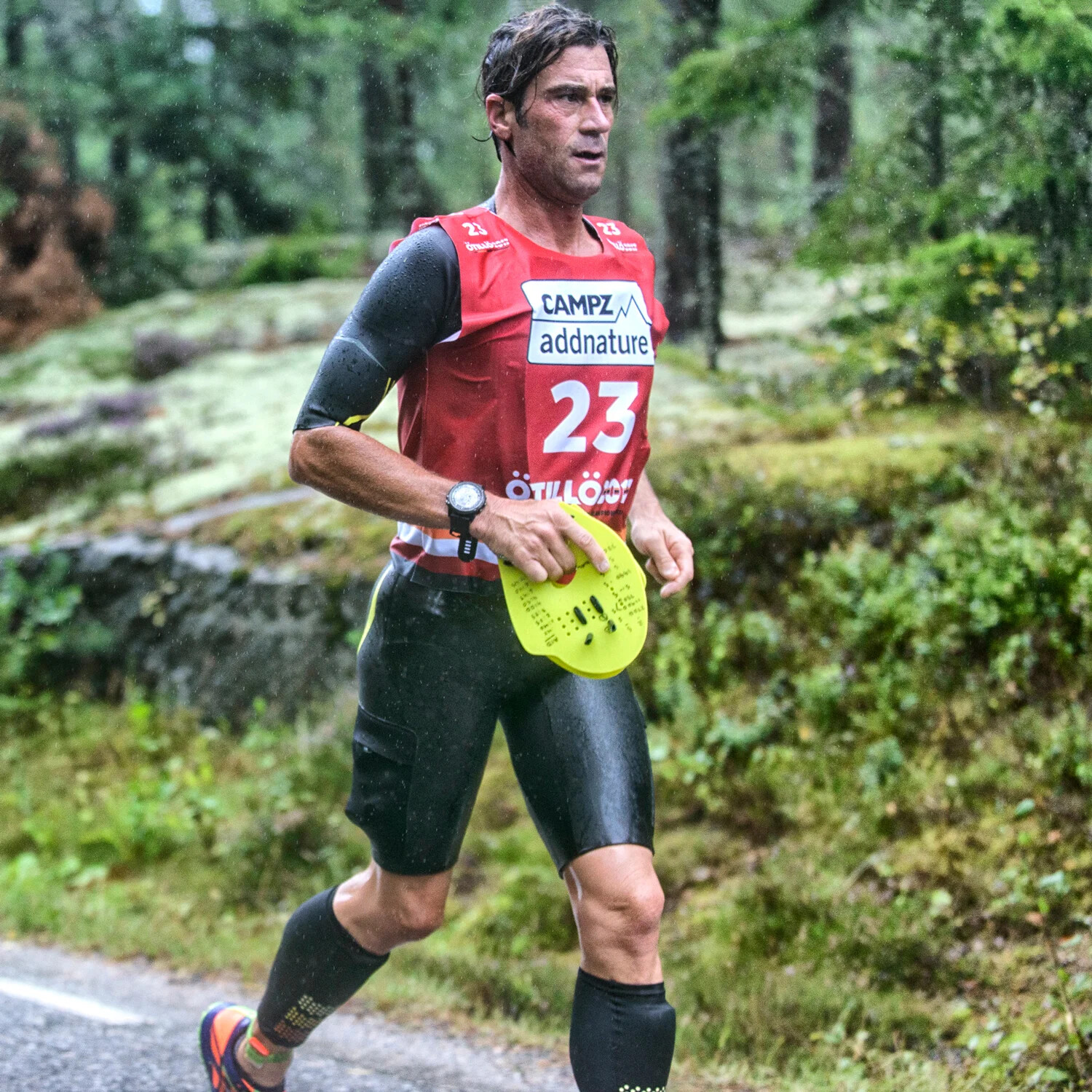
Roll calls this a “creamy blend of cacao and coffee topped with a velvety layer of nut milk froth.”
Ingredients
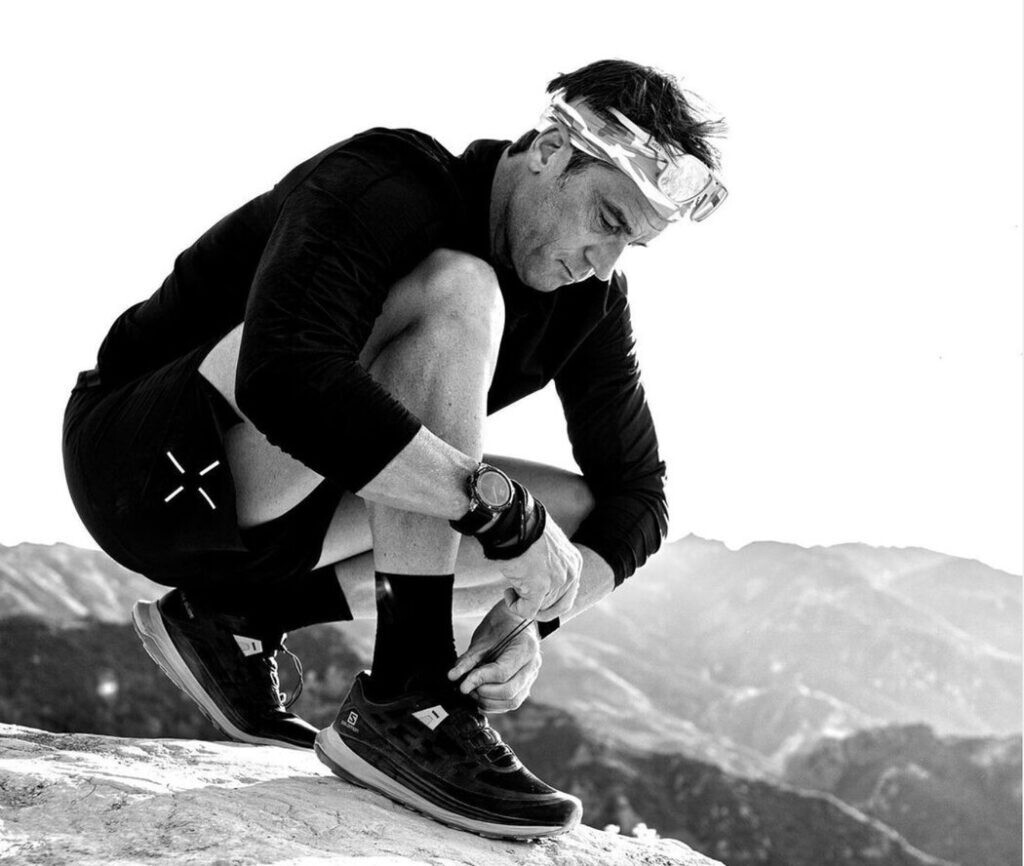
4 cups organic fresh-brewed coffee (can use regular or decaf)
1/4 vanilla bean
5 Brazil nuts
2 tsp cacao nibs
1 tsp honey
pinch of cinnamon
Preparation
Brew a pot of your favourite coffee.
Split the vanilla bean lengthwise and scrape out the seeds.
Add all the ingredients to a blender and blend on high for one minute.
Strain the mixture through cheesecloth or a fine strainer, pour into your favourite cup and enjoy. For an iced version, add three cups of ice and blend again.
Ginger Turmeric Latte
This frothy drink is full of anti-inflammatory and stomach-soothing properties. “Ginger works wonders for digestion, while the nutrient-rich hemp seeds blend to give you a nice and creamy protein-packed drink,” writes Roll.
Ingredients
2 cups water
1-inch piece of fresh ginger, peeled (ginger paste works well, available at most grocery stores)
1-inch piece of turmeric root, peeled
1/4 cup hemp seeds
1 tsp honey
dash of cardamom
Preparation
Bring the water to a boil.
Using a fine hand grater, grate both the ginger and the turmeric.
Add all the ingredients, except the cardamom, plus the boiling water, to a blender and blend on high for one minute.
Pour the mixture through a fine strainer or cheesecloth and serve. Garnish with a sprinkle of cardamom.
(12/05/2022) ⚡AMPby Running Magazine
Stuck inside? learn to love the treadmill and make the time fly by, with these workouts
The treadmill is occasionally a necessary evil. Whatever the reason you’re stuck inside, you can still fit in a challenging workout and make the time pass quickly. View time on the treadmill as an opportunity to mix it up in a controlled environment–no traffic lights to pause at, icy patches of sidewalk to navigate, or unexpected weather blowing in. We have a few workouts to take you into beast mode if you need to run inside on one of your harder-effort days.
Treadmill running is a great opportunity to practice running with great form (think relaxed, smooth running), and, by adding some structure to your workout, that seemingly endless hour will fly by. If you’re not sure what your 10K or 5K race pace is, try running at what feels like a hard effort, but one that you can maintain throughout all of your intervals.
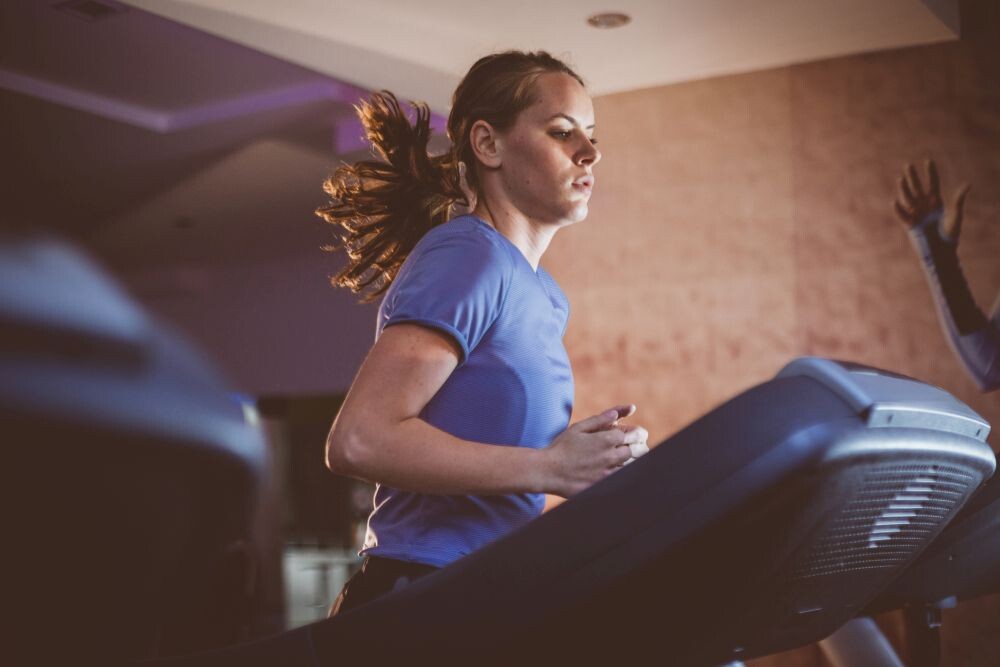
Classic intervals for a speedy boost
Warm up with 10 minutes easy running

6-10 x 4 minutes at 10K race pace, with 3 minutes easy running to recover
Cool down with 5–10 minutes easy running
Feel free to tweak this one if it seems too easy, shortening your recovery time to 2 minutes.
Fast hill workout
This workout is great for building speed and strength, and mimics a traditional workout of shorter hill repeats. If you’re new to hill repeats, start with a 4–5 per cent incline; more experienced runners can ramp it up to 6–8 per cent.
Warm up with 10 minutes easy running
6 x 60-90 seconds at 5K-10K pace with 2-3 minutes of recovery
If you choose the shorter sprints, aim for 5K pace, for the longer sprints aim for 10K pace
Cool down with 10 minutes easy running
The 3–2–1 workout
Warm up with 10 minutes easy running
3 minutes at 5K race pace, followed by 3 minutes easy running to recover
2 minutes at 5K race pace, followed by 2 minutes easy running
1 minute at 5K race pace, followed by 1 minute easy running
Repeat the entire workout twice (except the warmup)
Cool down with 10 minutes easy running
Add another repeat of this workout if you’re an experienced runner and can maintain your hard effort throughout.
Follow a hard workout day with an easy running or recovery day, and hydrate well.
(12/05/2022) ⚡AMPby Keeley Milne
Brett Robinson and Sinead Diver have broken Australia's long-standing marathon records within hours of each other
Brett Robinson finally eclipsed the mark set by distance running legend Rob de Castella, which had stood for 36 years! The 31-year-old from Melbourne took 20 seconds off de Castella’s record, running 2:07.31, a personal best by almost two minutes!
After Robinson made his breakthrough at the Fukuoka International Marathon in Japan,45-year-old Sinead Diver broke the Australian women's record at Spain's Valencia Marathon. Diver beat her personal best by more than three minutes to smash Benita Willis’ longstanding 16-year-old record, clocking 2:21.34 to make it a historic day for Australian marathon runners.
(12/04/2022) ⚡AMPUSATF CEO's $3.8 million salary for 2021 sparks outrage
Team USA athletes and track fans are outraged after it was reported that USA Track & Field (USATF) CEO Max Siegel earned a whopping $3.8 million last year, according to his tax form posted on the USATF website.
Siegel’s pay represented 11 per cent of the organization’s total $33.6 million dollar revenue in 2021. His base pay is $685,000, and he received a bonus of $500,000, plus “other reportable compensation” of $2,574,598.
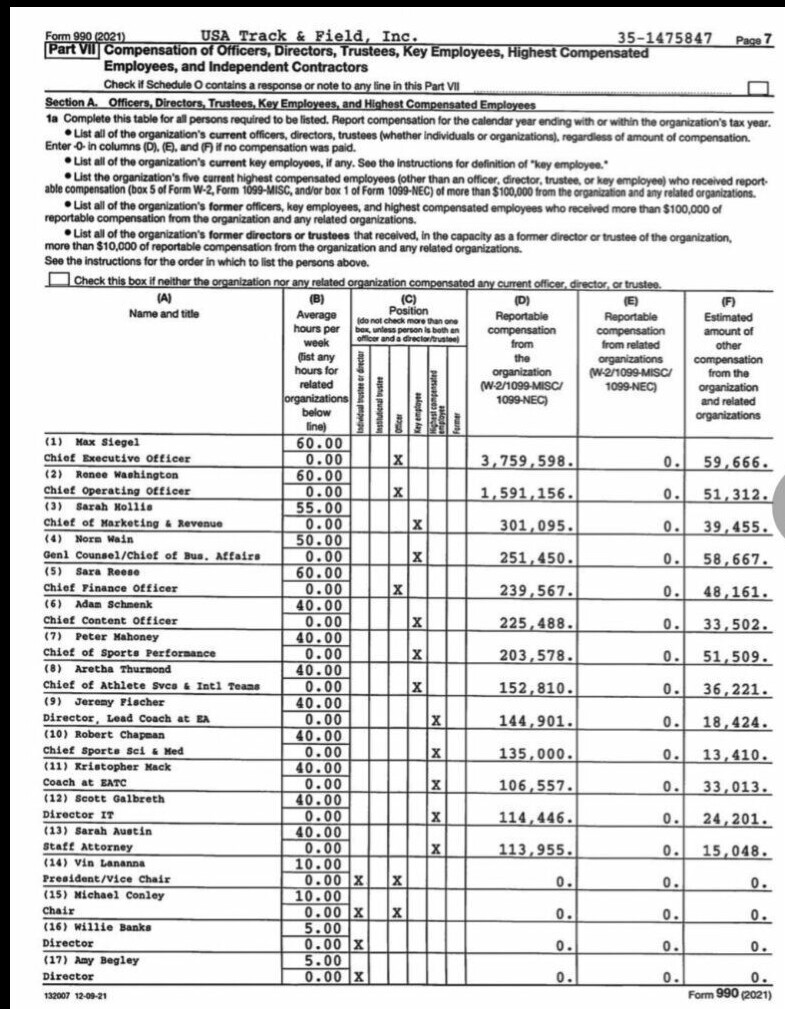

The organization’s second-in-command, COO Renee Washington, took home more than $1.6 million last year, which is four per cent of the total revenue (15 per cent between the two individuals).
U.S. decathlete Harrison Williams, who was a part of Team USA at the 2019 World Athletics Championships, commented on the issue, saying, “In a sport where the best athletes in the country only receive a $12,000 stipend from USATF (and have to be top 15 in the world to get it), it’s absolutely absurd that our CEO Max Siegel just made $3,819,264 in one year.”
“Imaging giving $10,000 of his pay to 10 athletes, and change their lives and training opportunities…but that would not allow him to fly private…once or twice,” tweeted 2016 800m Olympic bronze medallist Clayton Murphy.
2:09 U.S. marathoner Noah Droddy tweeted: “Honestly hoping he gets a raise so we can freak out more and come even closer together next year.”
Staff salaries at the nonprofit grew by $2 million from 2020 to 2021. In 2020, USATF salaries were $7.4 million. In 2021, they were $9.6 million for the organization’s 82 employees, an increase of nearly 30 per cent.
To put Siegel’s salary in perspective, NHL commissioner Gary Bettman earned 0.002 per cent of the league’s total five-billion-dollar revenue in 2021. If he earned the same percentage as Siegel, his annual salary would be $550 million.
Siegel’s salary is double that of USATF’s top athlete, world record holder plus world and Olympic champion Sydney McLaughlin, who reportedly signed a 1.5 million dollar base deal with New Balance in 2019.
Surprisingly, Siegel’s 2021 salary is a small pay cut from his 2018 tax return, which worked out to $4.3 million. In 2020, Siegel took a 20 per cent pay cut “amid a pandemic-related revenue decline,” earning $1.3 million, meaning he tripled his pay cut in 2021.
Each year the USATF board of directors, which is made up of 24 members, has to vote on and approve the salary of the USATF CEO.
Most U.S. track and field athletes are not typically paid to compete, though there are a few exceptions, such as Olympic medallists, athletes who rank in the top 10, and those with large followings on social media. These athletes may receive a bonus from their sponsors or USATF. However, most track and field athletes do not receive a salary or payment for their performances.
(12/04/2022) ⚡AMPby Running Magazine
Running with OCD: remember to look up
“The credit belongs to the man who is actually in the arena” –Theodore Roosevelt
I always looked down when I ran. It enabled me to focus better and control the agony of long-distance running. When I trained and competed, my varsity cross-country coach, Paula Schnurr, always emphasized the importance of looking up.
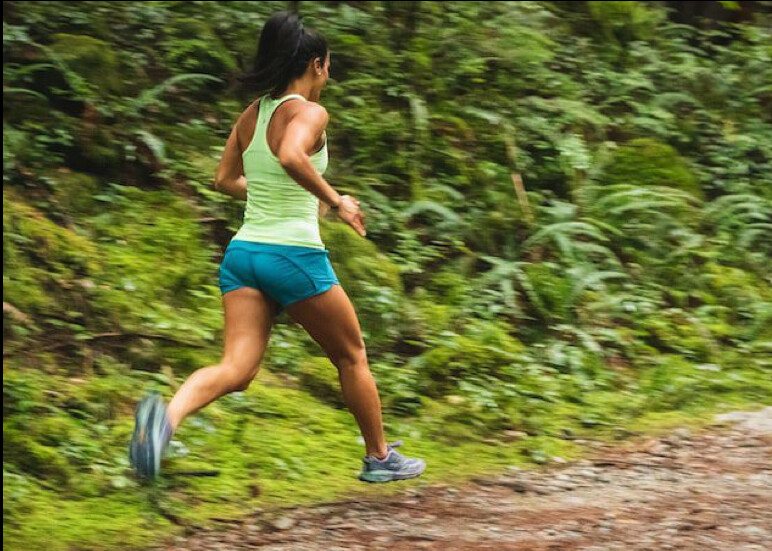

She repeatedly told me to look up and look forward. I realized later that this lesson applied both on and off the track. In Grade 9, I was diagnosed with obsessive-compulsive disorder, commonly known as OCD. I was overwhelmed with distressing and intrusive thoughts, compulsions and the inability to stay present in my day-to-day life.
During the summer of 2020, I decided to attend a six-week intensive OCD course. This course was designed to help individuals develop the strategies and tools needed to accept and manage OCD symptoms. During these sessions, I learned how to control my compulsions and be at peace with distressing thoughts without reacting to them. However, when these sessions were completed, I fell back into old, familiar patterns, due to lack of maintenance.
This led to a sense of helplessness, loss and anger. In July 2022, I went out for a run in my hometown in southern Ontario. While running, I suddenly was aware that instead of looking down, I was instinctively looking up. I had not done this since my last cross-country race, three years ago. At that very moment, I realized something that I had never appreciated in the past.
My life did not drastically change at that moment, nor did I develop a cure for OCD or make the Olympic team. However, I realized I had to approach my OCD tendencies as Paula told me to approach running–look up, embrace the pain and keep moving forward. If you or someone you know has OCD, I’ll leave you with this. When a distressing thought comes to the forefront of your mind, look at it like you would “look up” during a run.
Face it, embrace it and allow it to move through you. In a race, you endeavour not to stop running. I am no longer stopping for my thoughts, nor am I giving any more energy to them. Paula was an instrumental person and coach in my life during my years at university. She continues to support me on and off the course.
To those of you who find yourself in the arena of mental illness, I see you. Keep looking up, and keep looking forward. The credit belongs to you.
(12/04/2022) ⚡AMPby Running Magazine
Teferi Becomes Fukuoka's First Israeli Winner.
Japan had not one but two top-level men's marathons happening at the same time today. Conditions were a little too windy at the rescendent Fukuoka International Marathon to produce the kind of times organizers were hoping for, but there was still a great race up front. Almost dead-even on 3:00/km pace the entire way despite a building headwind from around 11 km to 18 km and again from 25 km to 32 km, and a strong tailwind from 32 km to the track finish, by 35 km a lead pack of 30 dwindled down to just 2021 winner Michael Githae (Suzuki), debuting teammate Vincent Raimoi (Suzuki), 40-year-old double world champ Abel Kirui (Kenya) and Ethiopian Israeli Maru Teferi.
Teferi didn't really break it apart as much as he held steadier than everyone else. From 30 to 35 km he clocked 15:01 and from 35 to 40 km 14:59, while the other three slowed to the 15:17~15:23 range on the way to 40 km. Teferi kept that pace all the way to the end, winning in a PB 2:06:43.
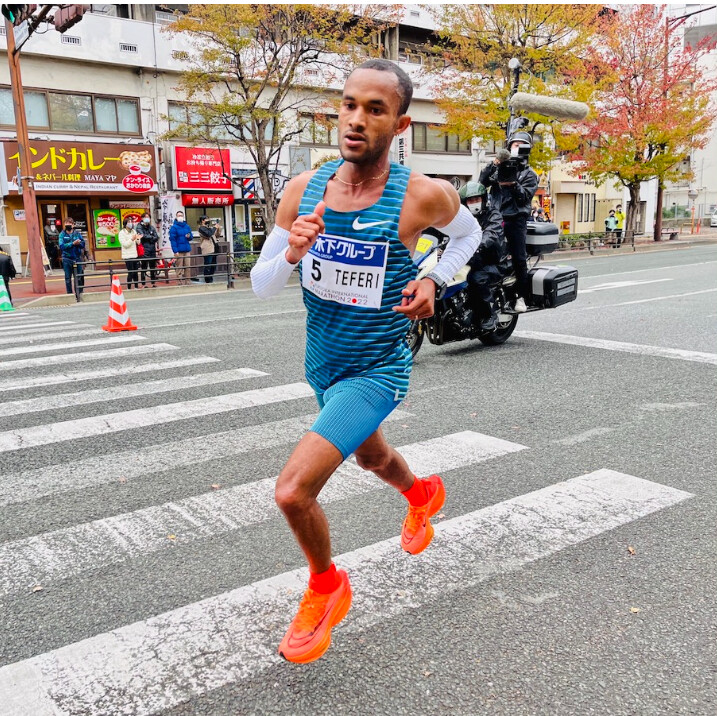
Raimoi had the final gear to drop Githae for 2nd in 2:07:01, while Githae held on to 3rd in a PB 2:07:28. "This was another step for me," Githae told JRN post-race. "I'm happy with how I did."Kirui slowed further, bringing him into range of fast-closing Australian Brett Robinson. 18 seconds back at 40 km, Robinson closed the 3rd-fastest in the field to run Kirui down for 4th in 2:07:31. That was good enough to take 20 seconds off past Fukuoka champ Rob de Castella's 2:07:51 Australian record, another piece of history from sub-60 Marugame Half winner Robinson. Kirui was 5th in 2:07:38.
Kazuma Kubo (Nishitetsu) was the last Japanese man to stay with the top group, making it as far as 30 km before dropping off. In the end the top Japanese spot went to Kiyohito Akiyama (Aichi Seiko), 7th in 2:08:43. He, 8th-placer Akira Akasaki (Kyudenko), 2:09:01, and 9th-placer Minato Oishi(Toyota), 2:09:08, all qualified for next year's MGC Race 2024 Olympic marathon trials. Kubo hung on for 10th in 2:09:19 and 11th-placer Koki Takada (Sumitomo Denko) made it five under 2:10 in 2:09:45, but both missed out on qualification. And in terms of the domestic results, Fukuoka lost out to Hofu.
(12/04/2022) ⚡AMPFukuoka Marathon
The Fukuoka International Open Marathon Championship is one of the longest running races in Japan, it is alsoan international men’s marathon race established in 1947. The course record is held by Tsegaye Kebede of Ethiopia, running 2:05:18 in 2009. Frank Shorter won first straight years from 1971 to 1974. Derek Clayton set the World Record here in 1967 running 2:09:37. ...
more...Very fast times for both men and women in Valencia with surprise winners
VALENCIA, Spain — Near-perfect conditions at the 2022 Valencia Marathon Trinidad Alfonso created an opportunity for fast times, and the elite fields answered the call on Sunday morning. Kenya’s Kelvin Kiptum won the men’s race in 2:01:53, the fastest debut in history, after breaking the race open with a savage late-race move at 32 kilometers. Kiptum split 60:15 for his second half and 28:04 from 30-40k to become just the third man in history to break 2:02 after Eliud Kipchoge (2:01:09) and Kenenisa Bekele (2:01:41).
In the women’s race, Ethiopia’s Letesenbet Gidey was expected to challenge the world record of 2:14:04 in her debut and was on 2:14:10 pace through 30k. But, shockingly, Gidey still had company at that point of the race as her countrywoman Amane Beriso was still with her. And in the end, it was Beriso who would hold on best as she won in 2:14:58 to move to #3 on the world all-time list. Gidey would fade over the final 10k but still hold on for second in 2:16:49, the fastest debut ever by a woman.
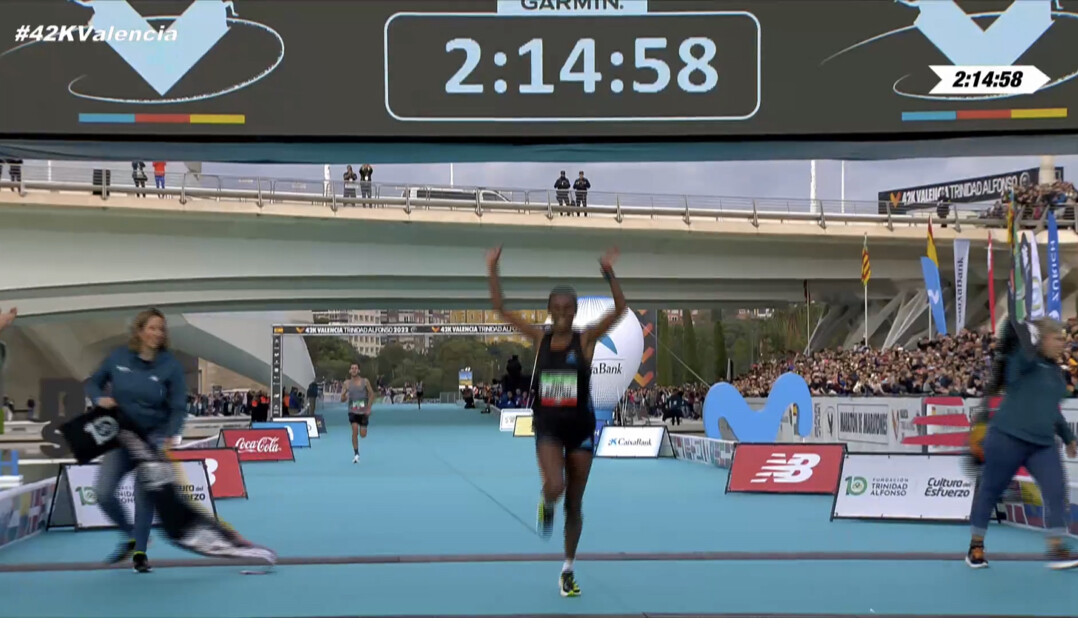

Both Kiptum and Beriso were surprise winners and had done little recently to indicate they would challenge for the win in Valencia. Kiptum owns a half marathon best of 58:42 from Valencia in 2020, but had not finished a race over any distance since October 2021 (he DNF’d the RAK Half in February 2022). Beriso, whose pb of 2:20:48 dates from her debut in Dubai in 2016, did not race at all from January 2020 to August 2022. In her return, winning the Mexico City Marathon on August 28 in 2:25:05 at an elevation of over 7,000 feet. On Sunday, just 14 weeks later, she ran a pb of almost six minutes to become the third-fastest woman in history.
Conditions could scarcely have been better for running, with temperatures in the high-40s/low-50s, wind under 5 miles per hour, and a fast, flat course in Valencia. In the men’s race, the top four all broke 2:04 while on the women’s side, seven athletes broke 2:19 — the most ever in a single race. Also notable, 45-year-old Sinead Diver ran 2:21:34 to finish 12th, a pb by almost three minutes and an Australian record.
(12/04/2022) ⚡AMPby Jonathan Gault (let’s run)
VALENCIA TRINIDAD ALFONSO
The Trinidad Alfonso EDP Valencia Marathon is held annually in the historic city of Valencia which, with its entirely flat circuit and perfect November temperature, averaging between 12-17 degrees, represents the ideal setting for hosting such a long-distance sporting challenge. This, coupled with the most incomparable of settings, makes the Valencia Marathon, Valencia, one of the most important events in...
more...Will Letesenbet Gidey break the women's marathon world record in Valencia on Sunday?
The undisputed fastest female distance runner in history, Letesenbet Gidey of Ethiopia, will make her highly anticipated 42.2-km debut on Sunday at the 2022 Valencia Marathon.
The 24-year-old currently holds world records over 5,000m (14:06.62), 10,000m (29:01.03), and the half-marathon (62:52), plus she is the reigning world 10,000m champion.
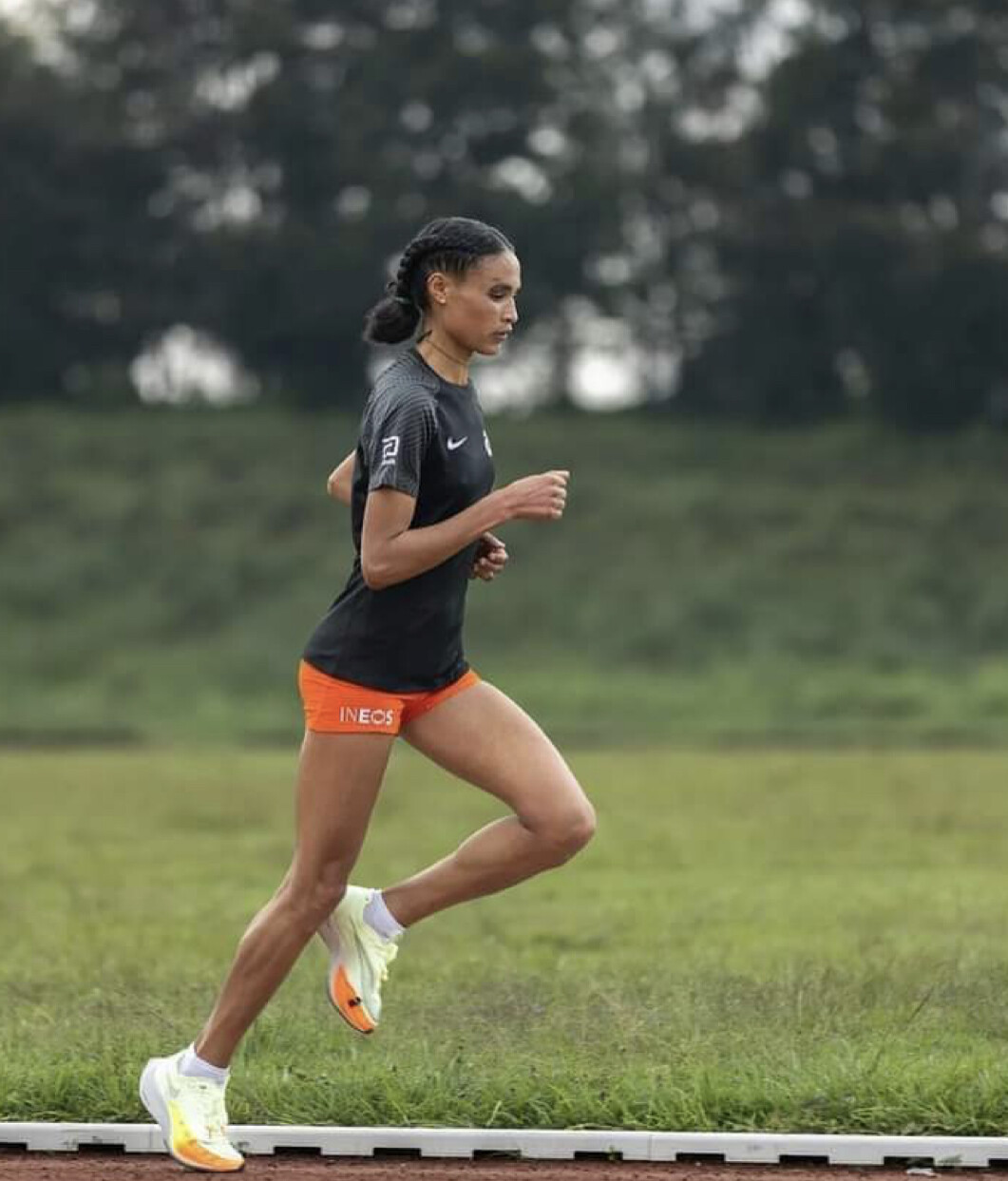
Gidey has found success in Valencia—it’s where she set two of her world records (5,000m and half-marathon). To date, she is the only woman to run under the 64- and 63-minute barrier for the half-marathon, which predicts she is ready for something fast on Sunday.
What attracts many of the world’s top marathoners to race in Valencia is the favourable weather and flat course. In the 2020 edition, 60 athletes achieved their qualification times for the Tokyo Olympics.
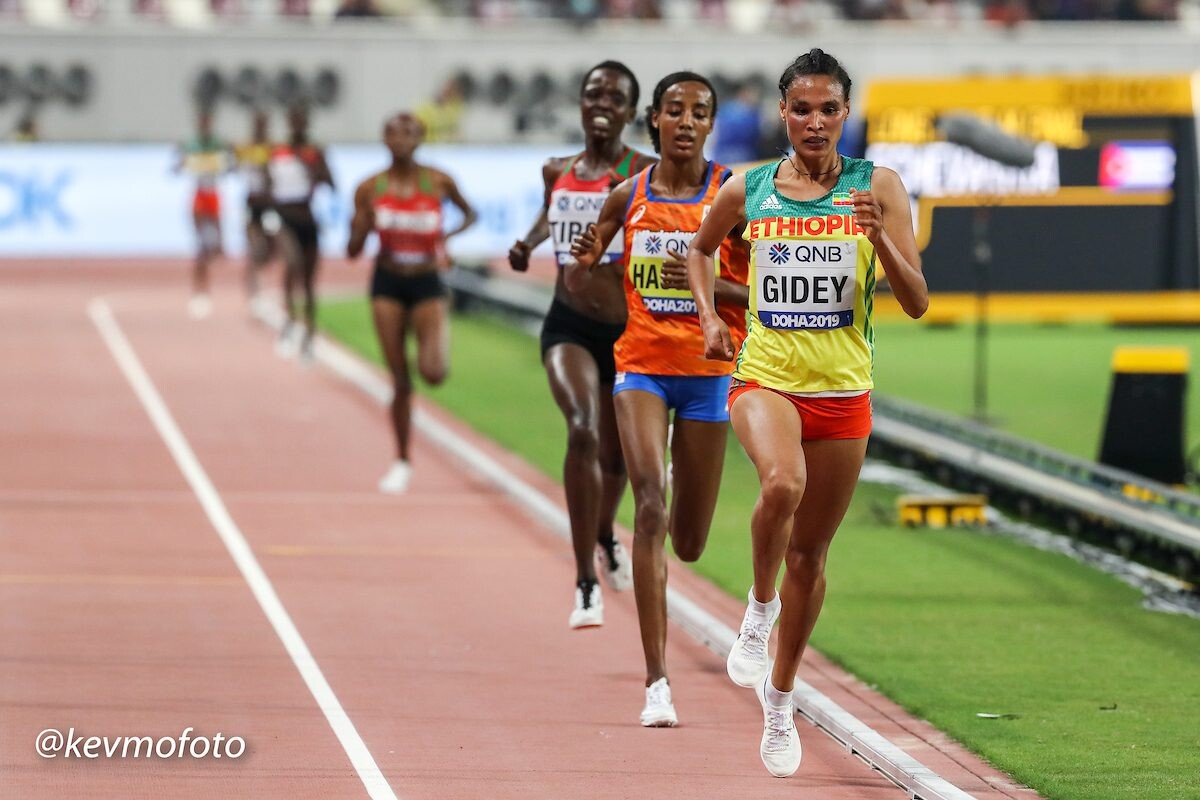
The weather for Sunday couldn’t be better for marathoning—the current forecast calls for 5 C with less than 10 km/h winds. It is reported that Gidey will have three male pacemakers guiding her, and she will be trying to run fast, says her agent.
Although Gidey has not come out and said she is chasing the world record, her previous times over 10K and 21.1 km have shown that she could be capable of something in the range of 2:16 to 2:12.
Until 2019, only one female marathoner had ever run under 2:16—Paula Radcliffe‘s 2:15:25 at the 2003 London Marathon. Since 2019, three women have broken the 2:16 mark, with Brigid Kosgei’s world record time of 2:14:04 at the 2019 Chicago Marathon leading the way. Her Kenyan compatriot Ruth Chepngetich came within 14 seconds of her record at this year’s Chicago Marathon, becoming the second-fastest female marathoner in history (2:14:18).
Letesenbet Gidey leads Sifan Hassan and the late Agnes Tirop at the 2019 World Championships in Doha, Qatar. Photo: Kevin Morris
Another time on Gidey’s mind is the Ethiopian national record of 2:15:37, which was run by Tigist Assefa at the 2022 Berlin Marathon.
Right now, Gidey is at the top of her game, and the only thing holding her back is her lack of marathon experience. Valencia offers her a chance to reach times no woman has touched, and on Sunday, we are likely to see something special.
Our prediction is something in the realm of 2:13-low, smashing the world record and achieving the title of the fastest debutante of all time.
(12/03/2022) ⚡AMPby Running Magazine
VALENCIA TRINIDAD ALFONSO
The Trinidad Alfonso EDP Valencia Marathon is held annually in the historic city of Valencia which, with its entirely flat circuit and perfect November temperature, averaging between 12-17 degrees, represents the ideal setting for hosting such a long-distance sporting challenge. This, coupled with the most incomparable of settings, makes the Valencia Marathon, Valencia, one of the most important events in...
more...Olympic 5,000-Meter Champion Murray Halberg Dies at 89
Murray Halberg, gold medalist in one of the most dramatic distance races in Olympic history and a four-time world-record holder, died in Auckland, New Zealand, on November 30. He was 89 years old.
Halberg achieved victory in the 1960 Olympic 5,000 meters with a decisive surprise attack at three laps to go. The feat is remembered as one of the great tactical triumphs in the history of world-class distance racing. He also showed the sheer speed necessary to run world records at 2 miles (twice), 3 miles, and in the 4 x 1-mile relay for the New Zealand team. He was the first New Zealander to break 4:00 for the mile.
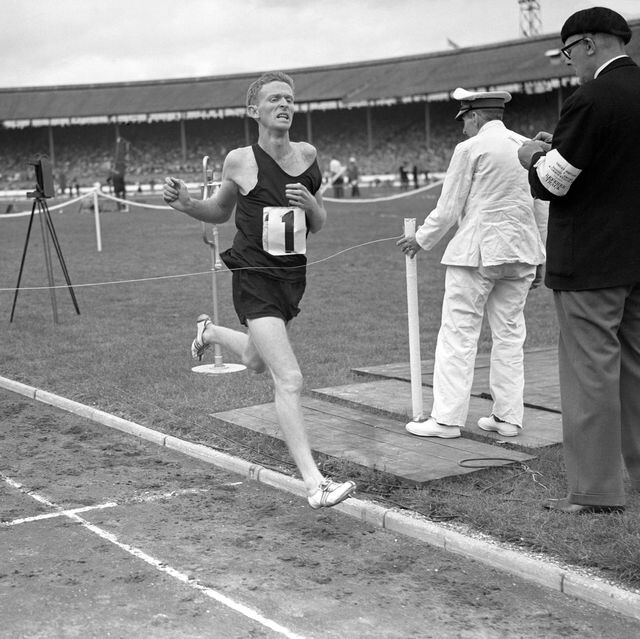
Sir Murray Halberg became a runner after a rugby injury at age 17 left him with a disabled left arm, and he linked with coach Arthur Lydiard after disappointment in the 1956 Olympic 1500 meters. He was the first runner to attain world stardom under Lydiard’s guidance.
His first major success was winning the 3-mile title in the 1958 Commonwealth Games. His Olympic win at Rome in 1960 came less than an hour after another Lydiard athlete, Peter Snell, won the 800 meters. The manner of both victories made Lydiard famous, and put New Zealand on the map of world distance running. Both showed the world the combination of pace and endurance attained through Lydiard’s structured high-mileage training. Halberg also finished fifth in the 10,000 meters at the Rome Olympics.
He made successful tours of the American indoors circuit, breaking the world indoor record for 2 miles (8:34.4) in 1961. He claimed wryly that his withered left arm was an advantage on the tight bends of indoors racing.
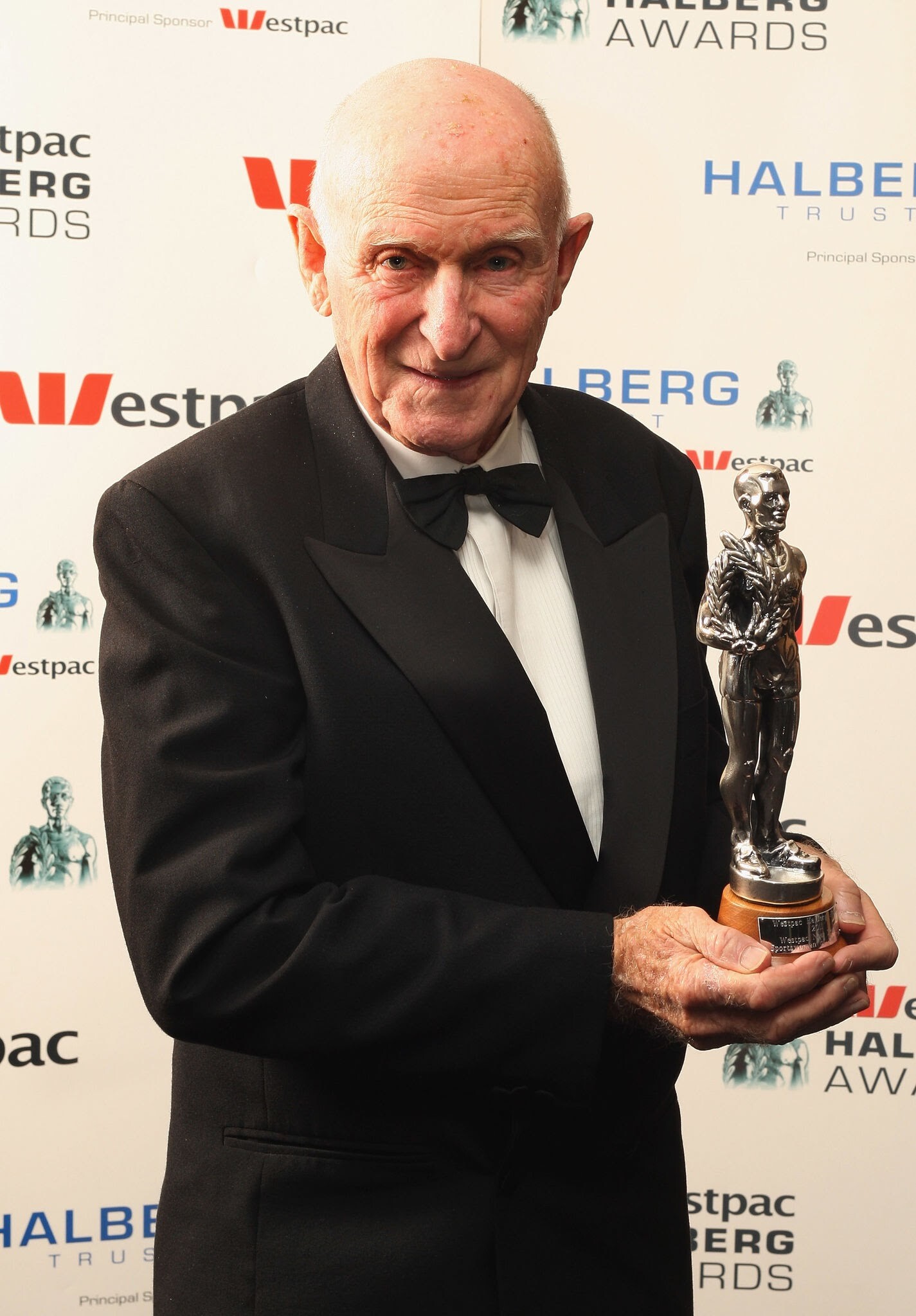
Halberg went on to repeat as Commonwealth 3-mile champion in 1962, defeating one of the strongest fields ever, with Ron Clarke, Bruce Kidd, Bruce Tulloh, Albie Thomas, Derek Ibbotson, and Kip Keino behind him. By that time he held the world record for 2 miles (8:30.0) and 3 miles (13:10.0). Athletes as great as 1960 Olympic 1500-meter champion Herb Elliott, Kidd, and Tulloh regarded Halberg as their most feared, competitive, and resilient opponent. He was world top-ranked at 3 miles/5,000 meters every year from 1960 to 1963, but at the 1964 Olympics he was affected by Tokyo’s polluted air, and finished seventh in the 10,000 won by Billy Mills.
Halberg gave his post-competition life to charitable work, creating the Murray Halberg Trust for Crippled Children in 1963, which became the Halberg Foundation, and hosted the annual New Zealand Sports Awards, known as the Halberg Awards. He received a knighthood for services to sport and child welfare, the first New Zealand athlete to receive the honor.
Halberg is the subject of A Clean Pair of Heels: The Murray Halberg Story by Murray Halberg and Garth Gilmour, and has in-depth profiles in The Lonely Breed, by Ron Clarke and Norman Harris and When Running Made History, by Roger Robinson.
(12/03/2022) ⚡AMPby Runner’World
Kenyan Edna Kiplagat eyes second title in Boston
Former champion Edna Kiplagat is the only elite Kenyan female athlete invited for the Boston Marathon due for April 17, next year.
Kiplagat returns to the Boston Marathon course for the sixth time, having won in 2017 in two hours, 21 minutes and 52 second besides finishing second twice in 2019 in 2:24:13 and 2021 in 2:25:09.
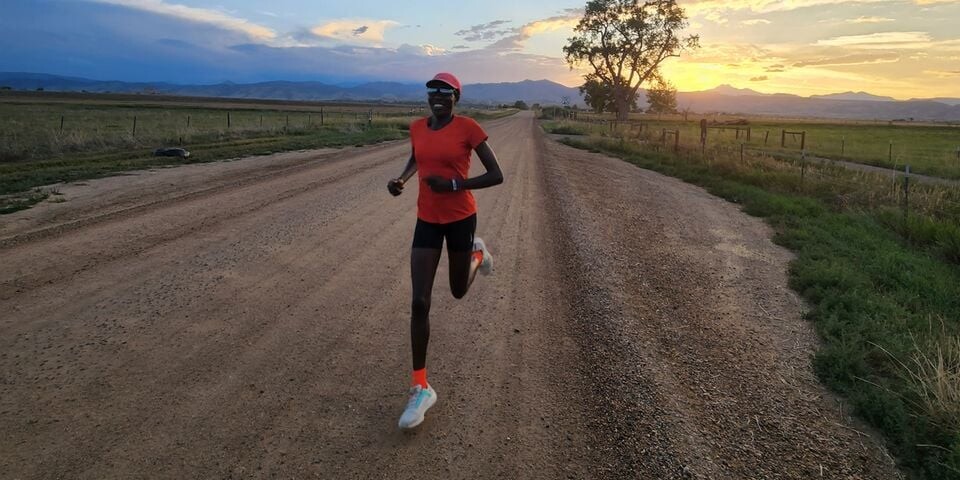
However, the organisers of the Boston Marathon have now scaled Kiplagat to winner’s position this year after the initial winner Diana Kipyokei failed a doping test in October this year.
Kiplagat, 43, settled ninth in 2018 (2:47:14) behind winner, home athlete Desiree Linden and fourth in 2:21:52 this year where Olympic marathon champion, Peres Jepchirchir, reigned supreme 2:21:02.
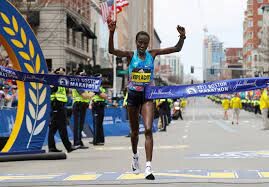
Kiplagat, the 2011 and 2013 world champion, will face the reigning world marathon champion Gotytom Gebreslase from Ethiopia, Linden, who is eying to recapture the crown, and 2016 champion Atsede Baysa of Ethiopia.
Injured Jepchirchir will be missing in action.
Kiplagat set a new Masters Division record on her way to finishing fourth at the 2022 Boston Marathon in 2:21:40, and shows no signs of stopping.
While this will be Gotytom Gebreslase’s first Boston Marathon, it is far from her first time racing in Boston.
The Ethiopian world champion has finished runner-up at the Boston Half Marathon twice and has placed in the top-five three times at the Boston 5km.
Beyond winning a world title in 2022, Gebreslase placed third at both the Berlin Marathon and New York City Marathons this year.
“I am very happy to compete in the Boston Marathon 2023, as Boston is one of the most famous races in the world,” Gebreslase told the Boston Marathon website.
Gebreslasem said it has long been her dream to win the race.
" I raced many times in Boston in indoor races and then on the roads. So, I am happy to bring my career full circle as the World Champion with a chance to add the Boston Marathon title,” said Gebreslase.
(12/03/2022) ⚡AMPby Ayumba Ayodi
Boston Marathon
Among the nation’s oldest athletic clubs, the B.A.A. was established in 1887, and, in 1896, more than half of the U.S. Olympic Team at the first modern games was composed of B.A.A. club members. The Olympic Games provided the inspiration for the first Boston Marathon, which culminated the B.A.A. Games on April 19, 1897. John J. McDermott emerged from a...
more...

